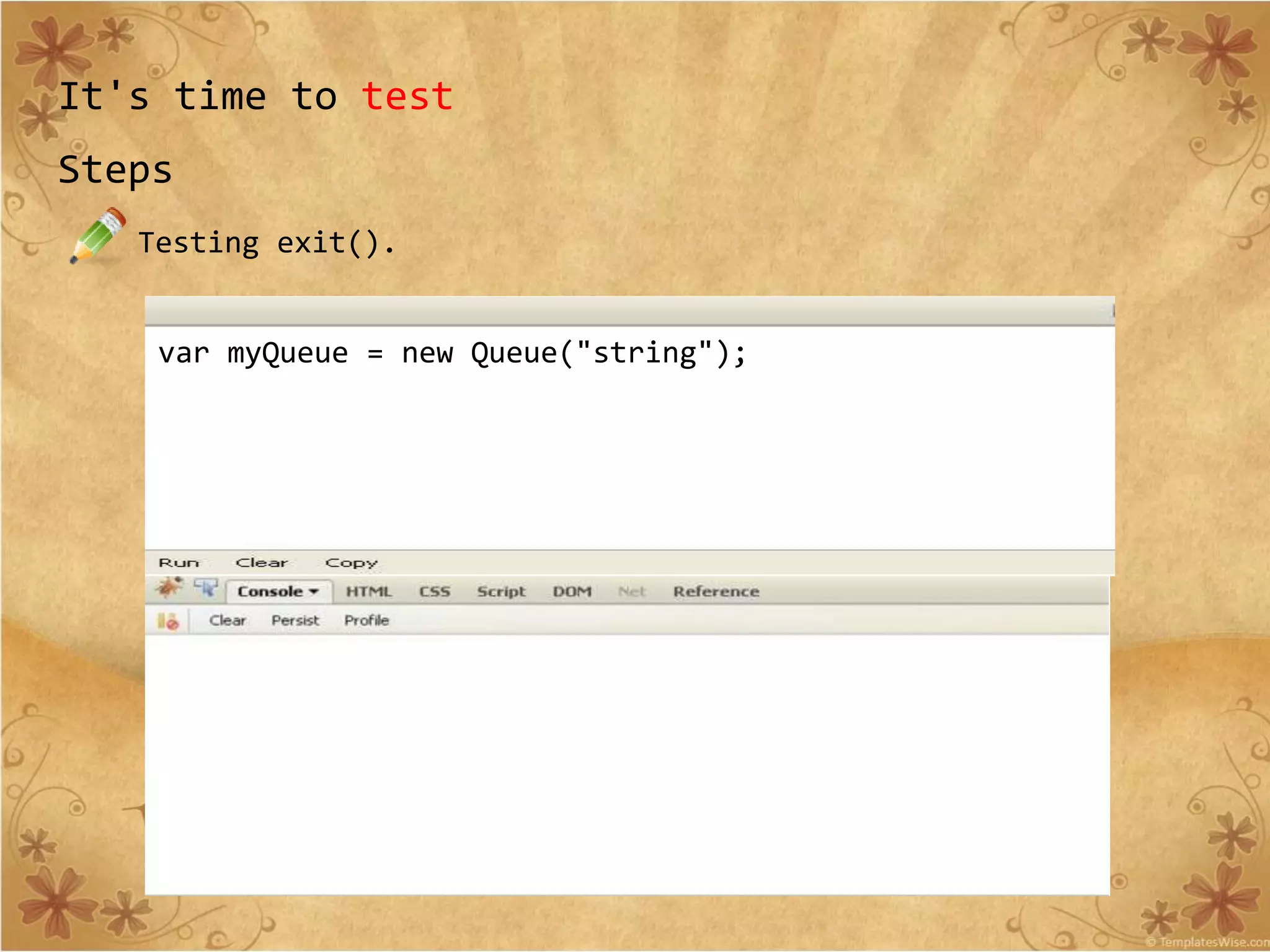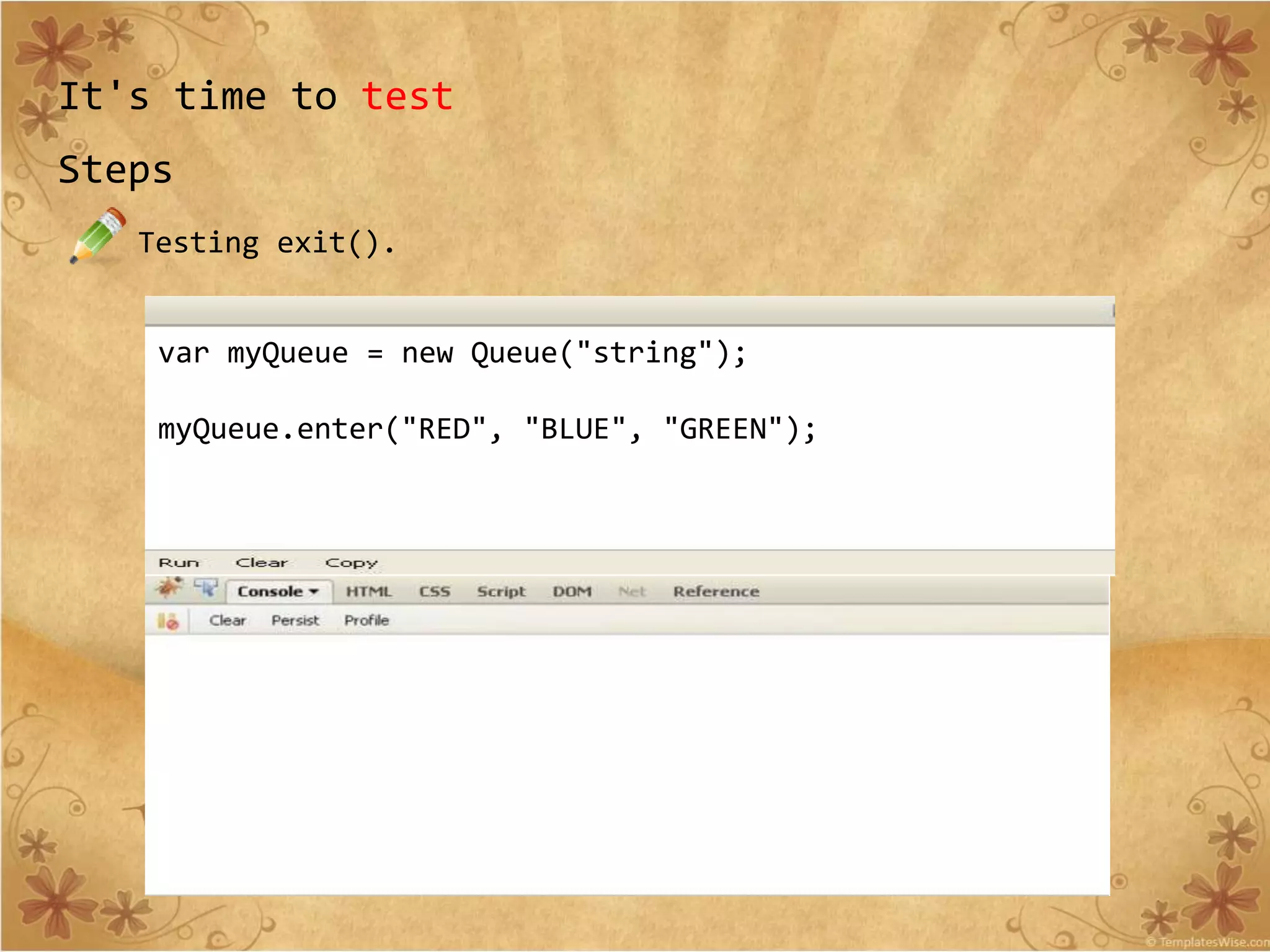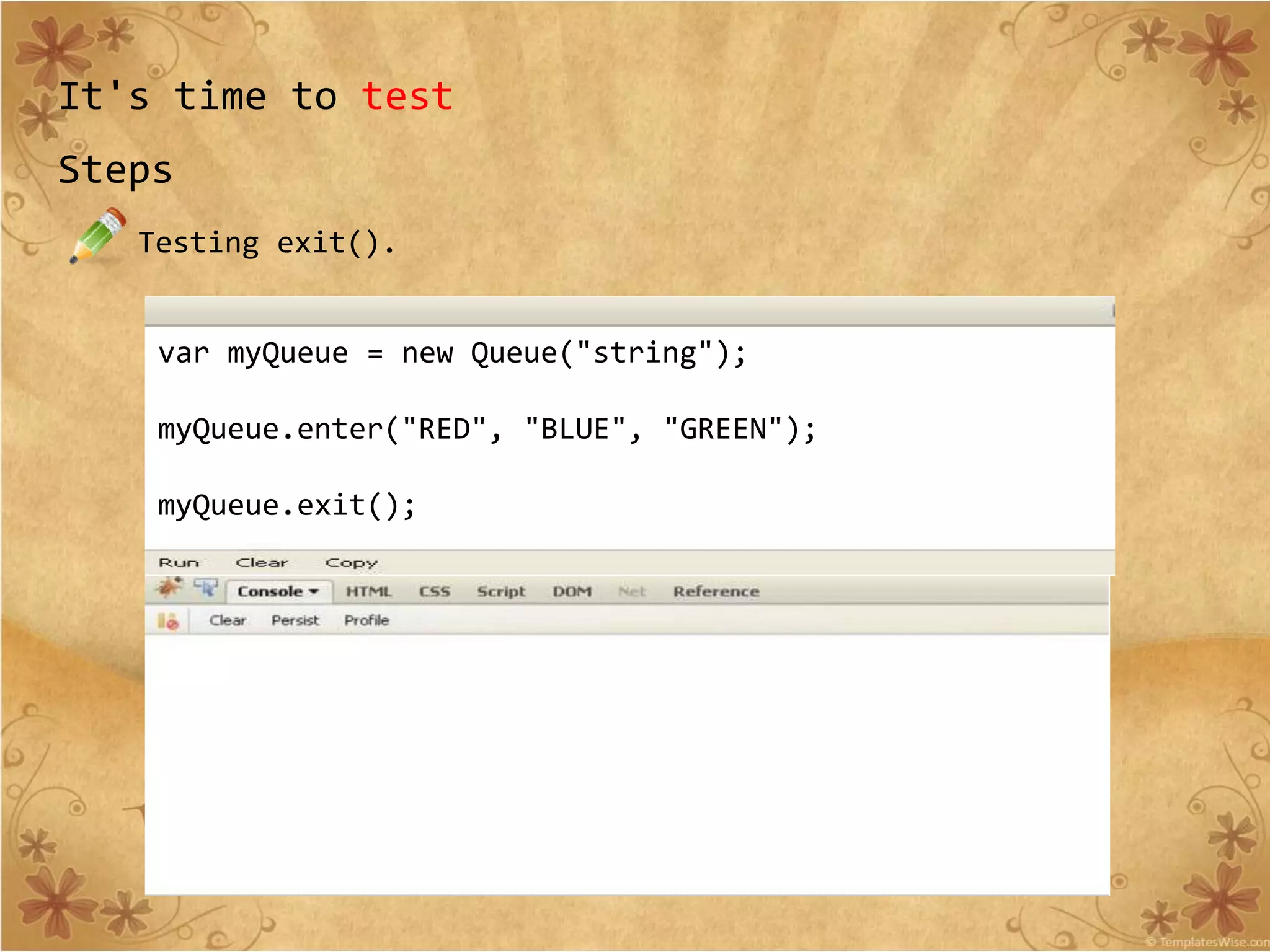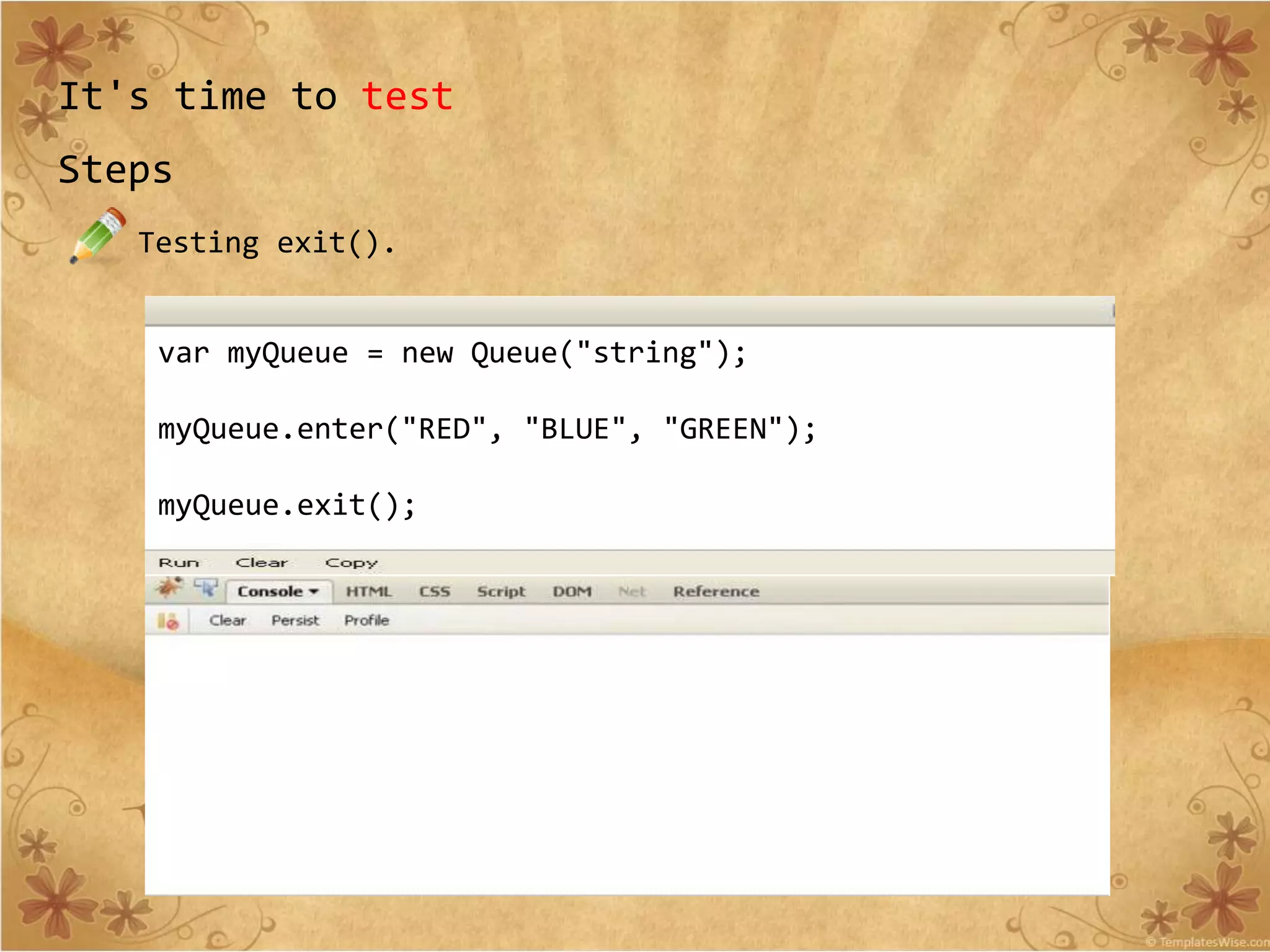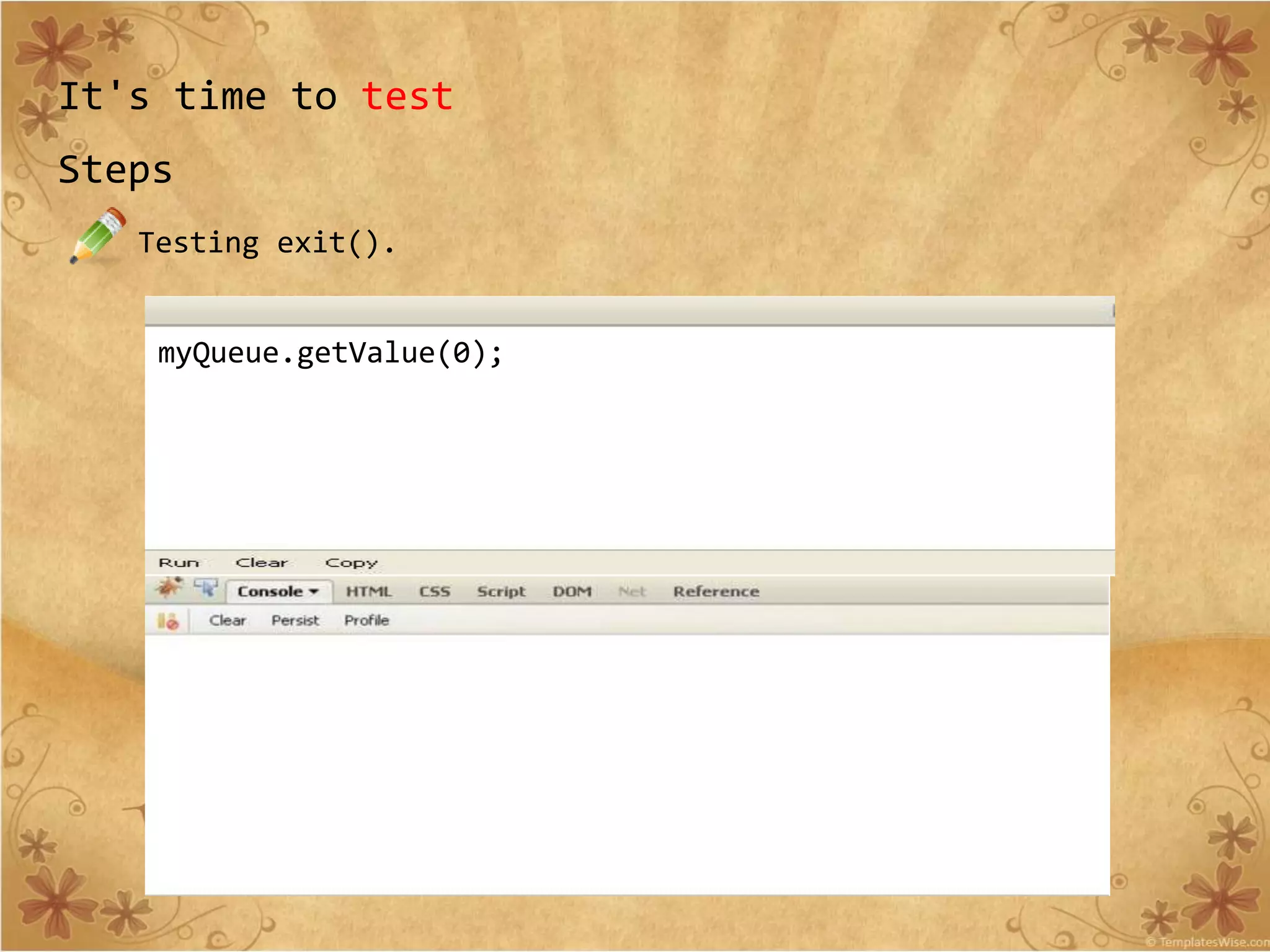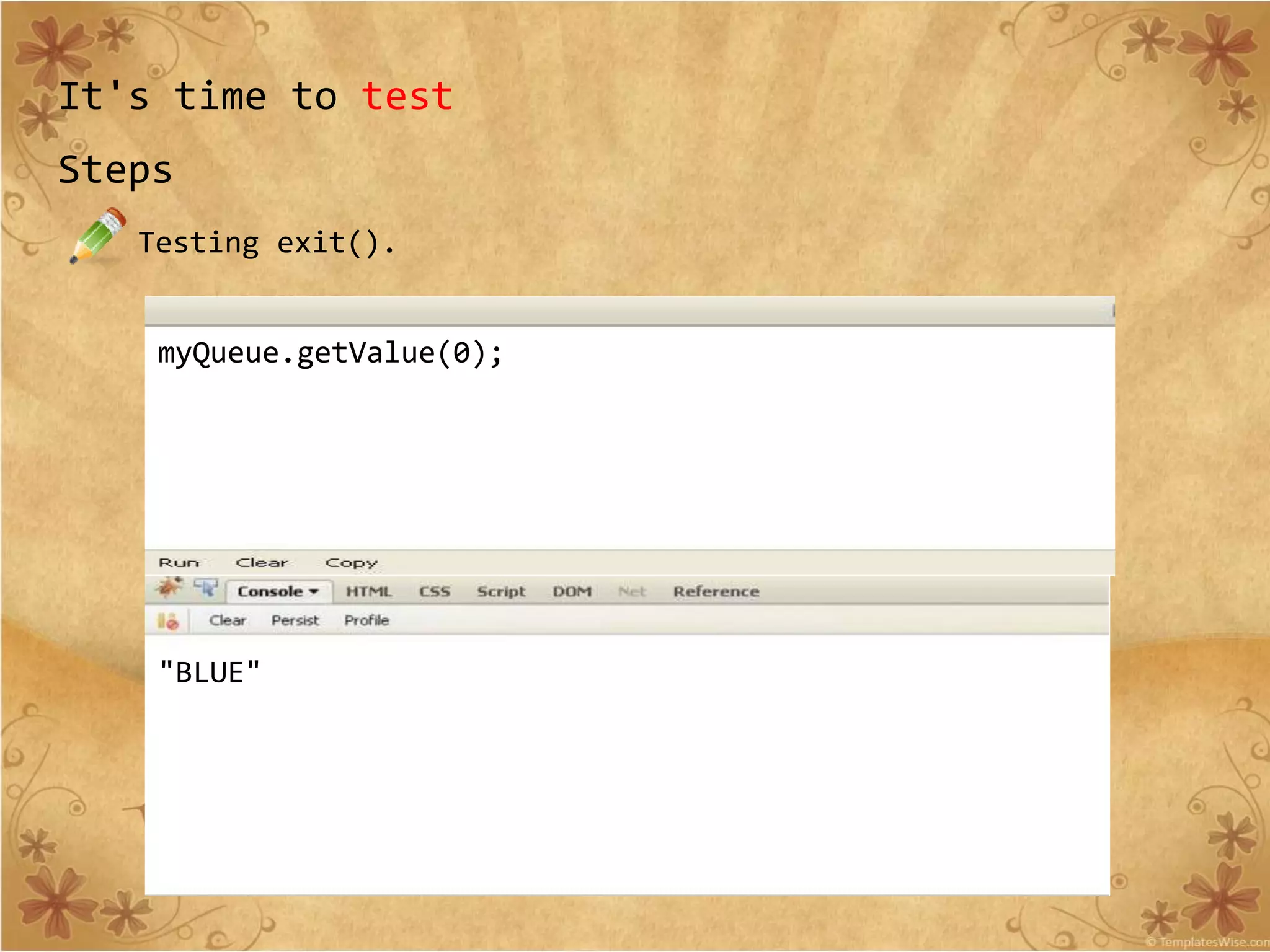This document discusses extending JavaScript by creating type-safe collections like stacks and queues. It provides a plan and implementation for creating a Stack class with methods like push(), pop(), getValue() and setValue(). The same approach is then used to create a Queue class, with the only difference being the exit() method removes items from the front rather than back of the internal array. The document ends by demonstrating how to test the classes.
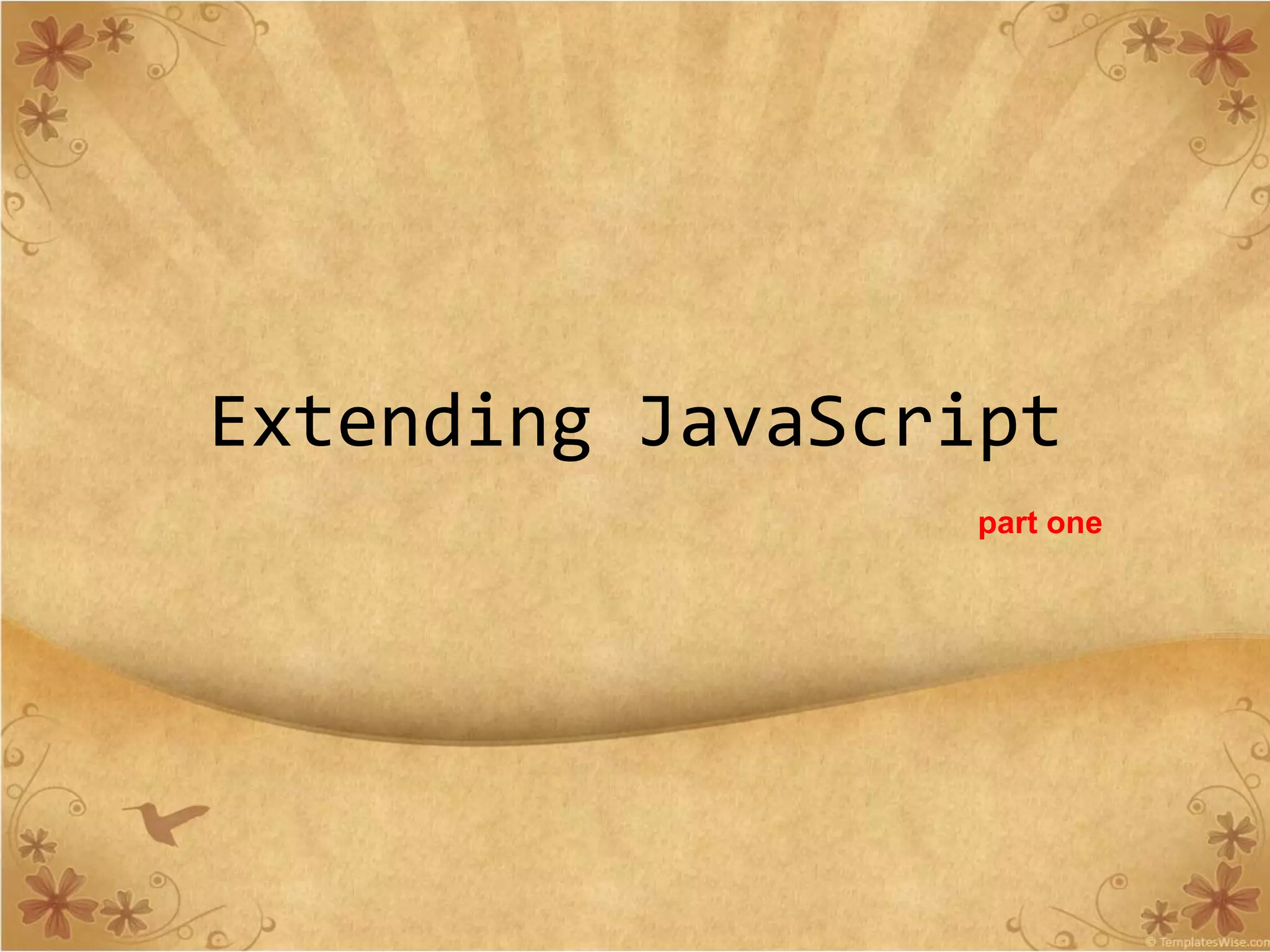
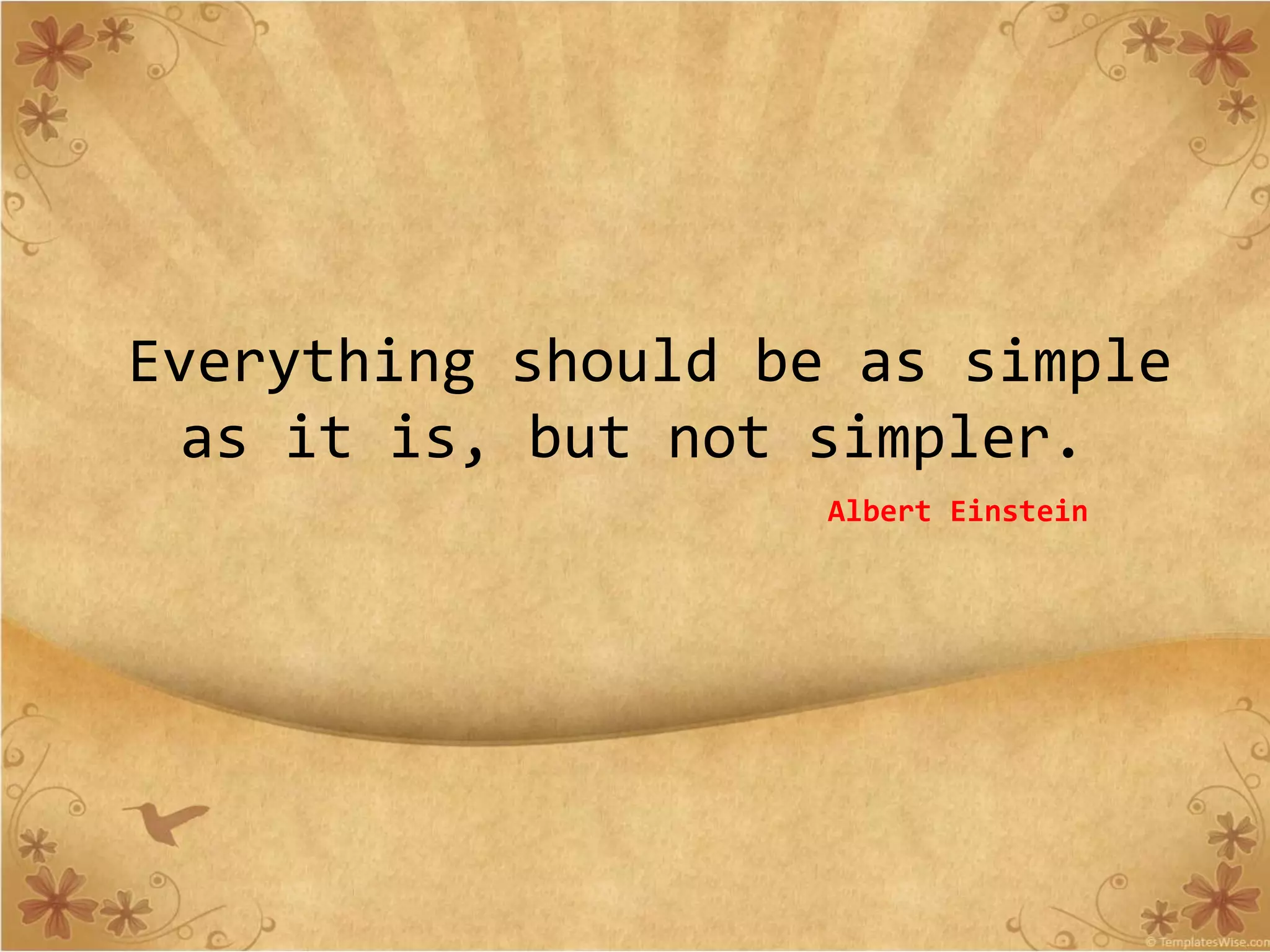
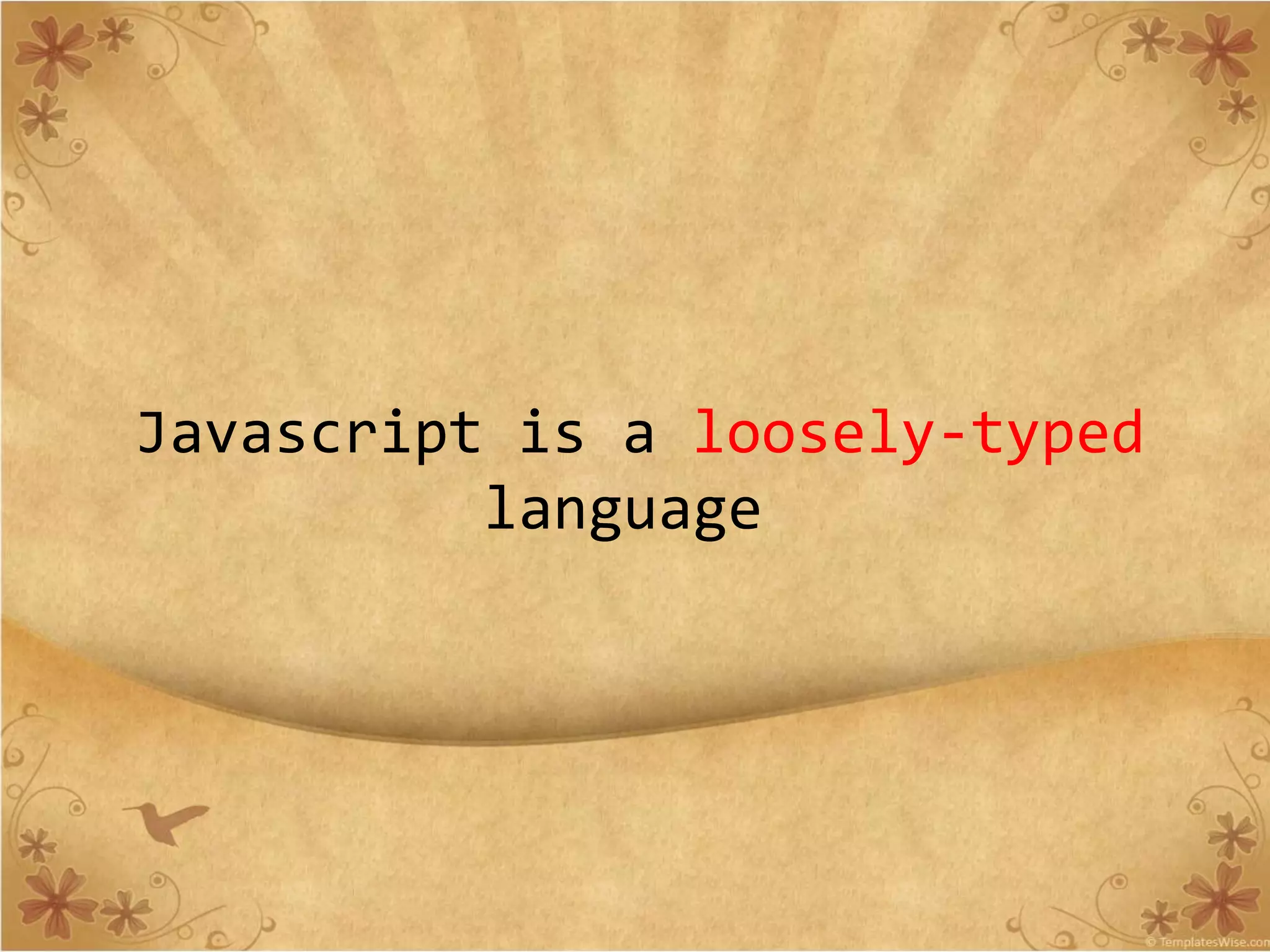
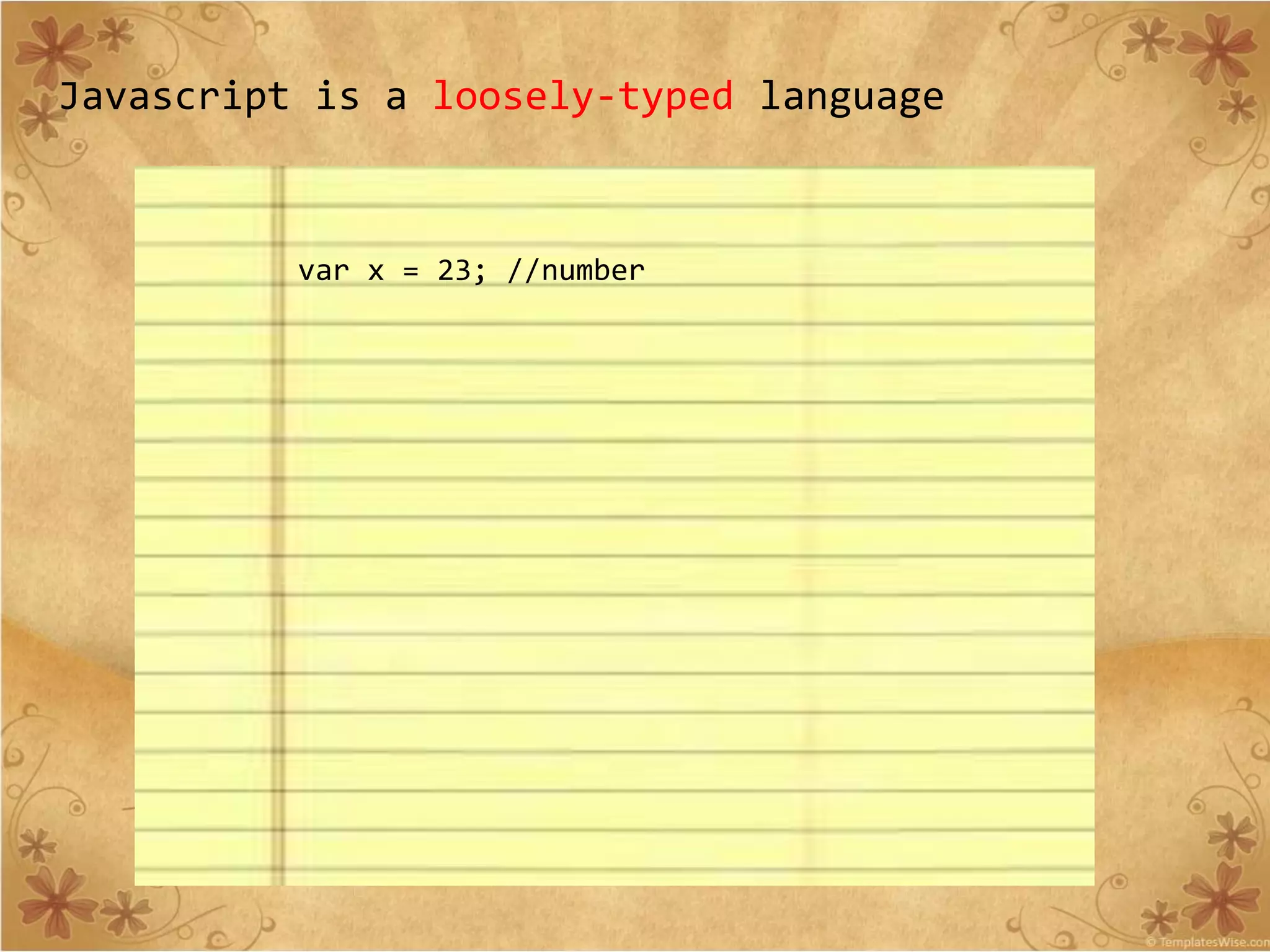
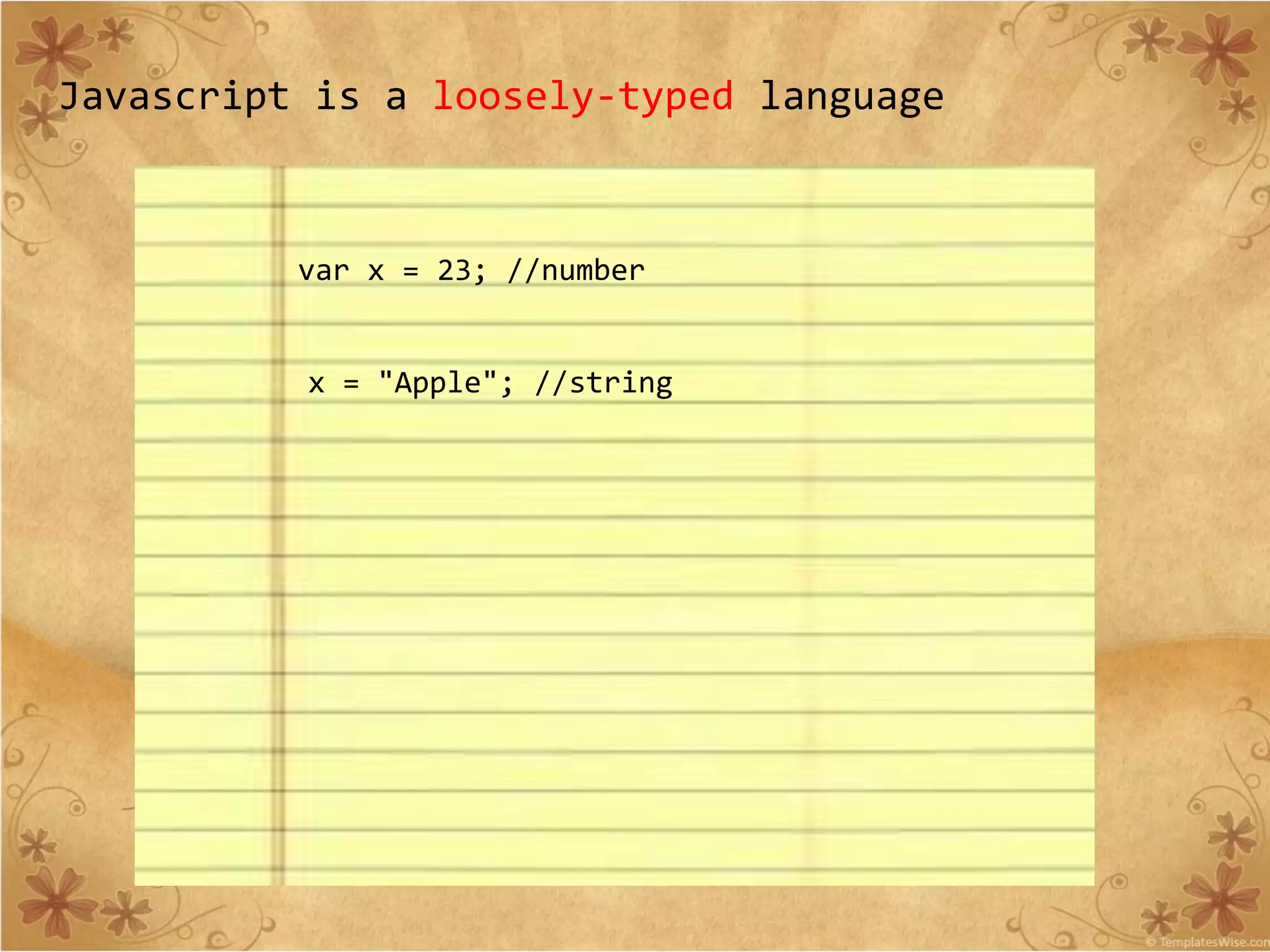
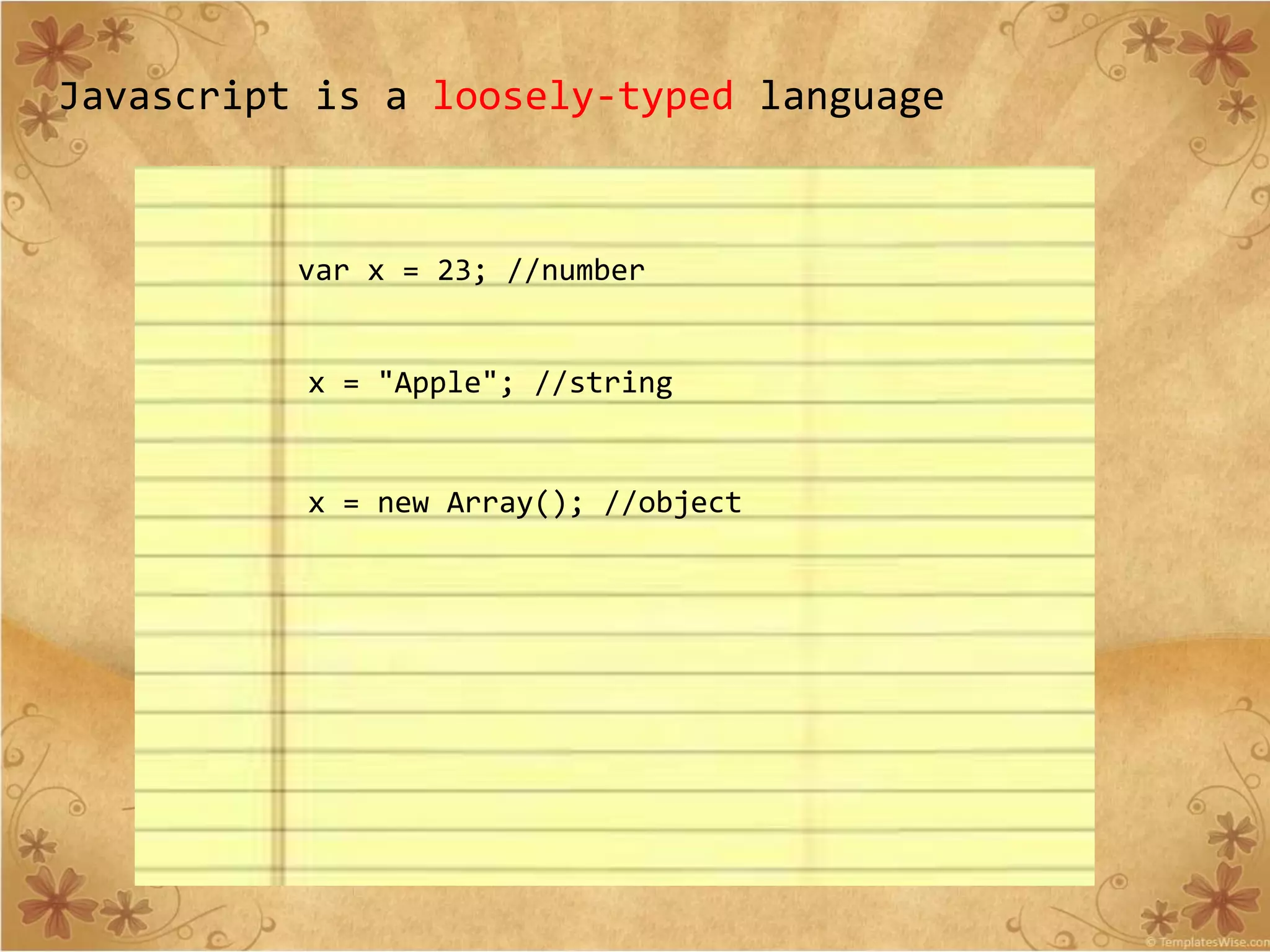
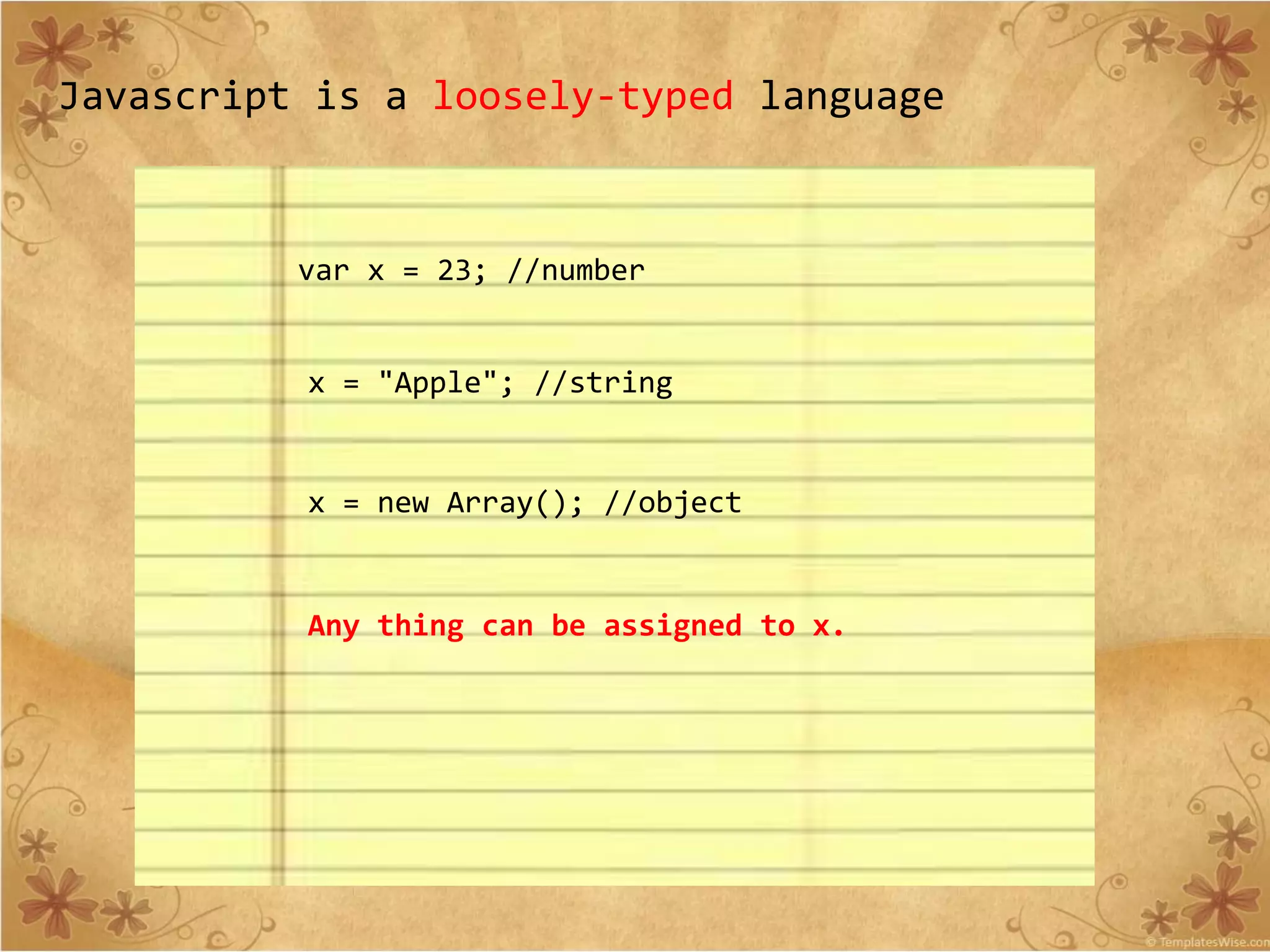

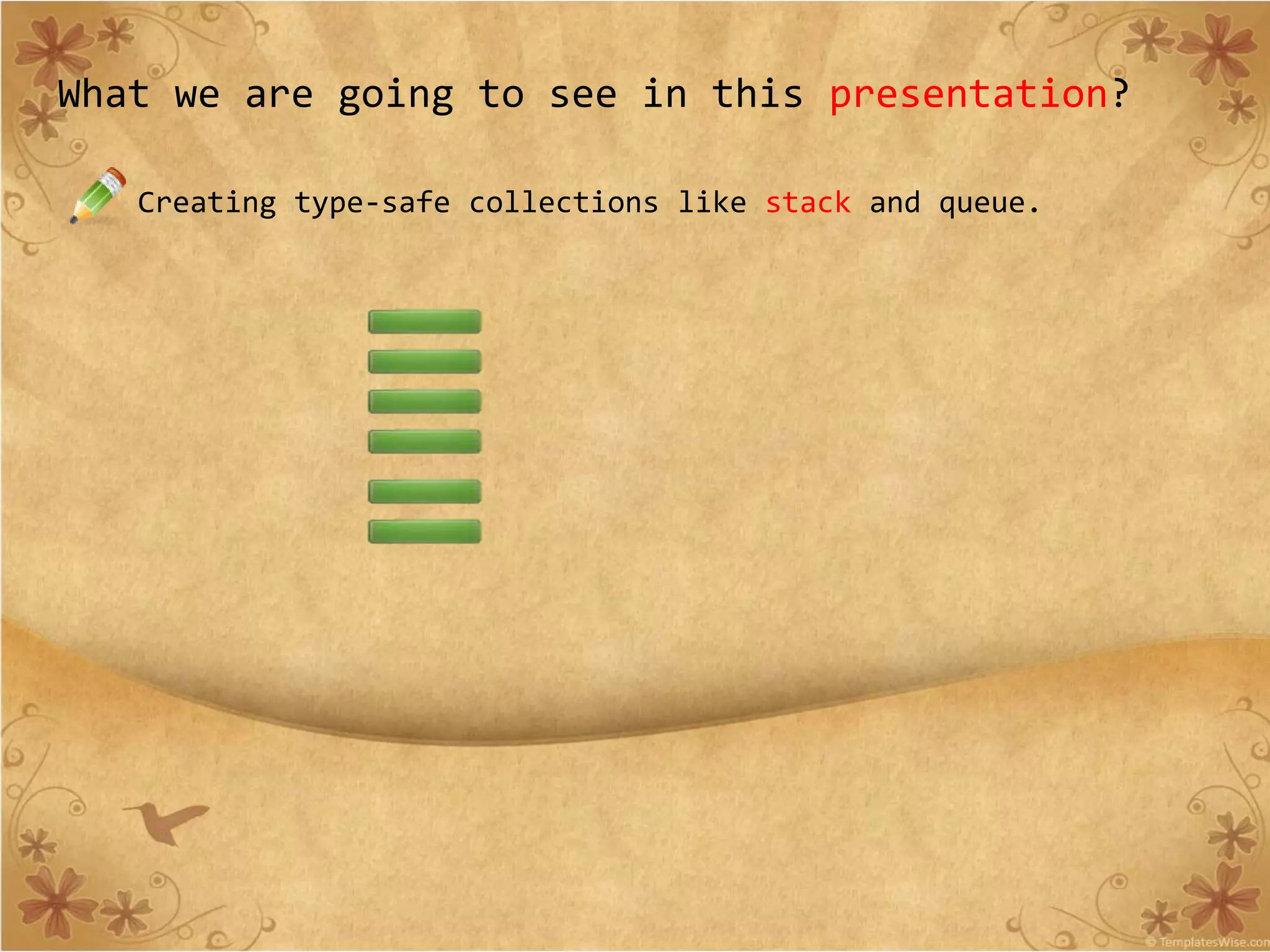
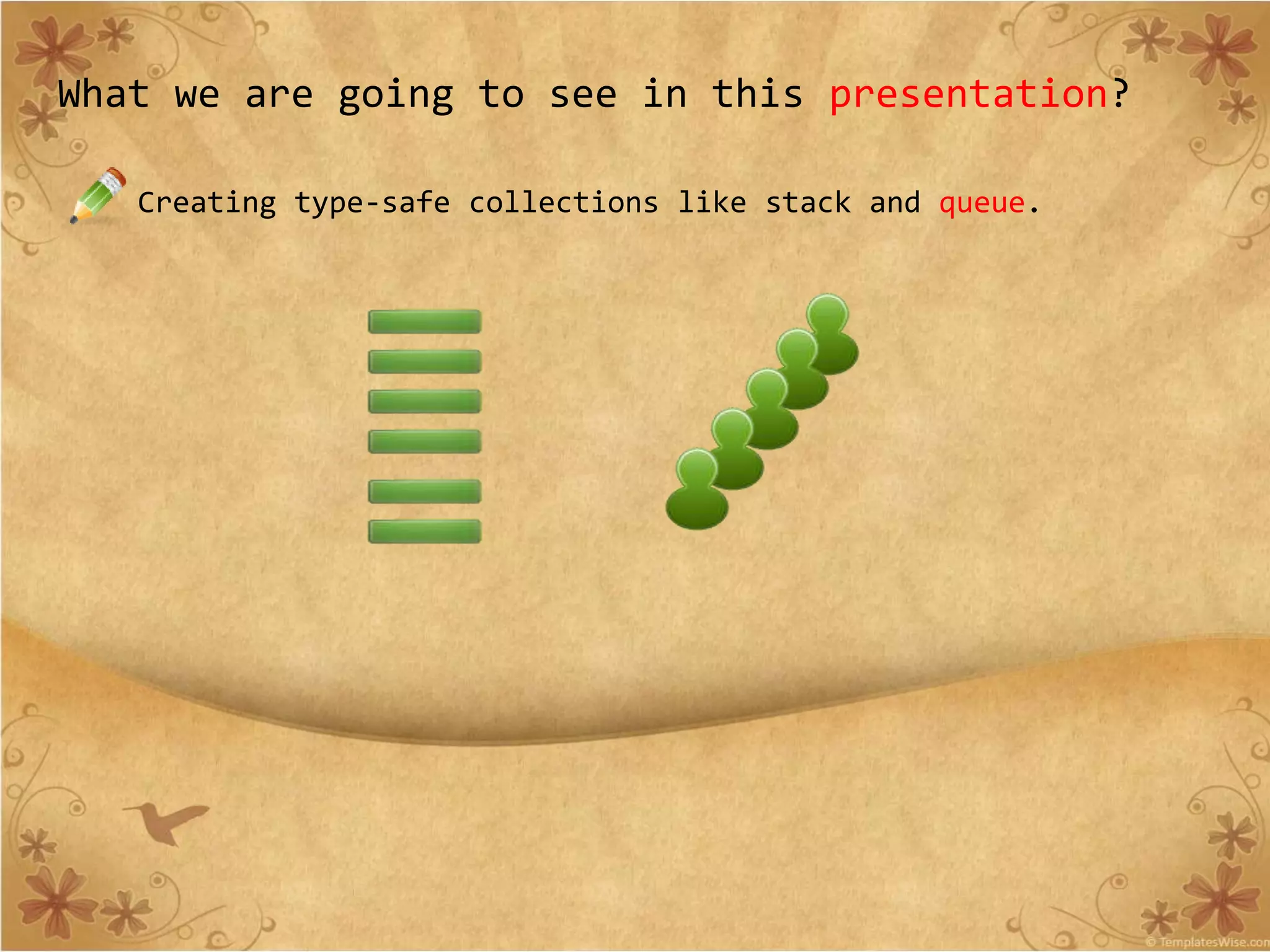
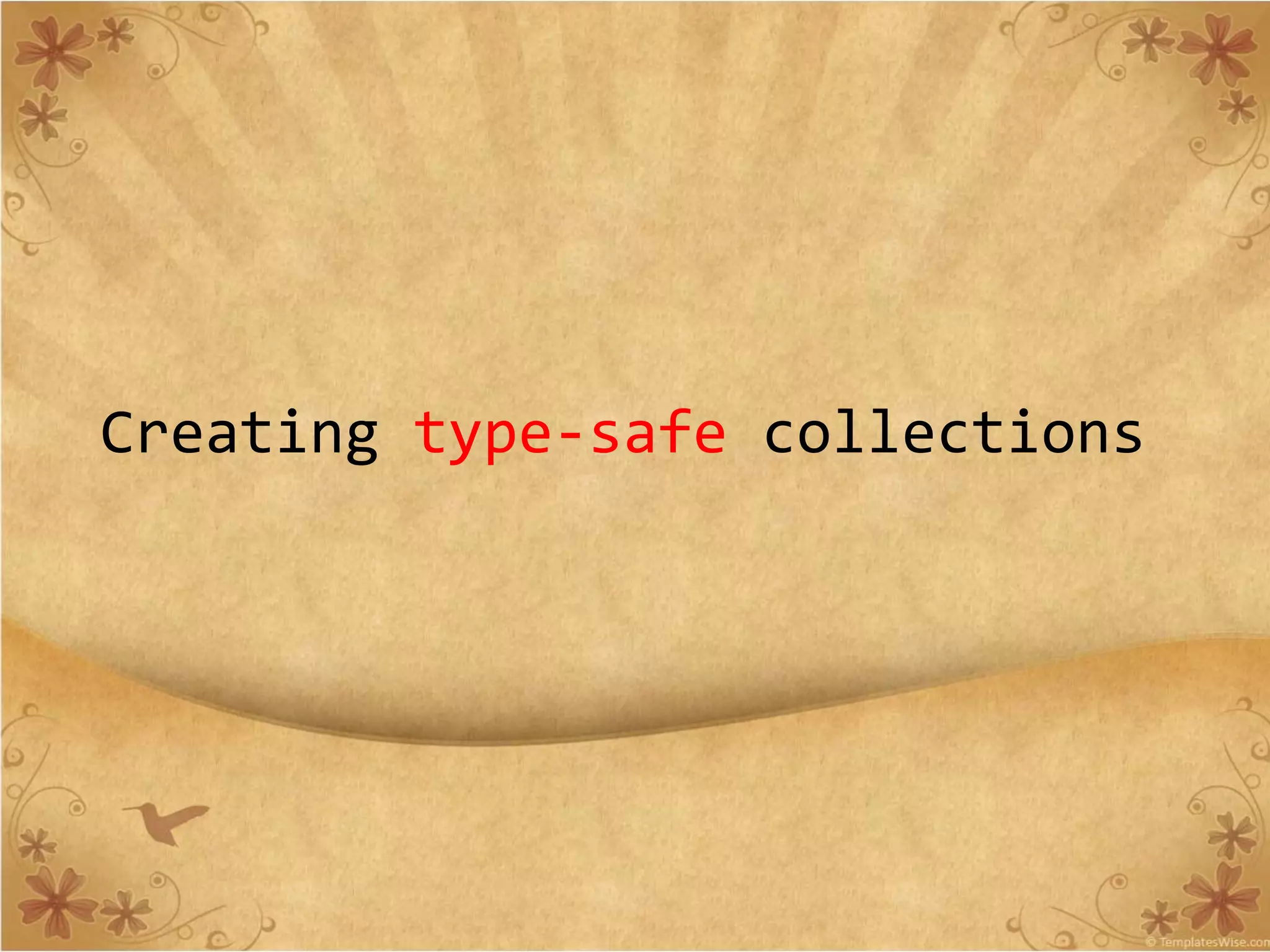
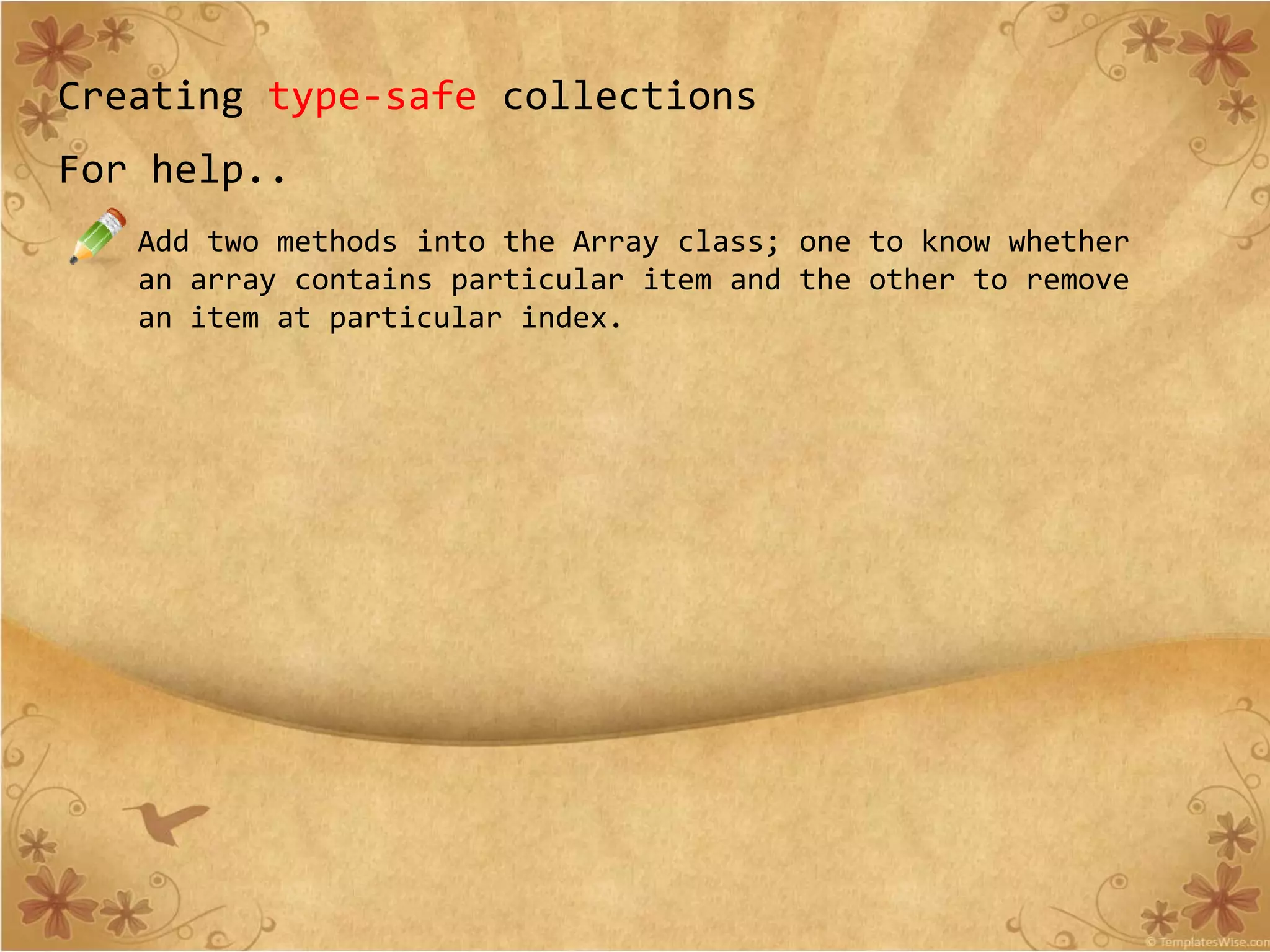
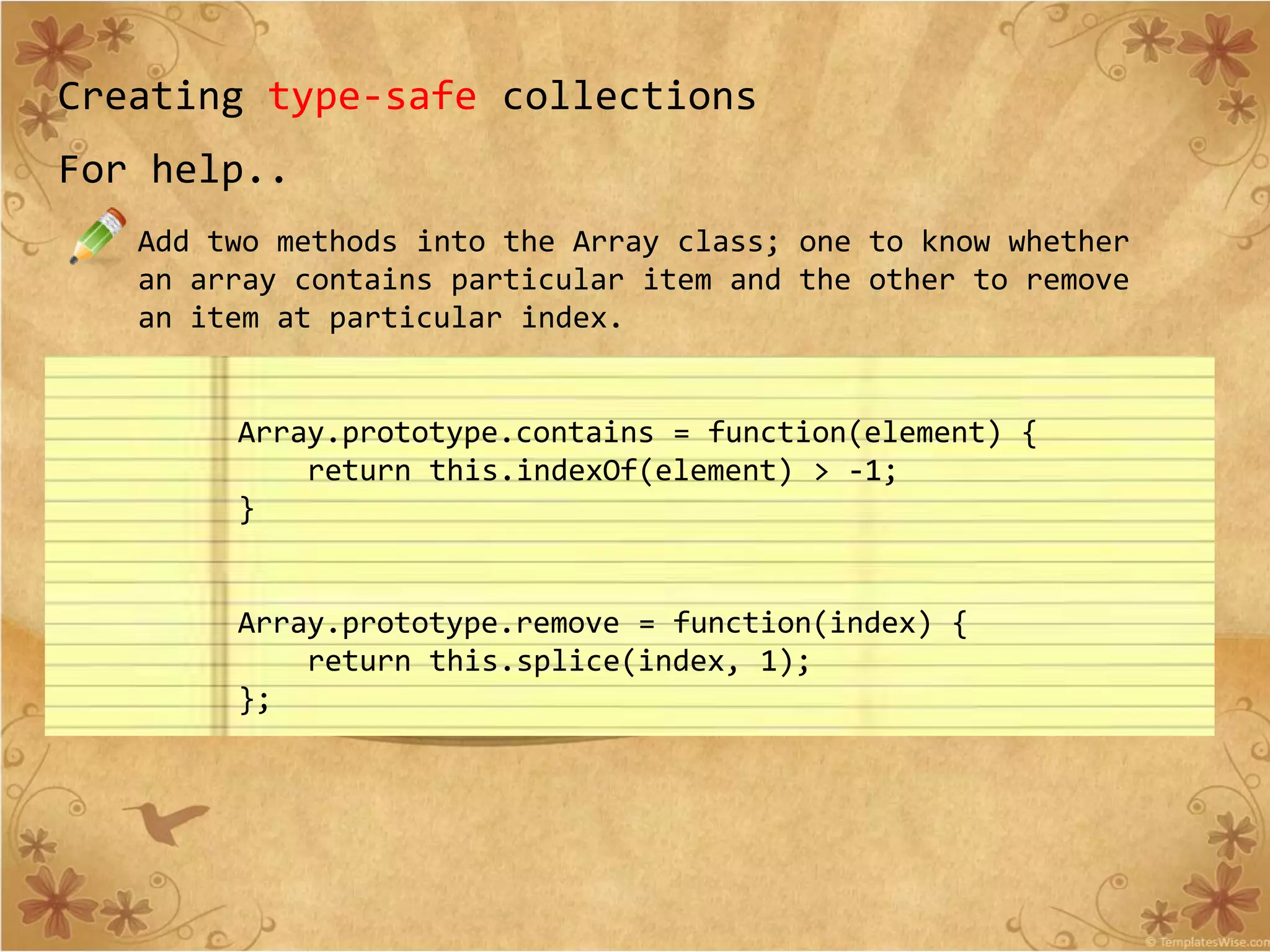
![Creating type-safe collectionsFor help..Create an array that contains the primitive types.var primitives = ["number", "string","object","boolean","function"];](https://image.slidesharecdn.com/extendingjavascriptpartone-100822092752-phpapp01/75/Extending-javascript-part-one-14-2048.jpg)

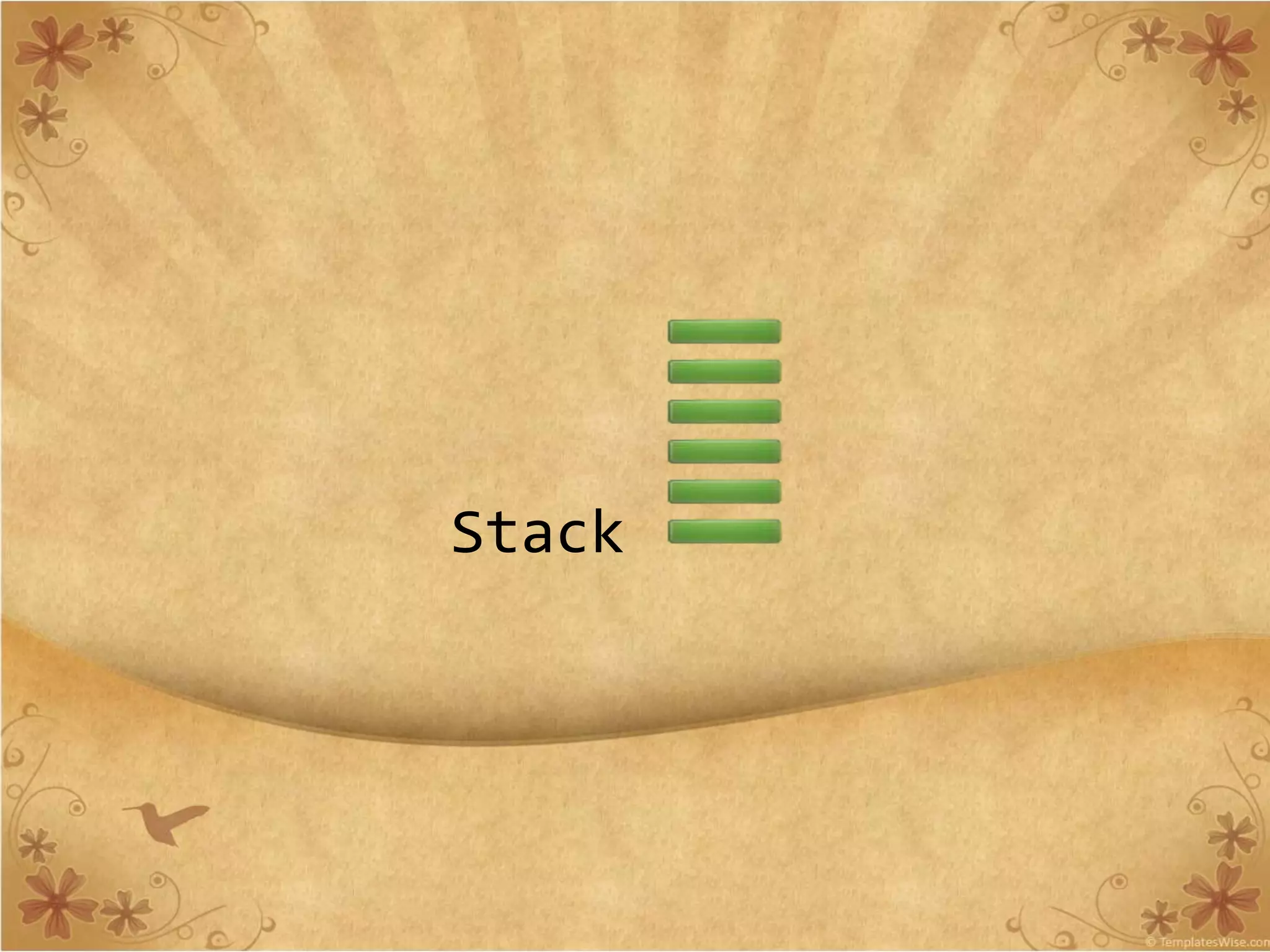
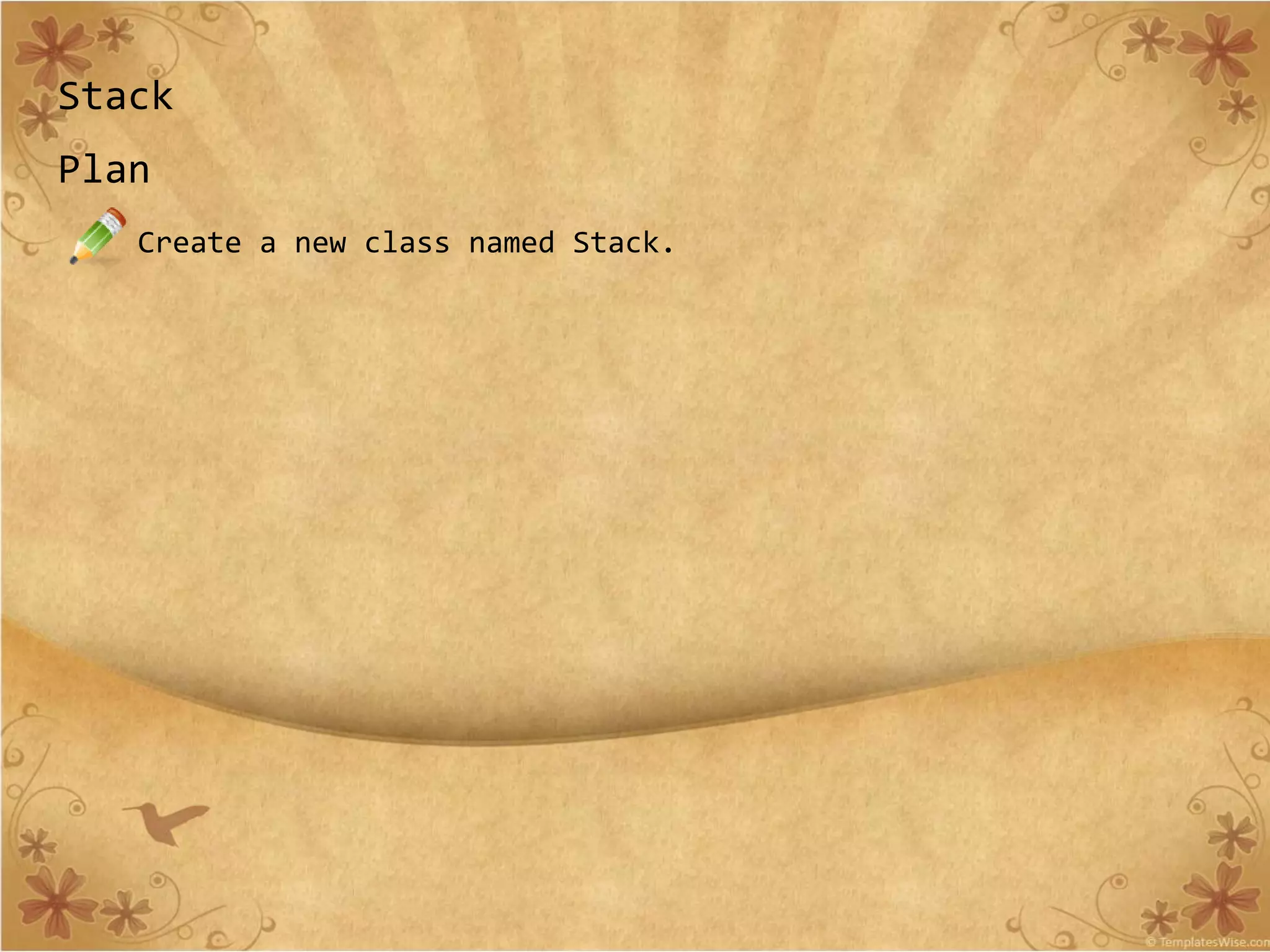
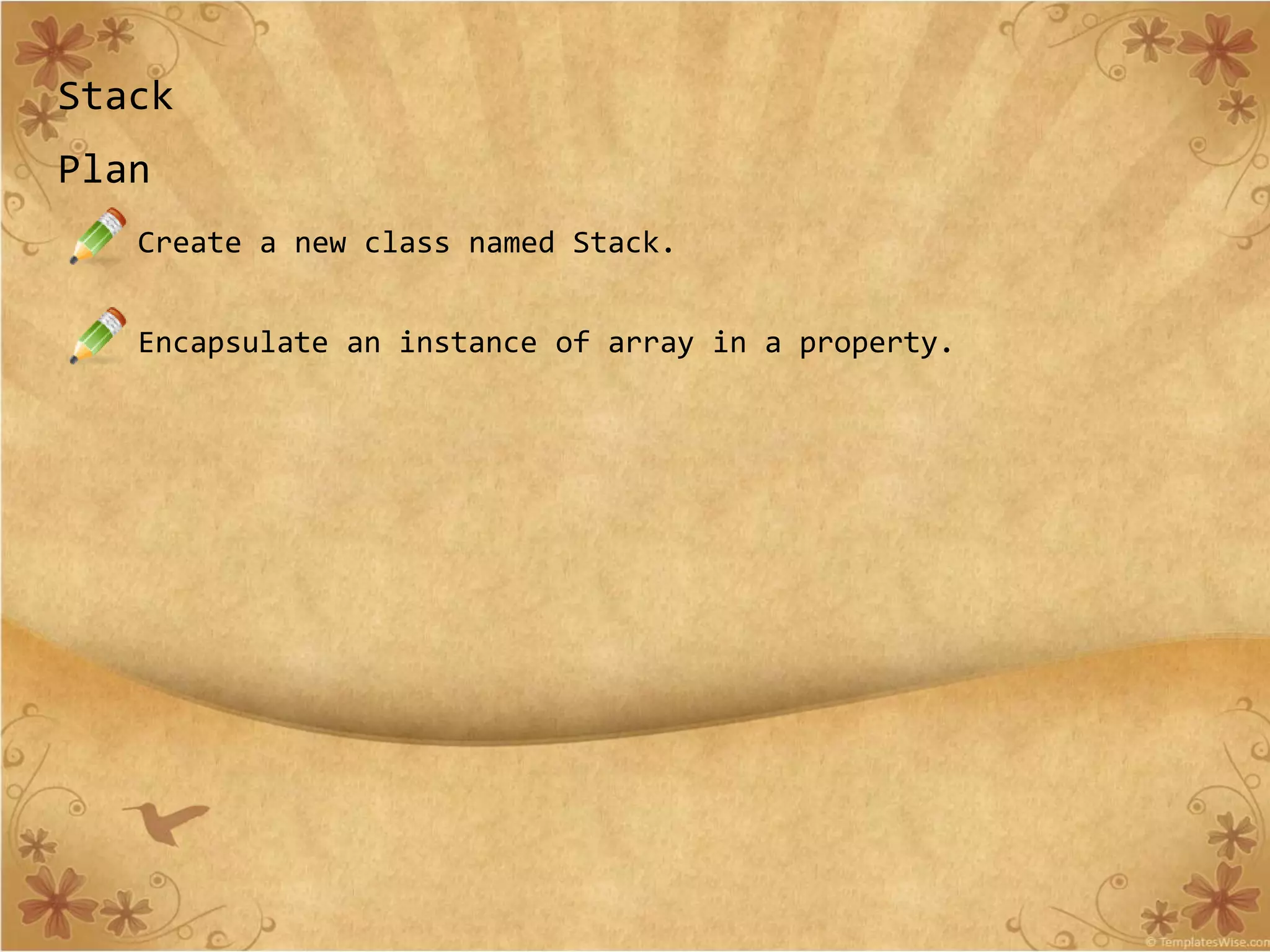
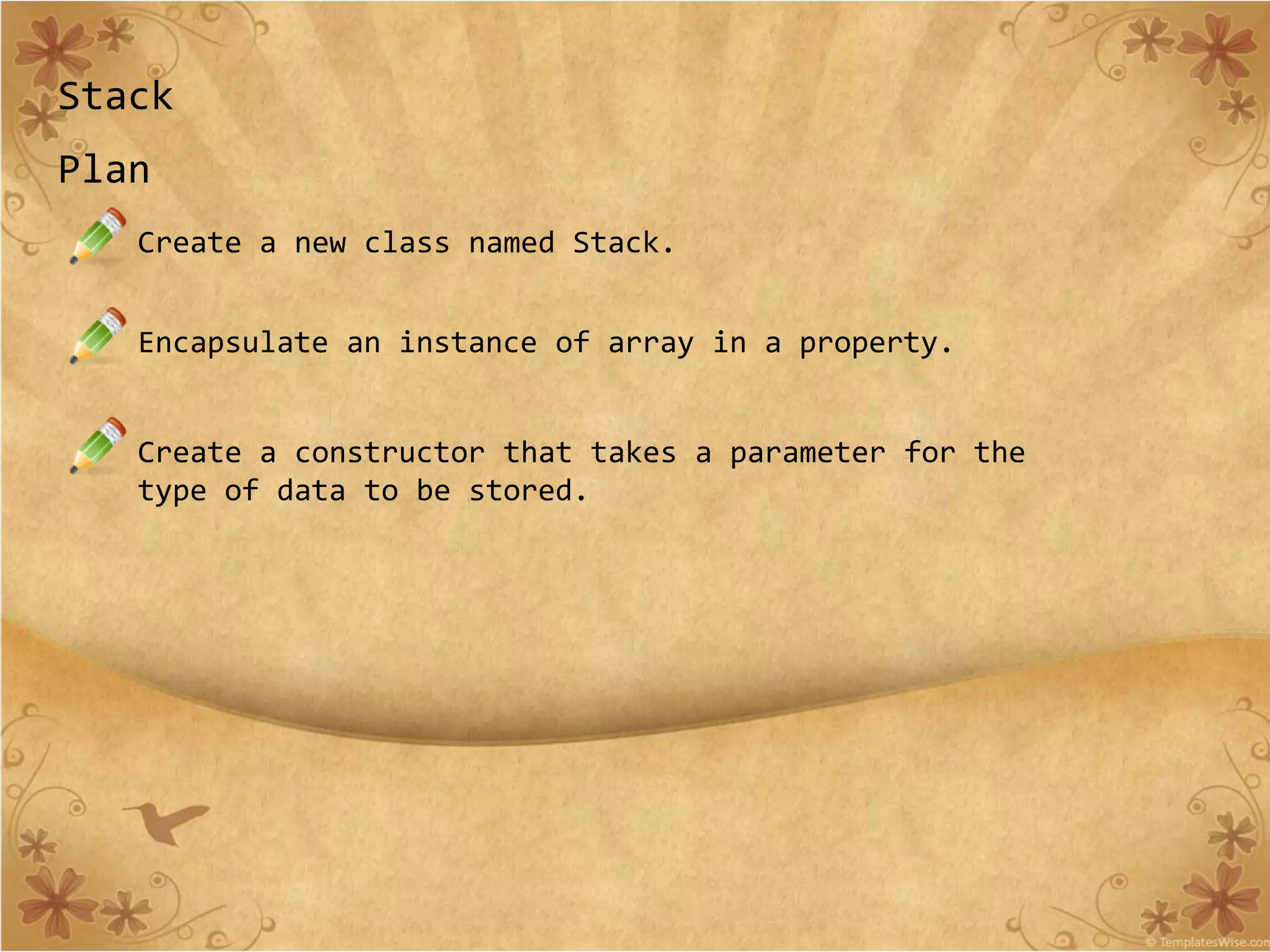
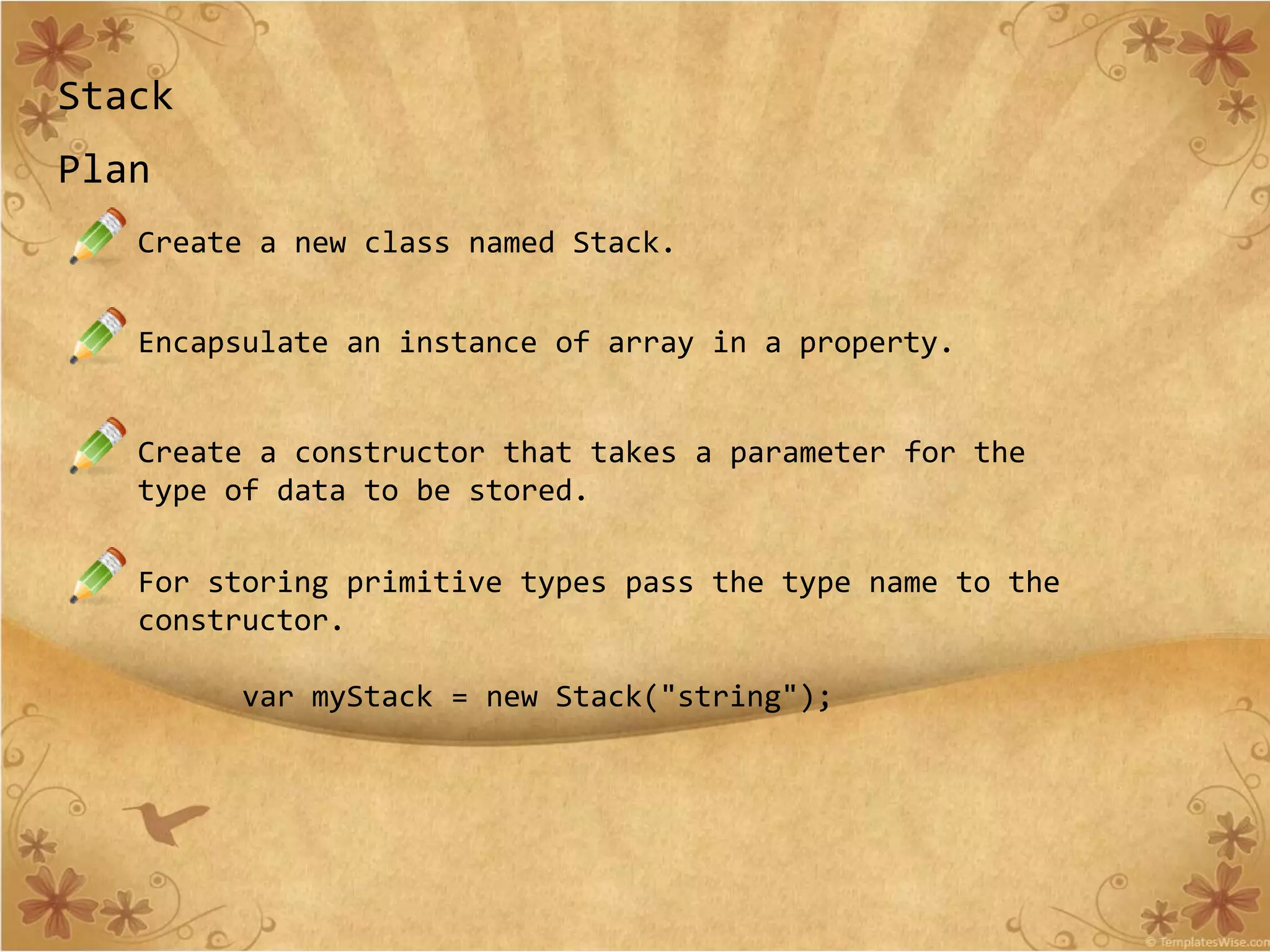
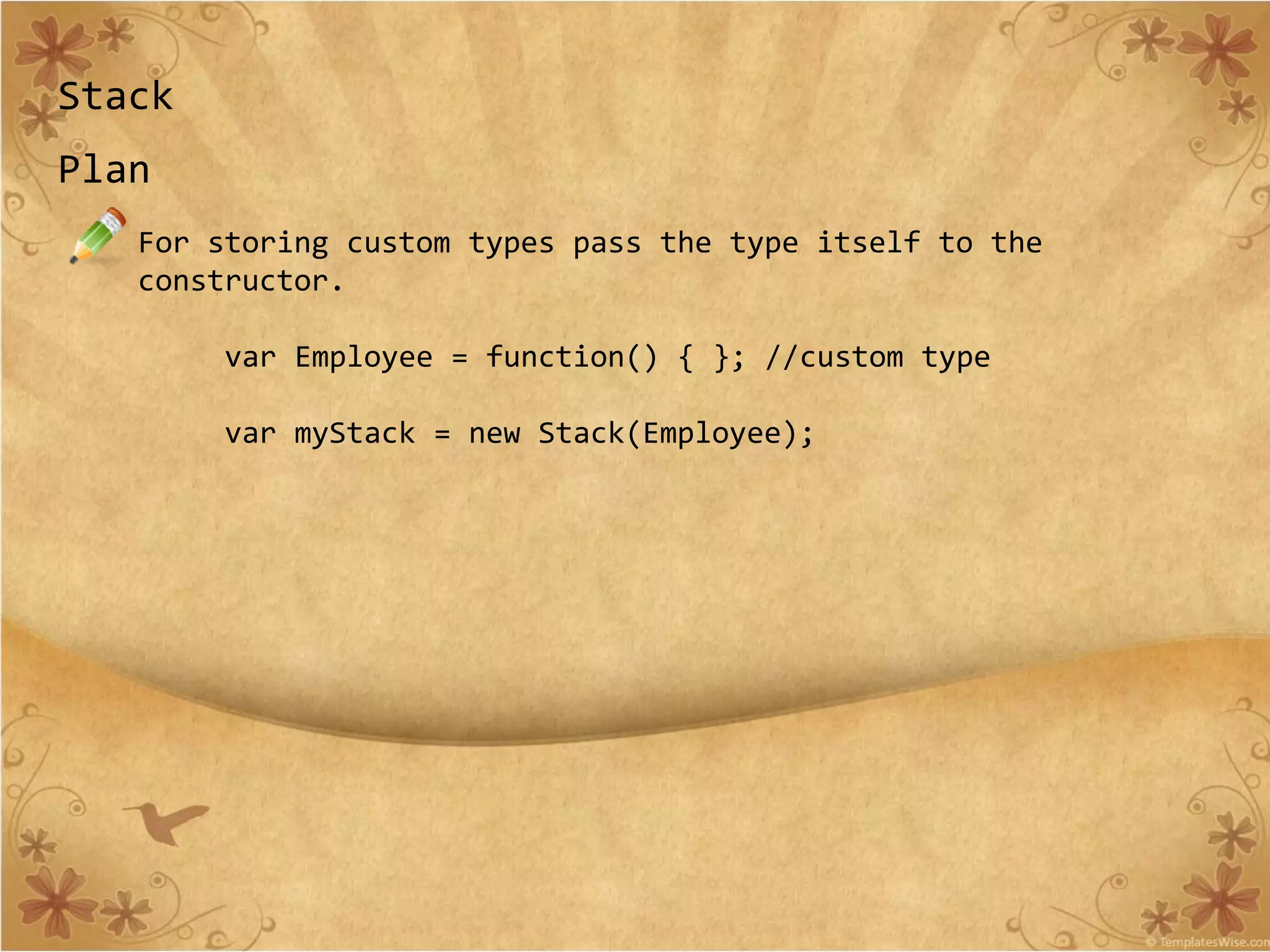
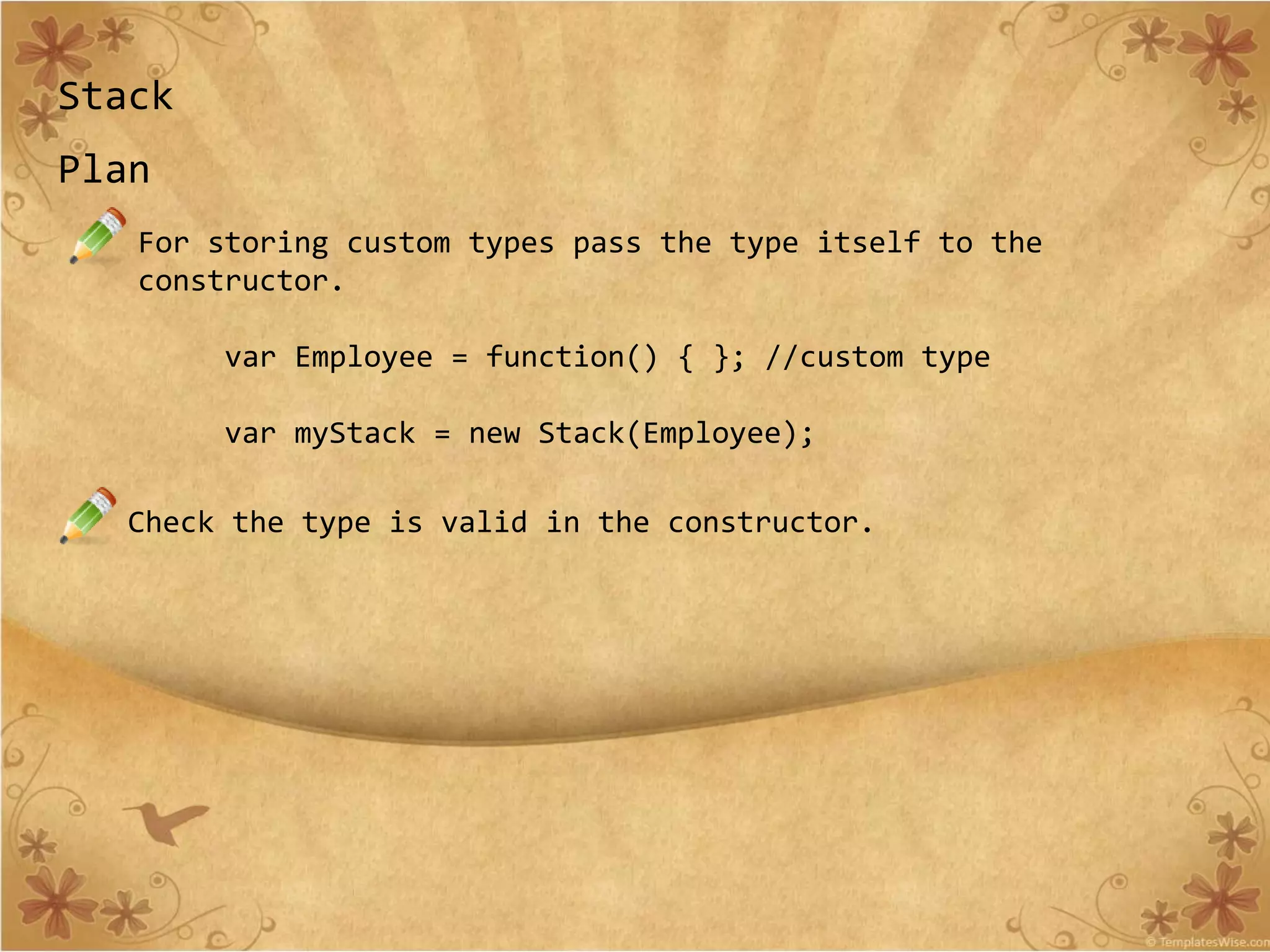
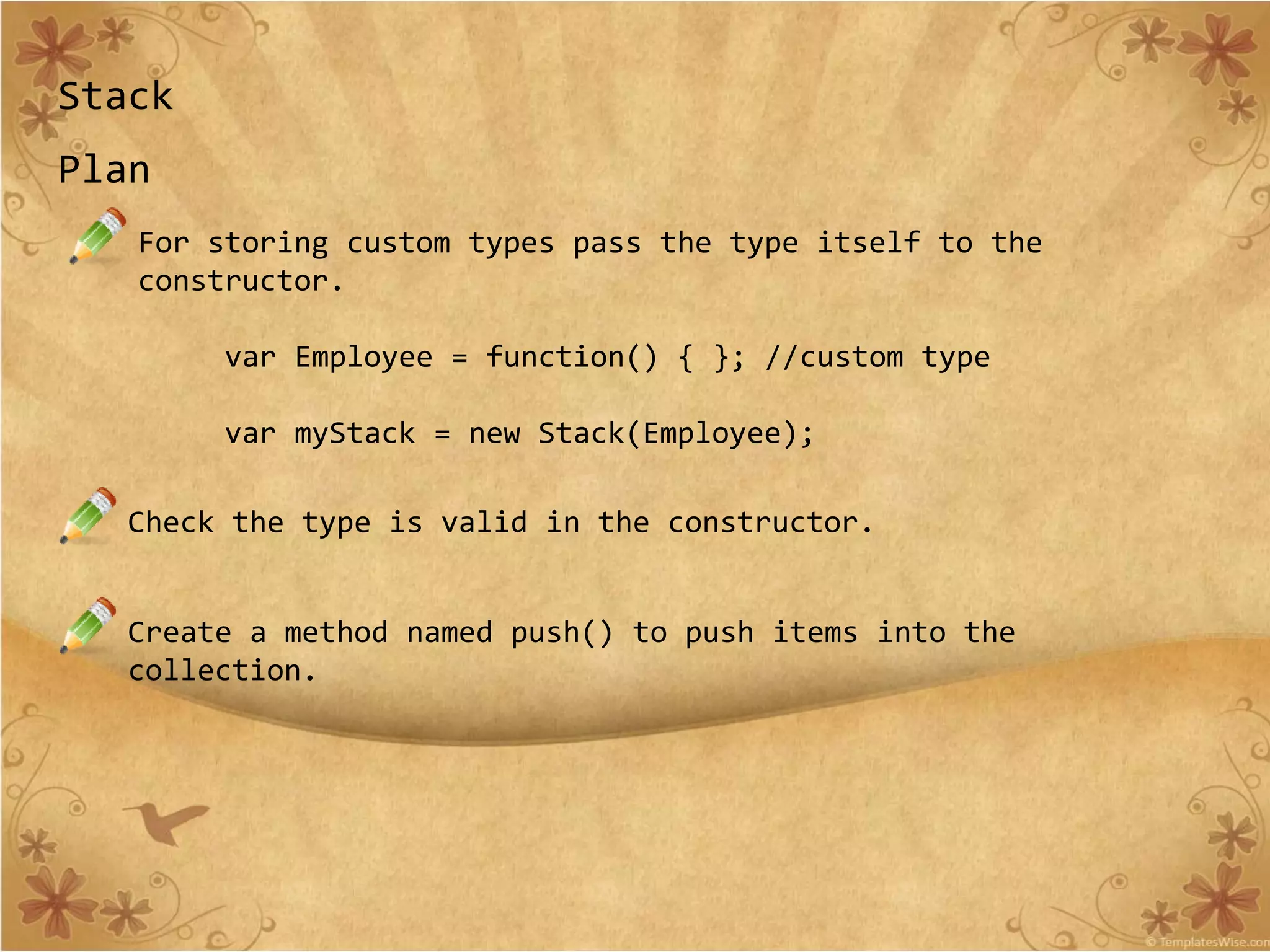
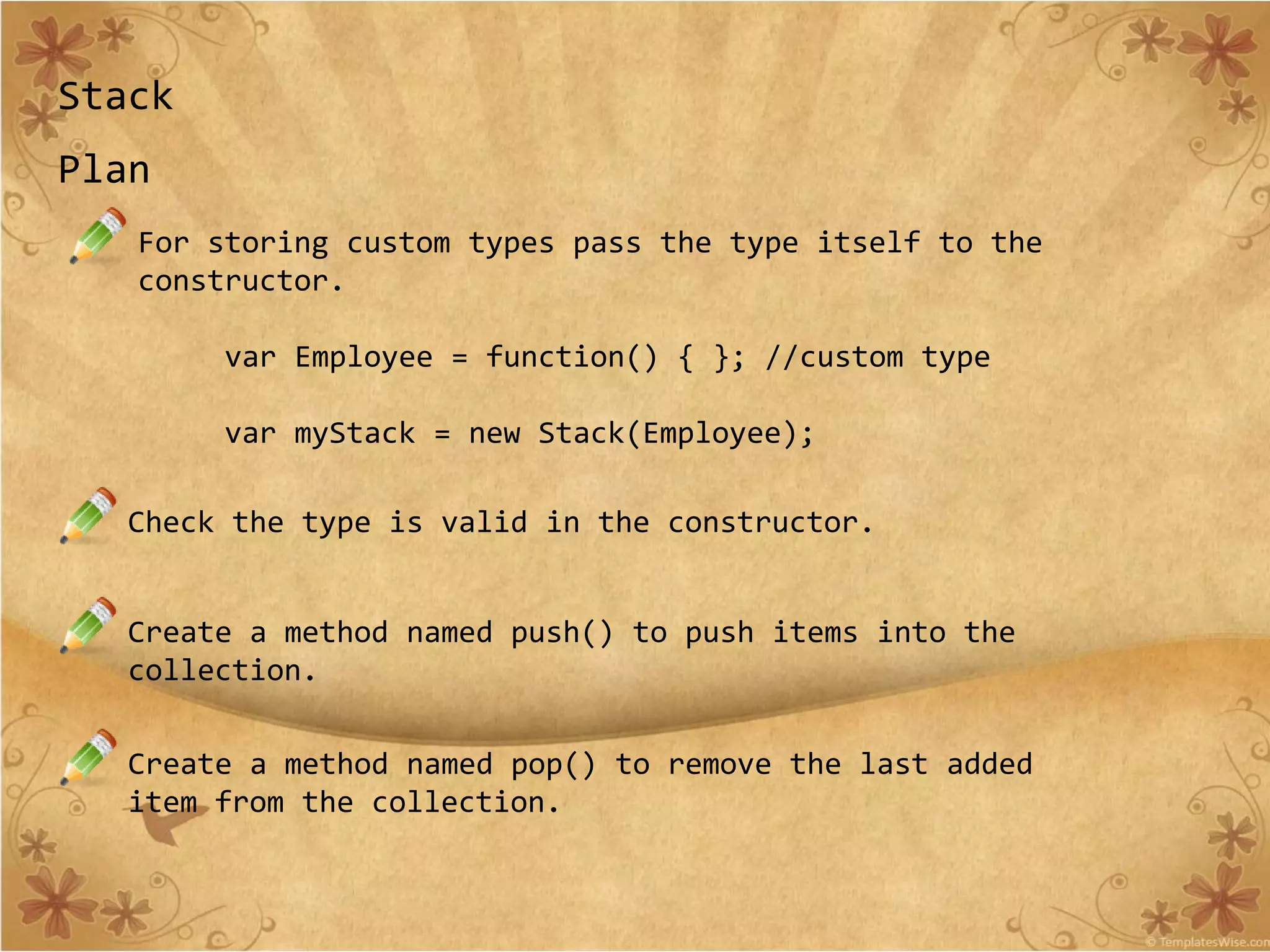
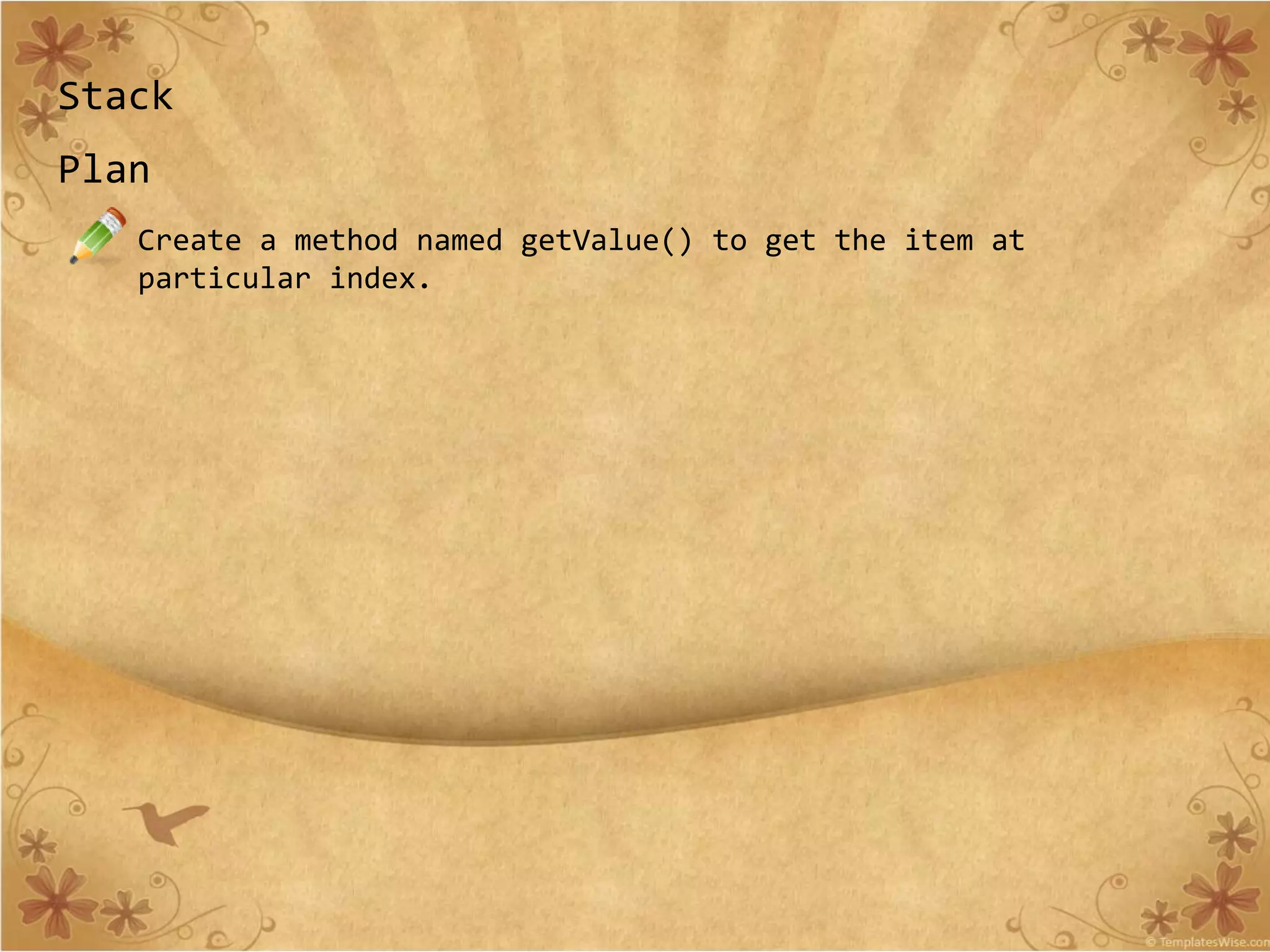
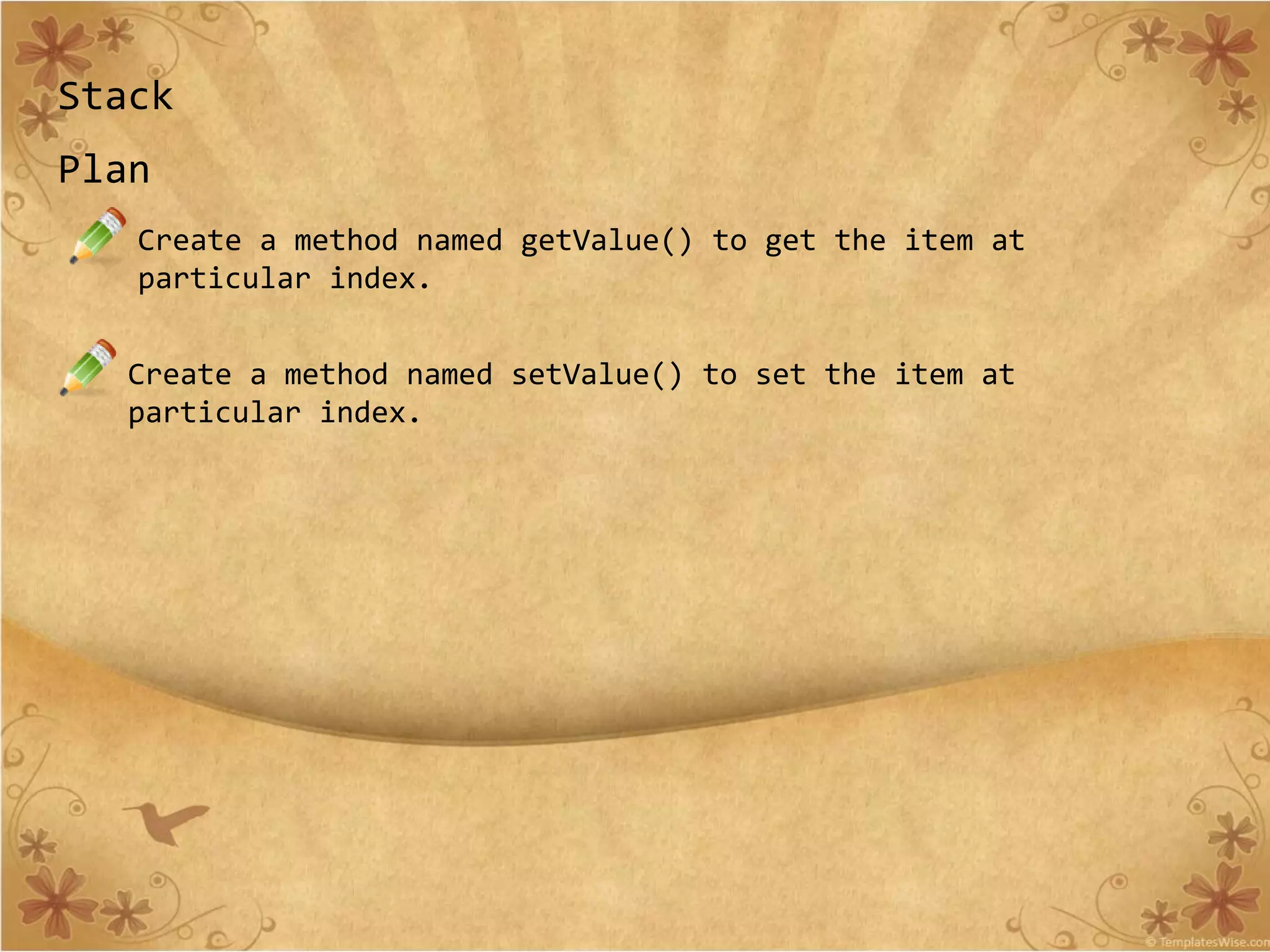
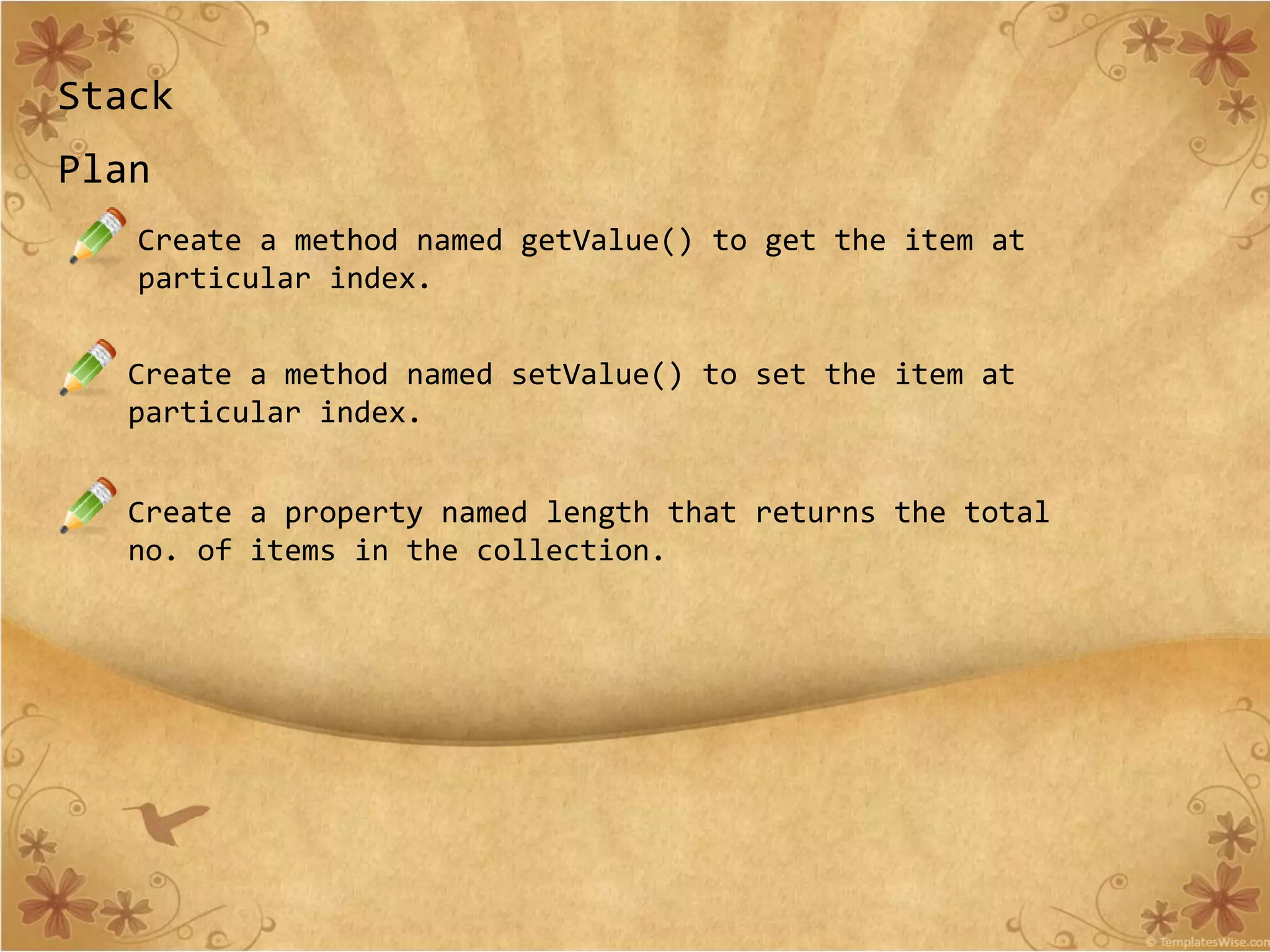
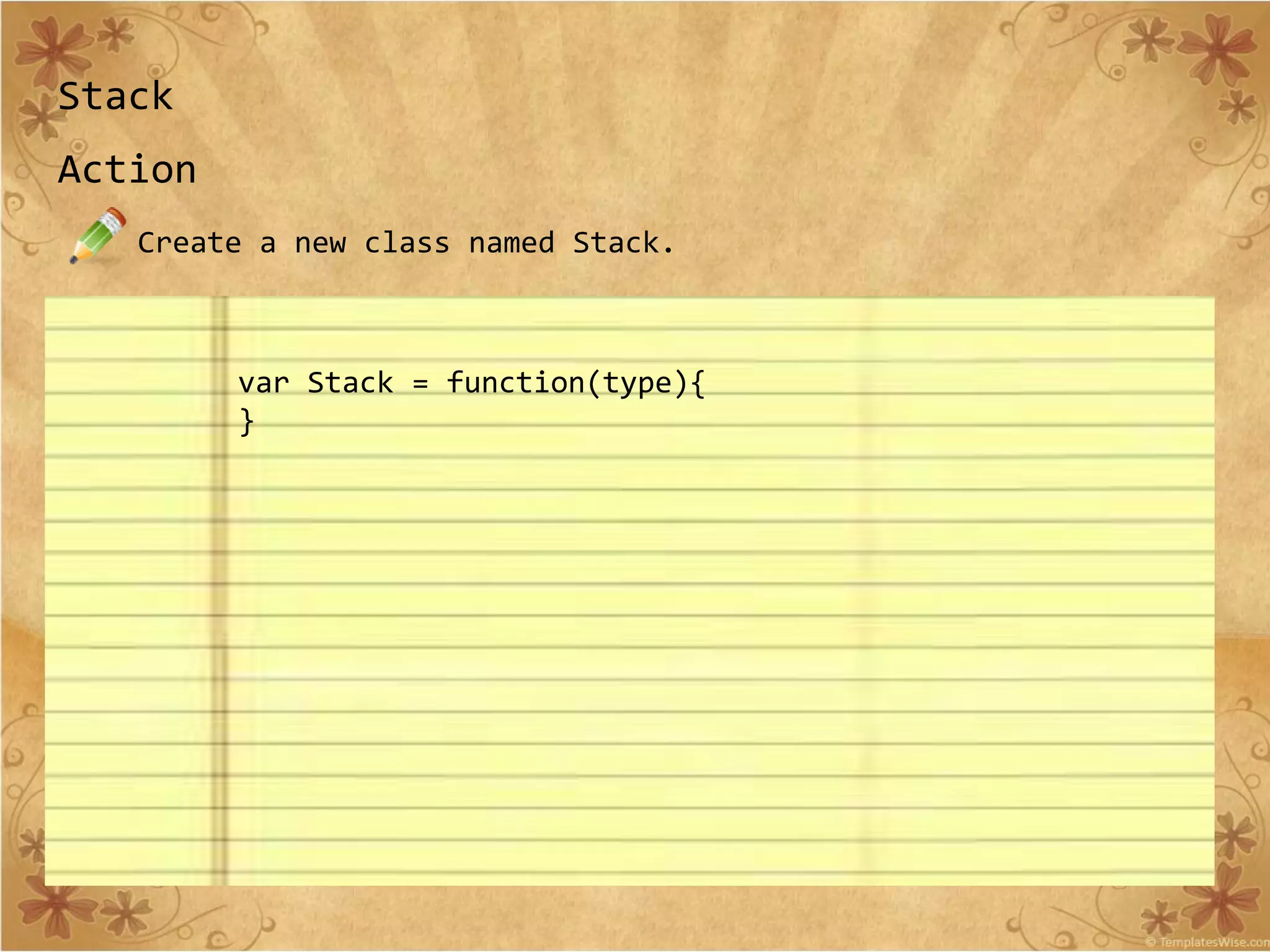
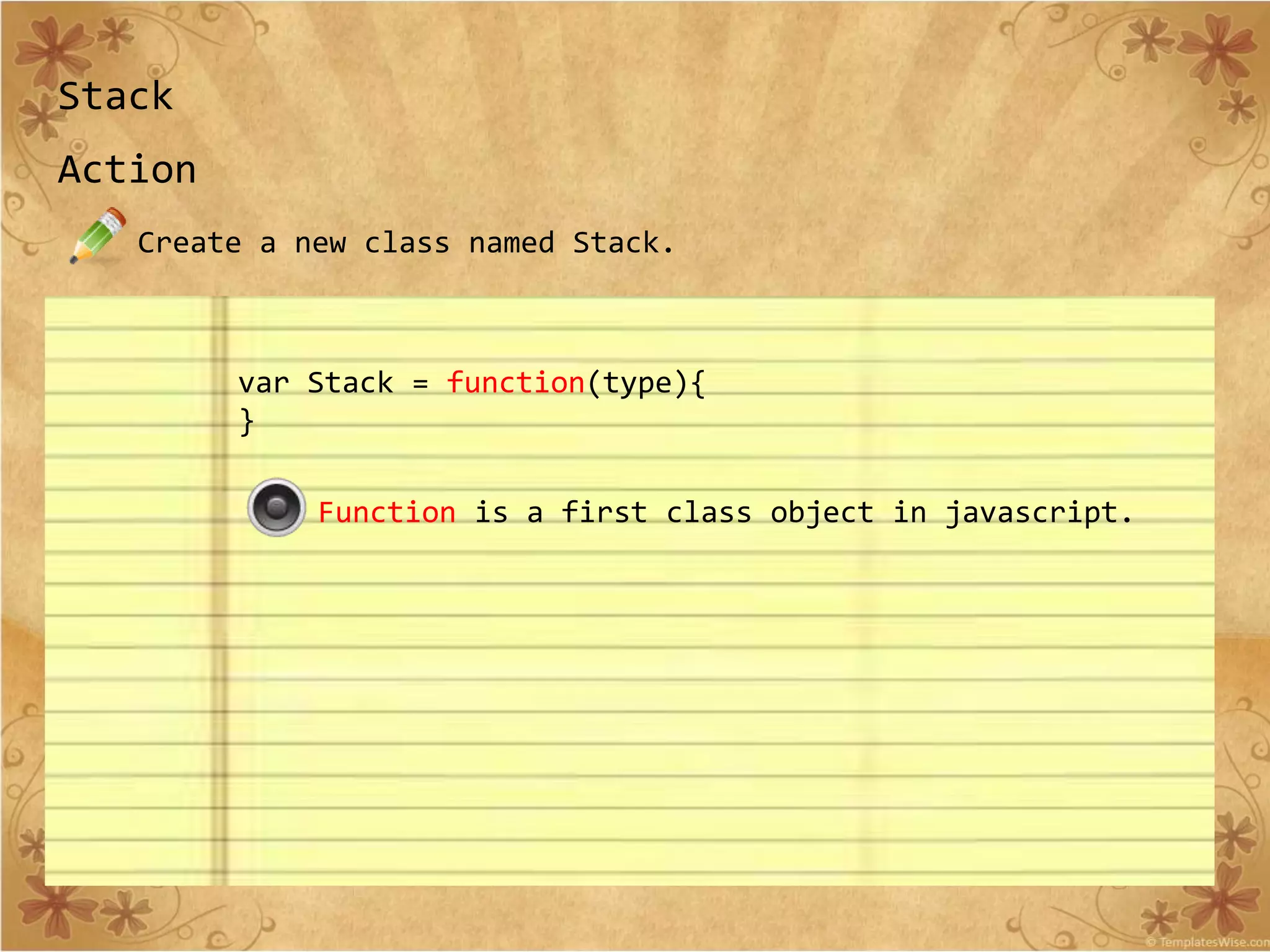
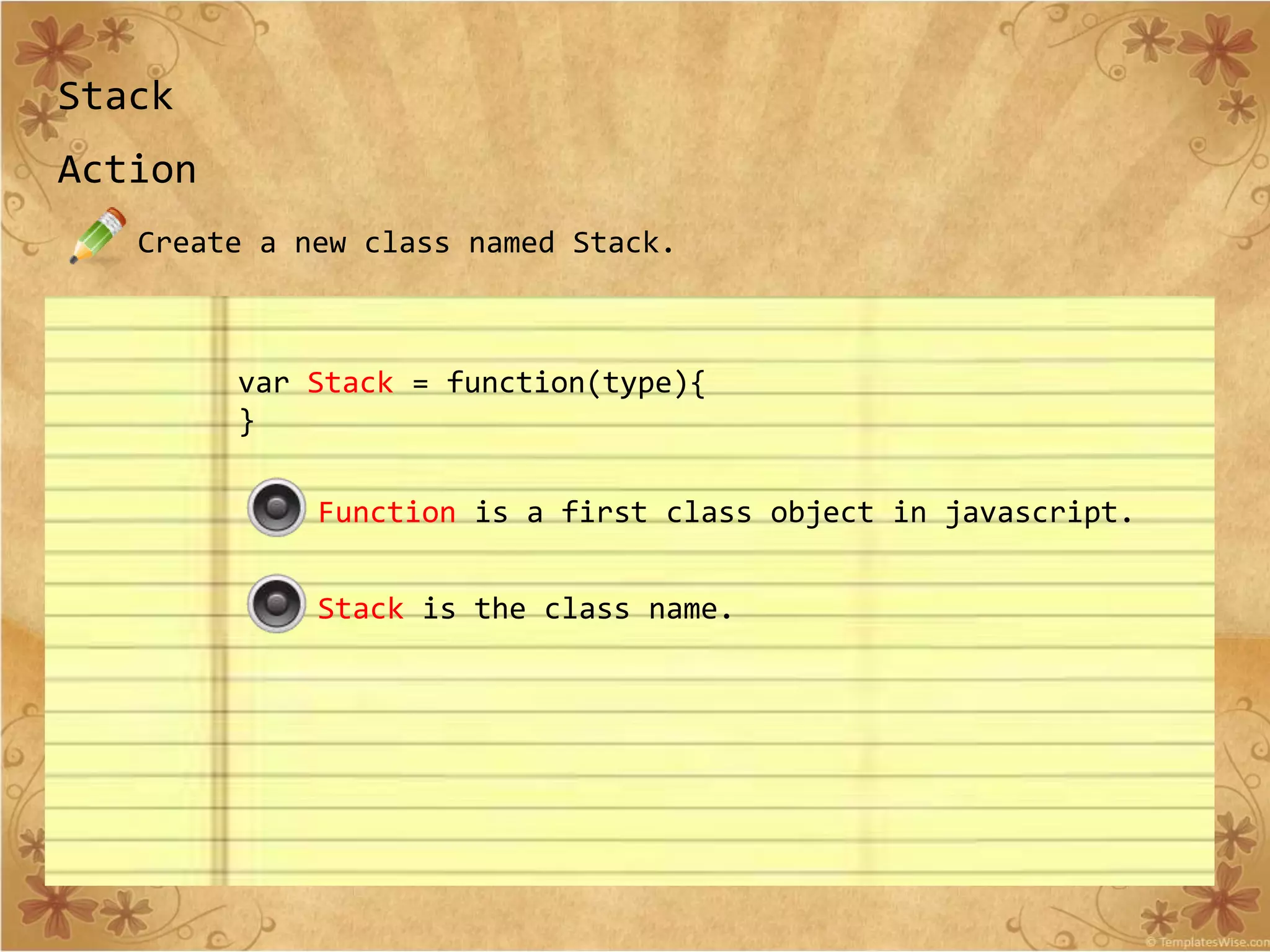
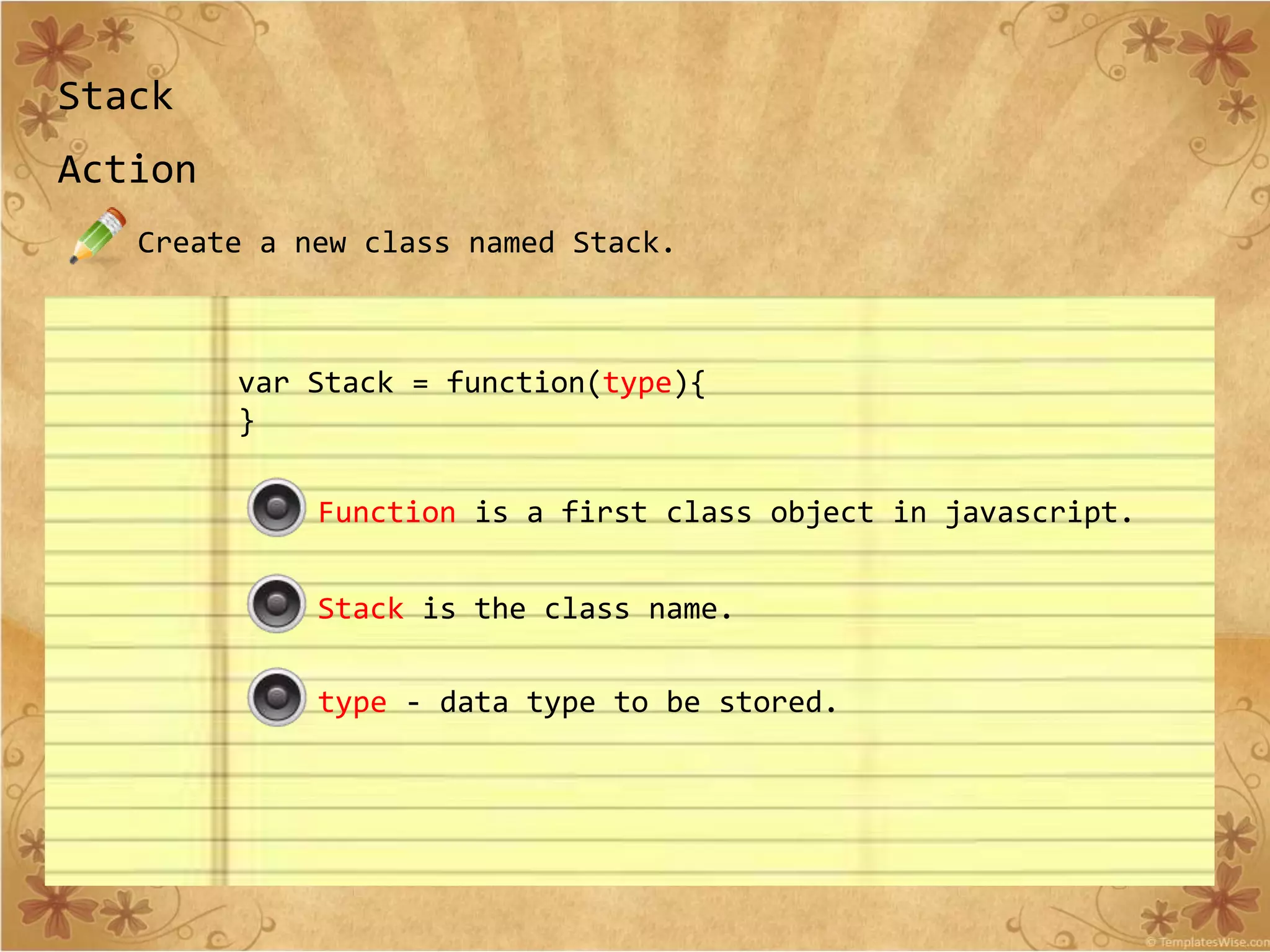
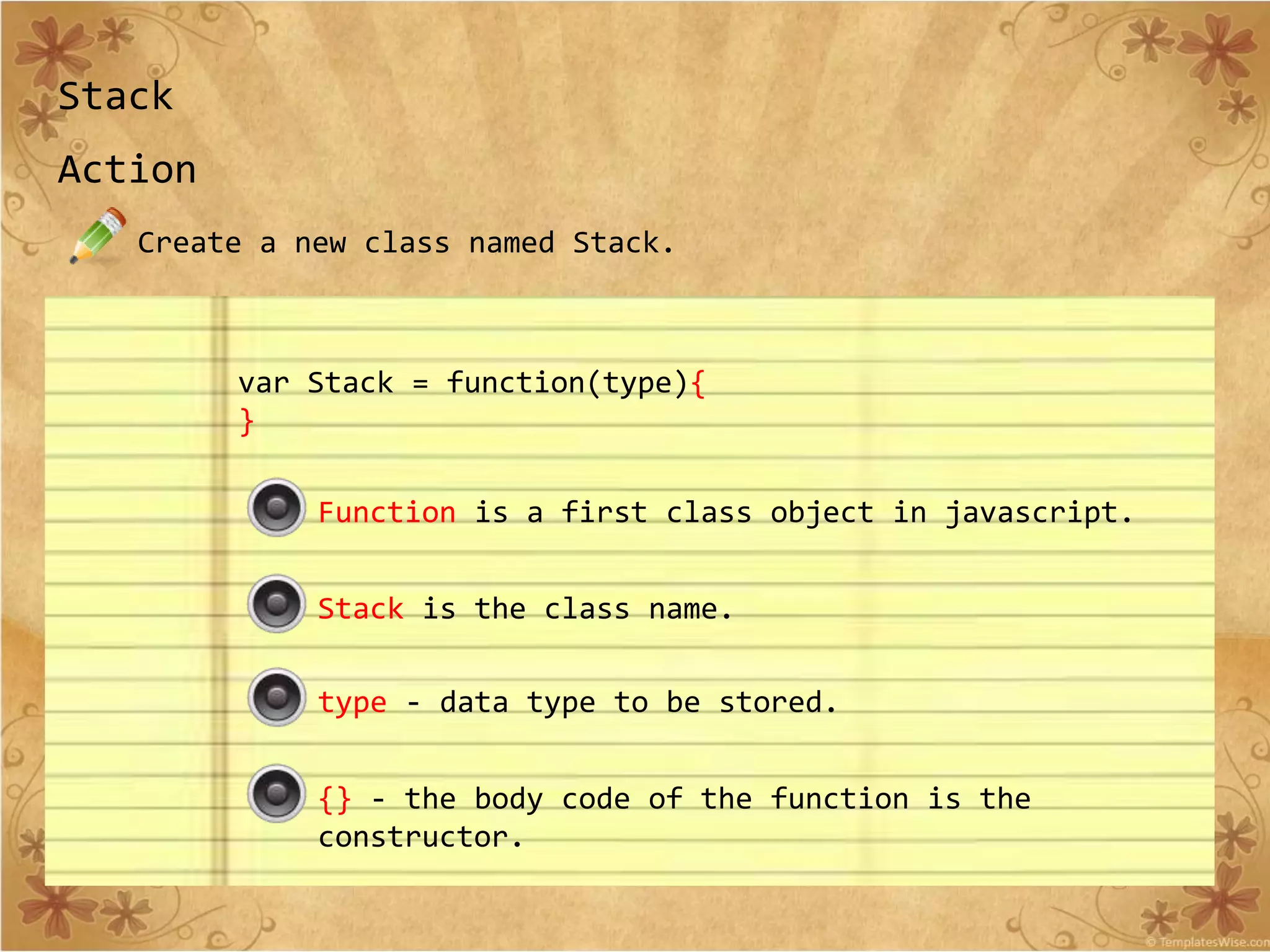
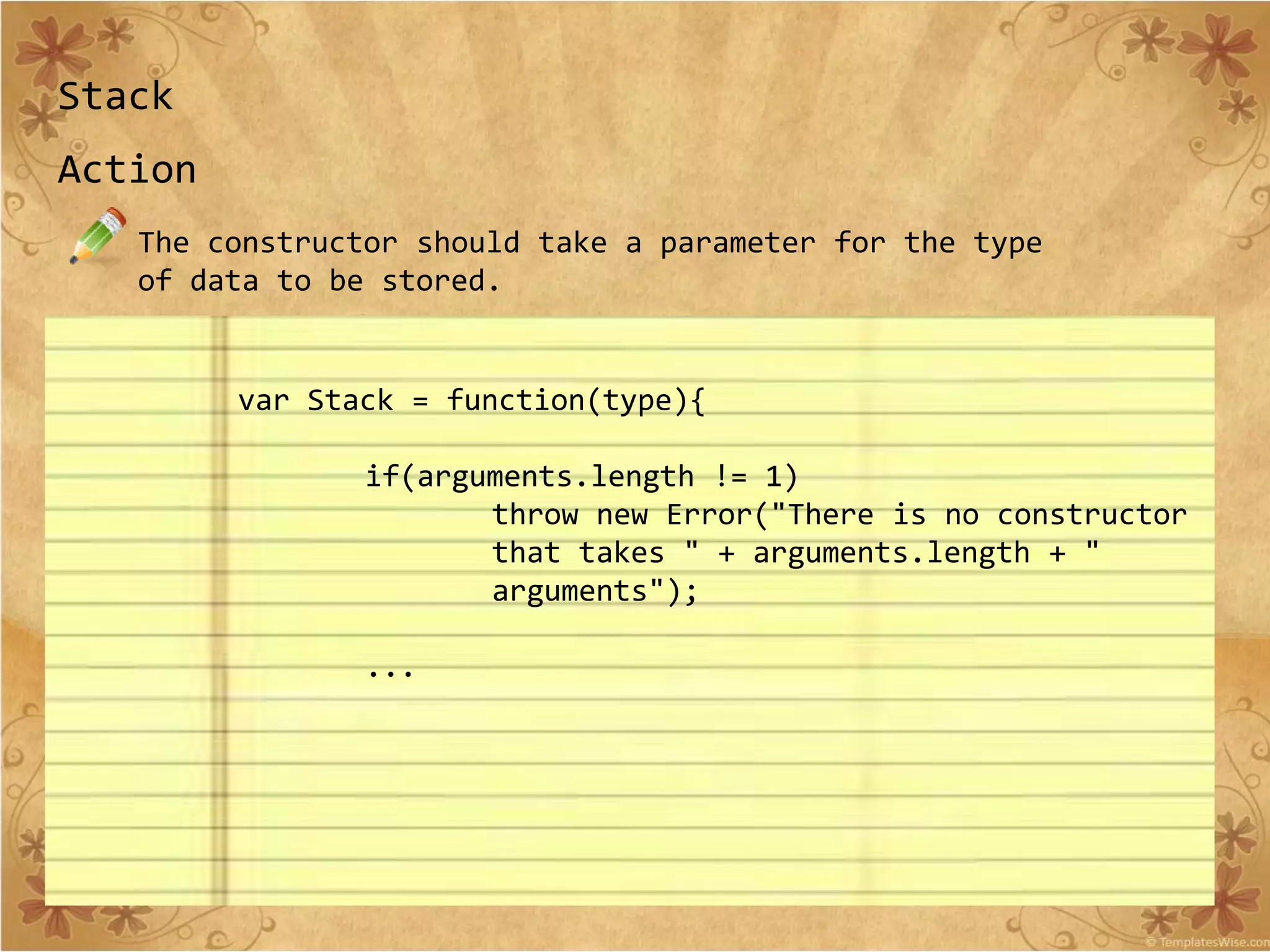
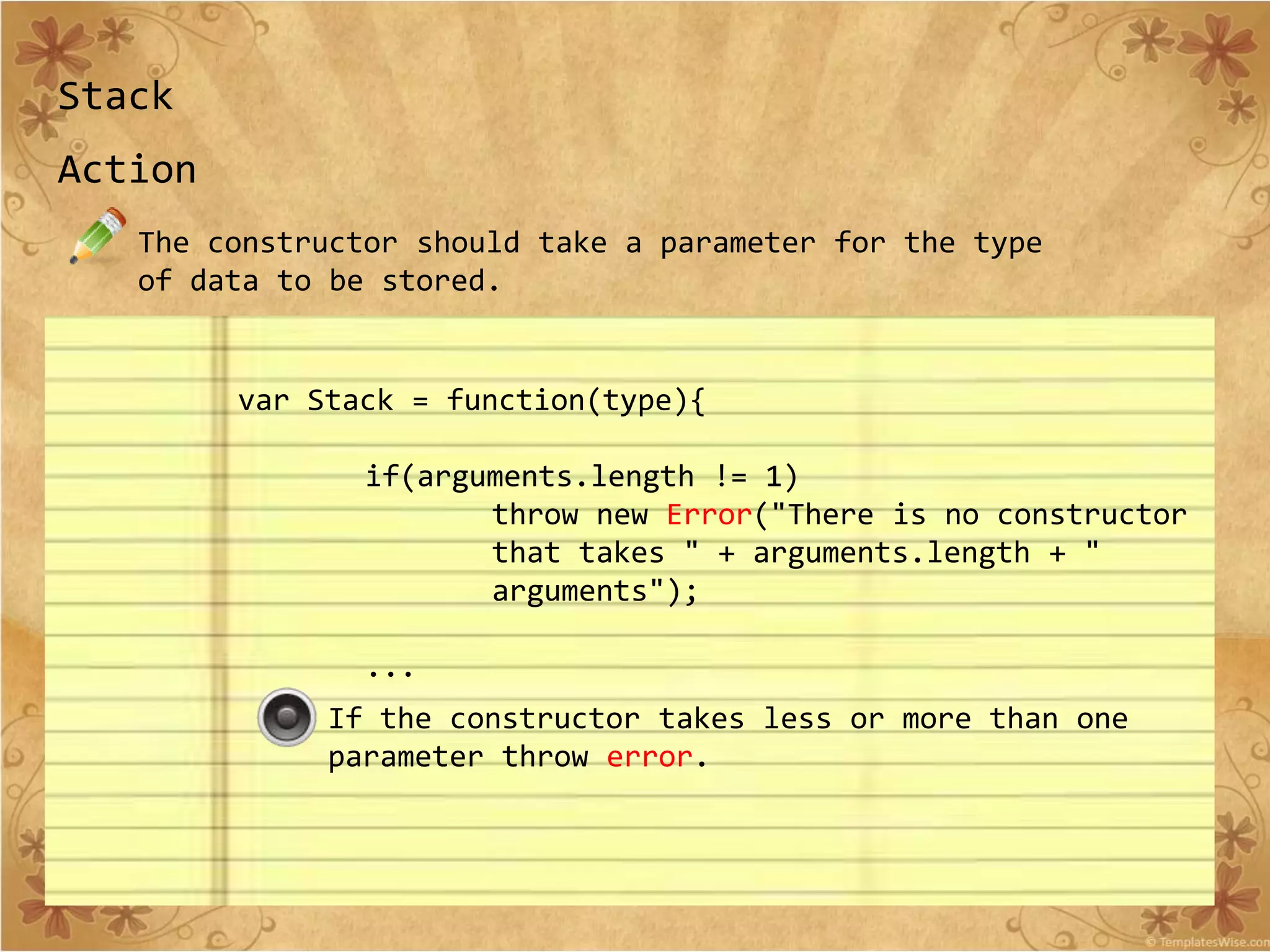
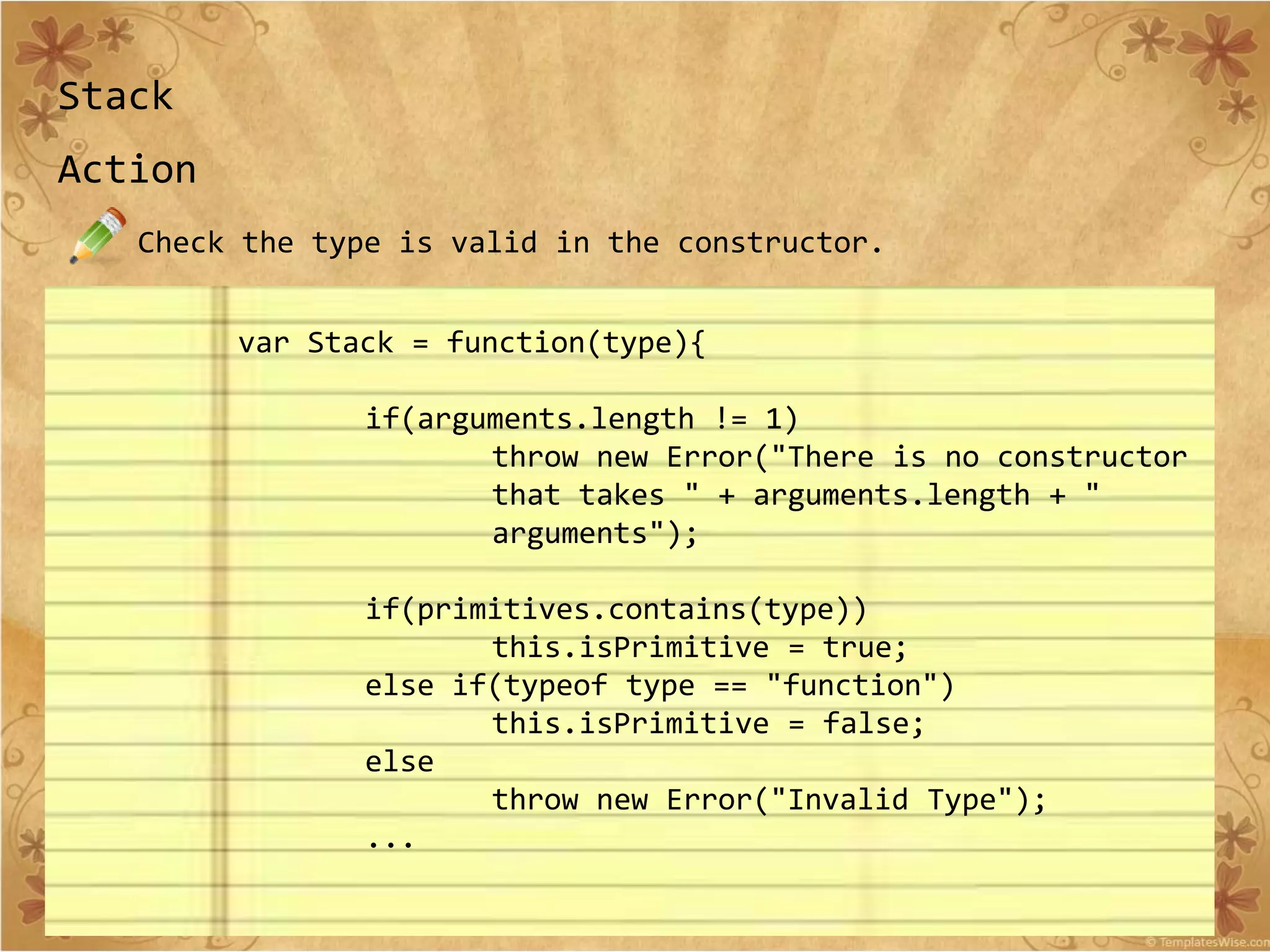
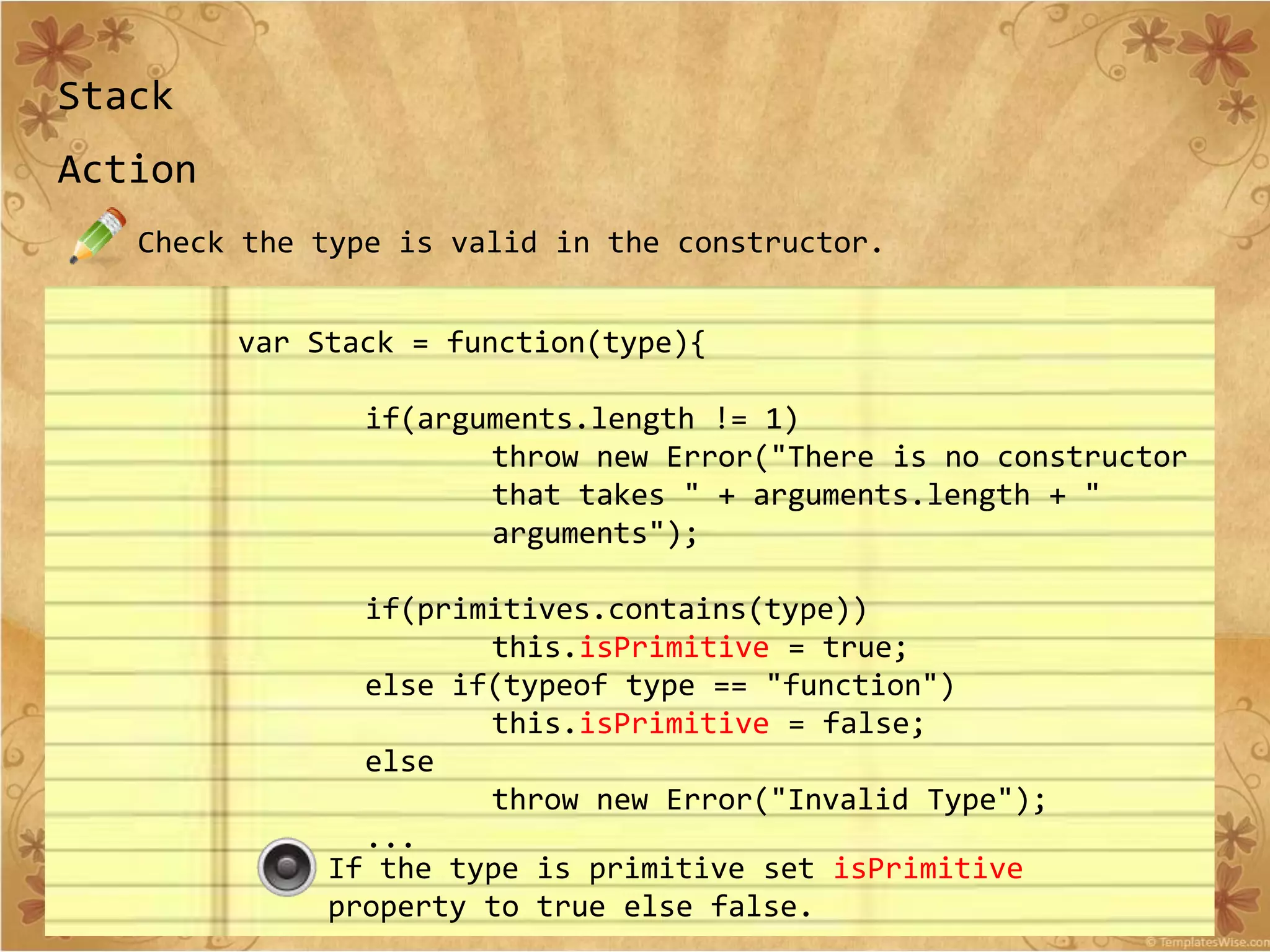
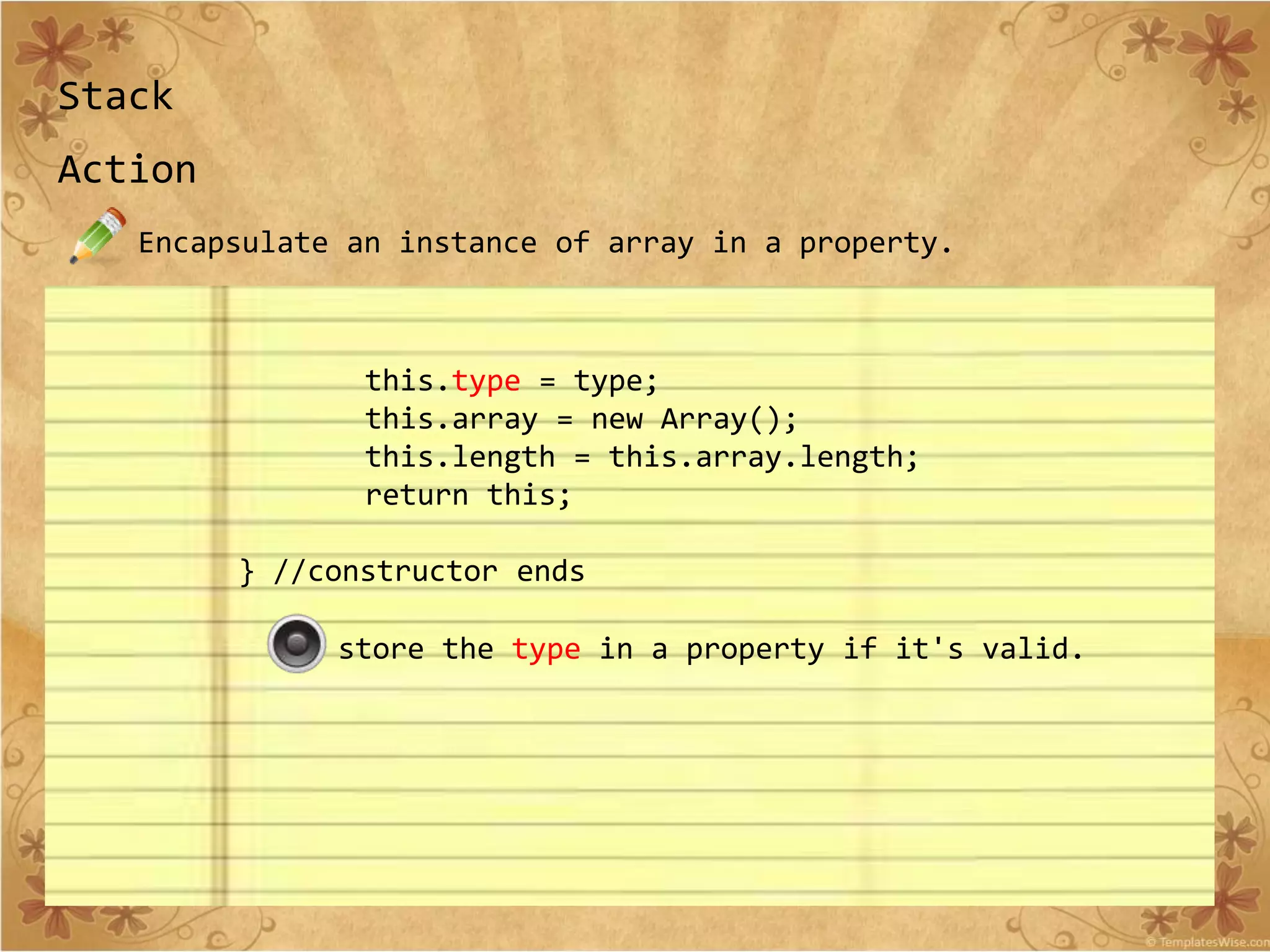
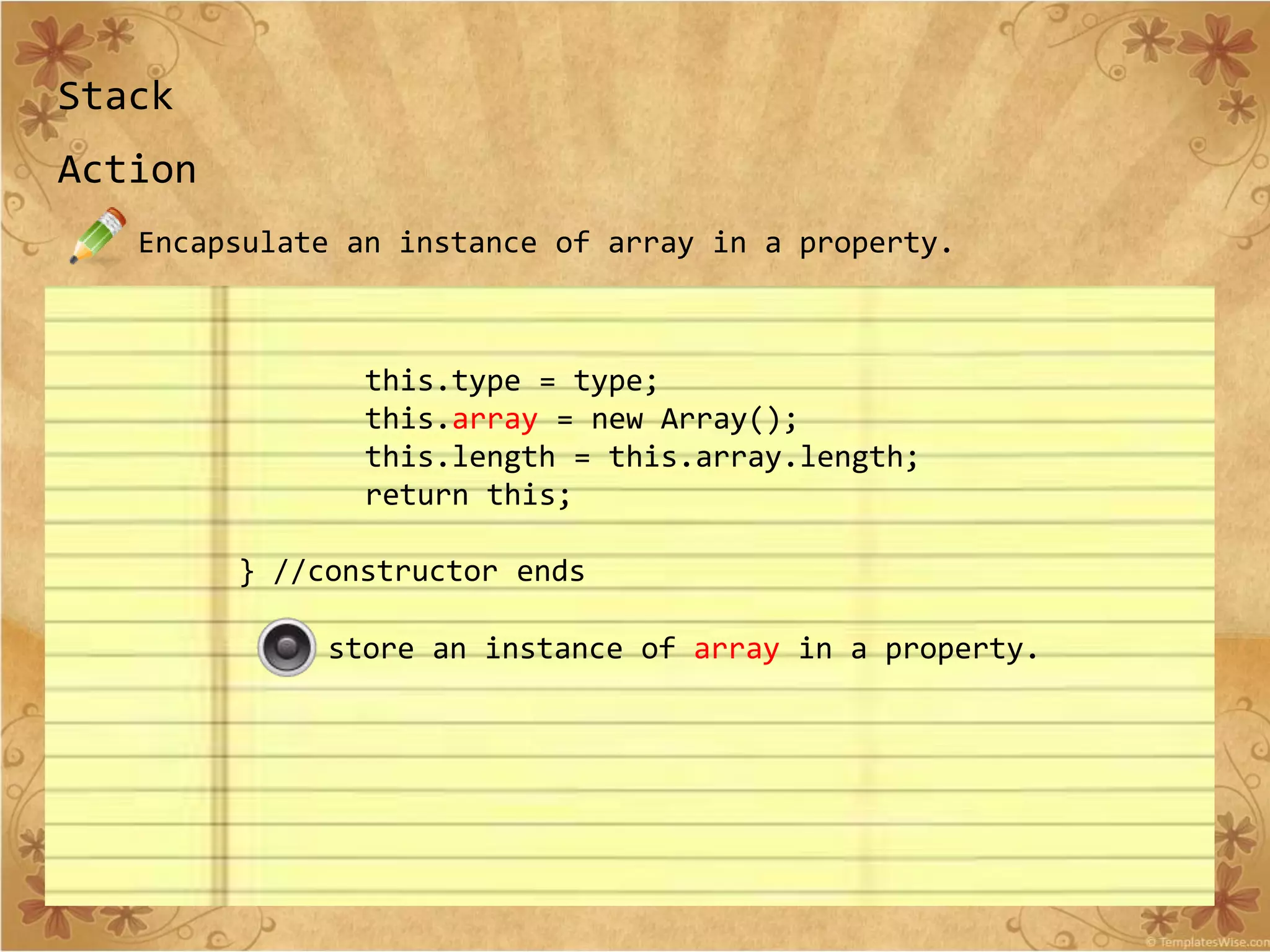
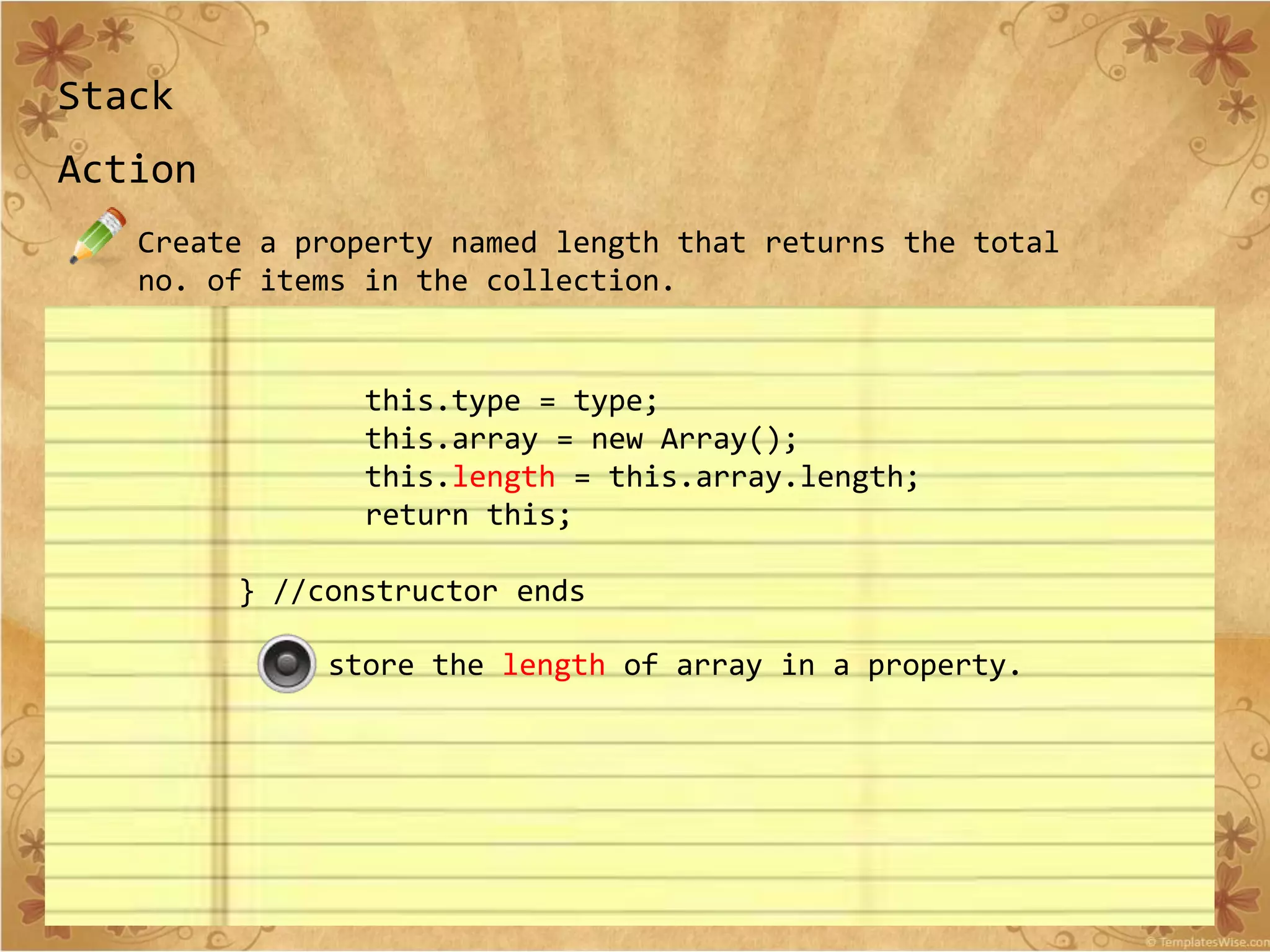
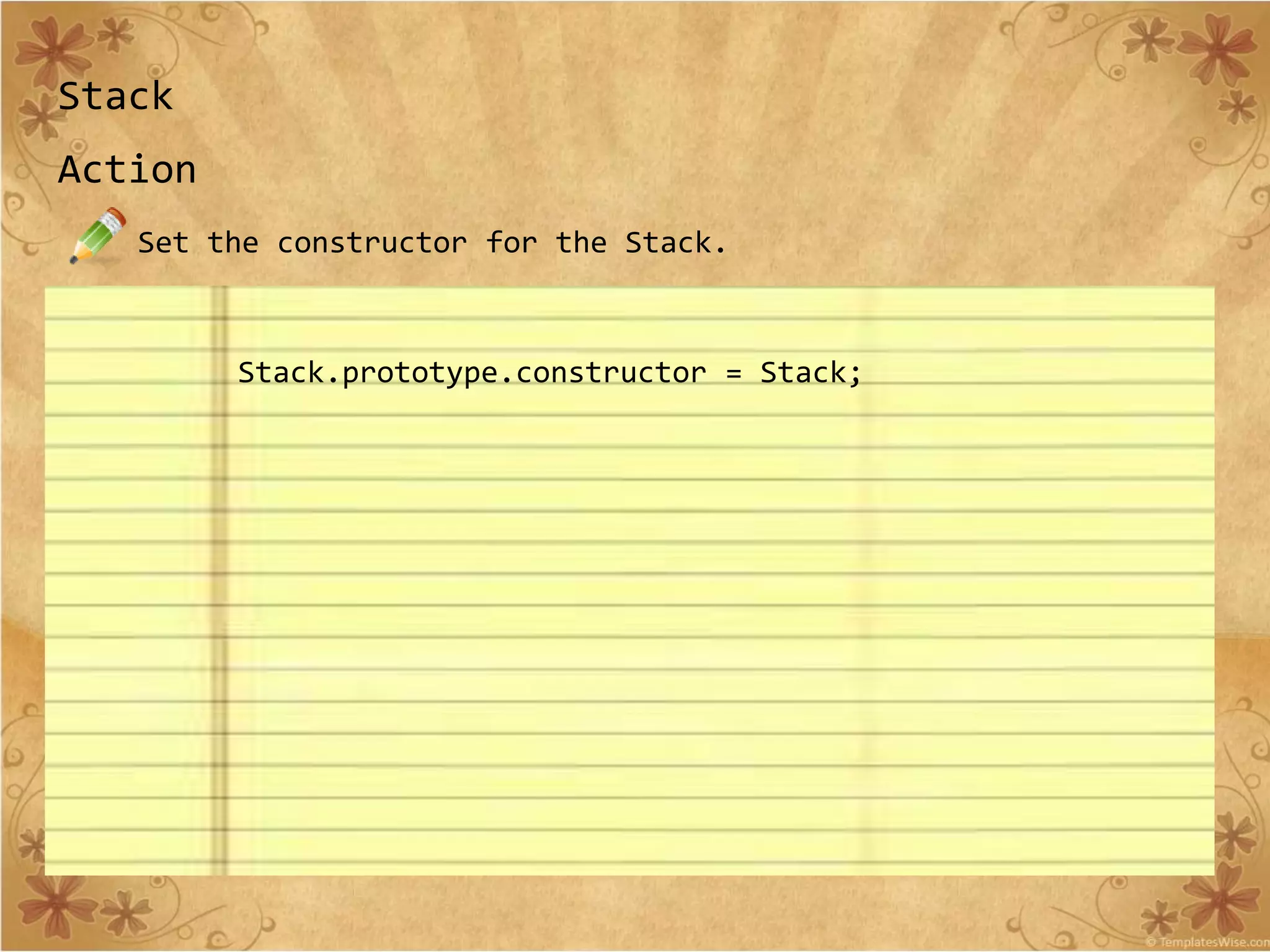
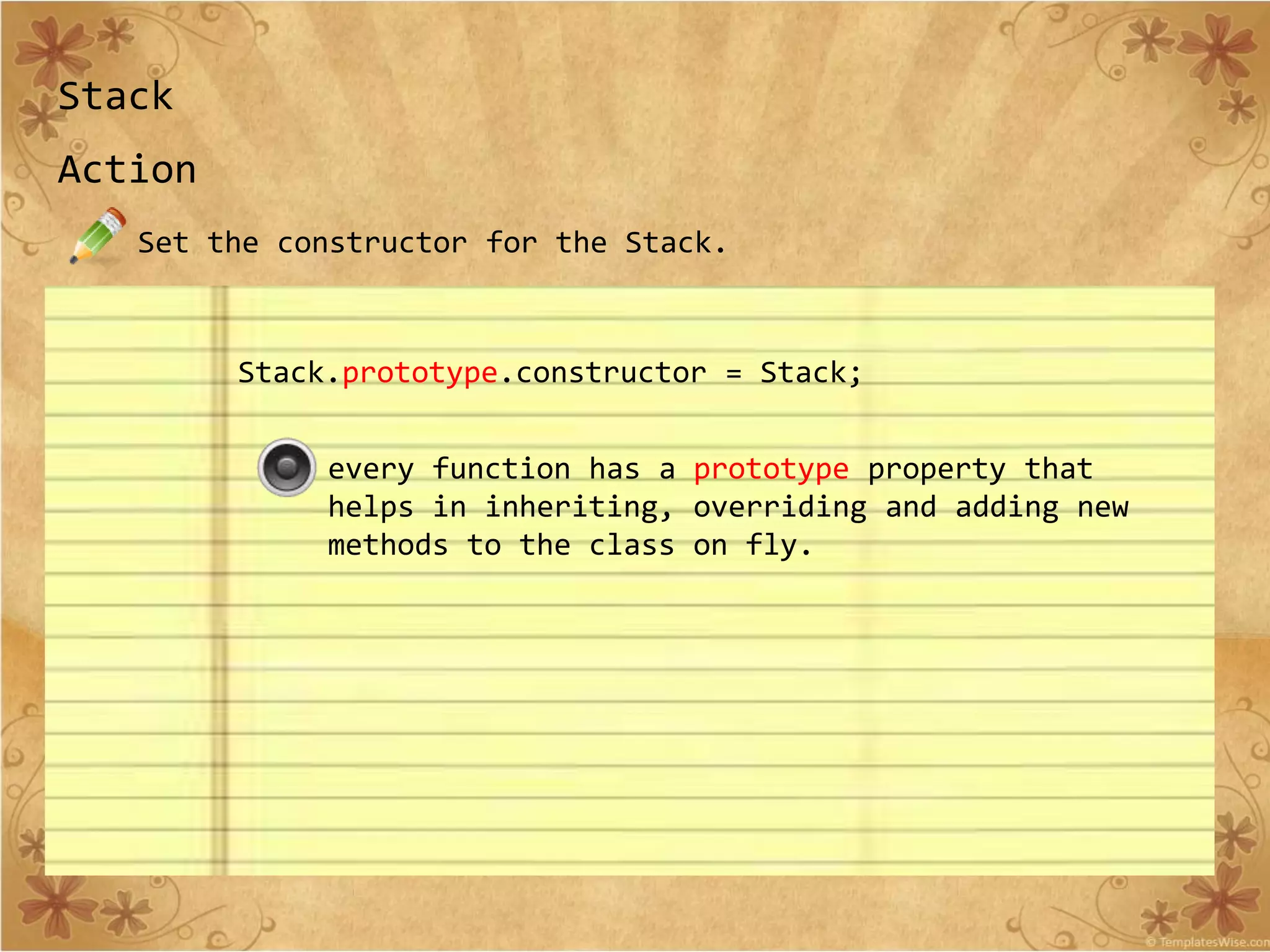
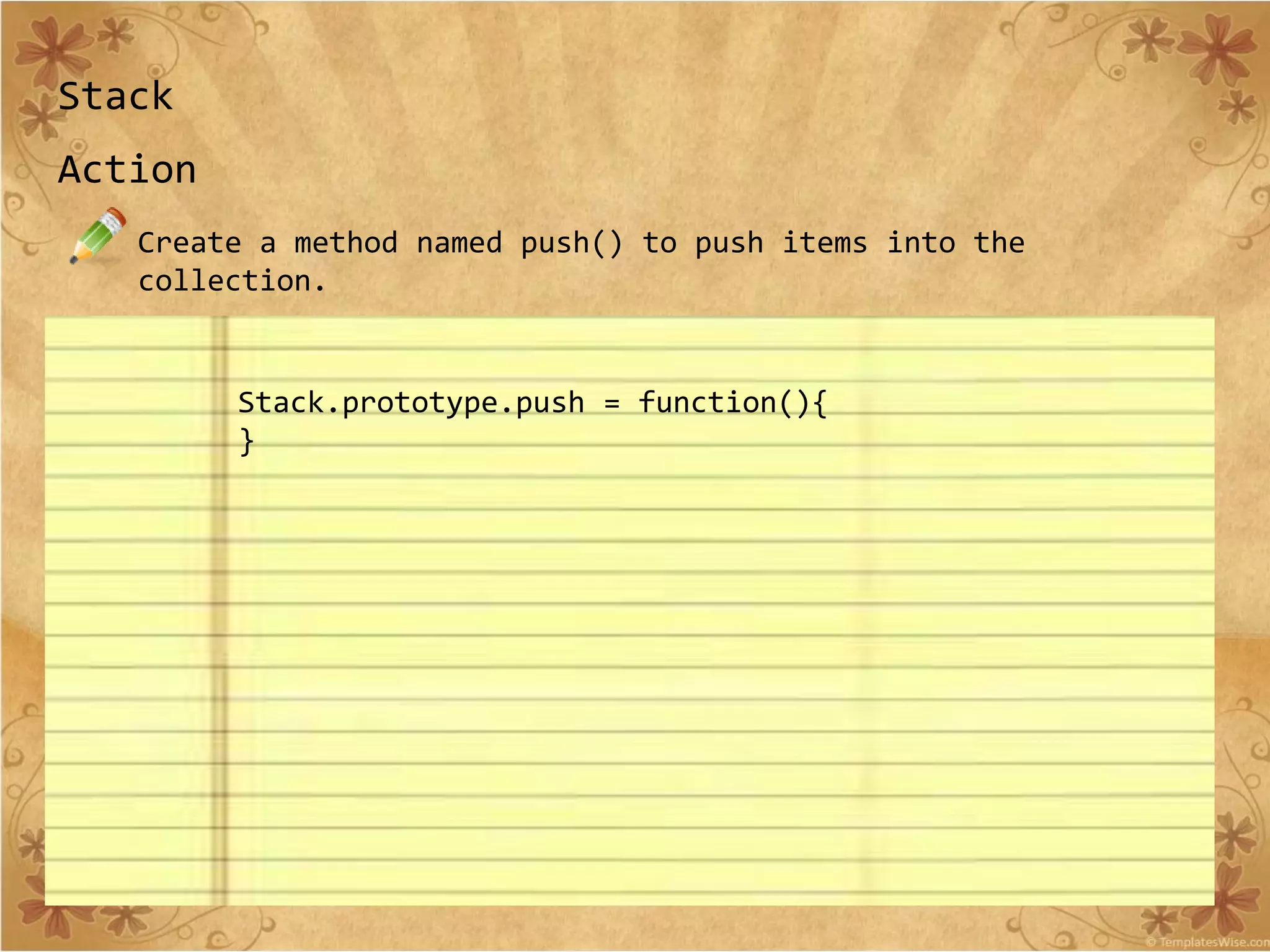
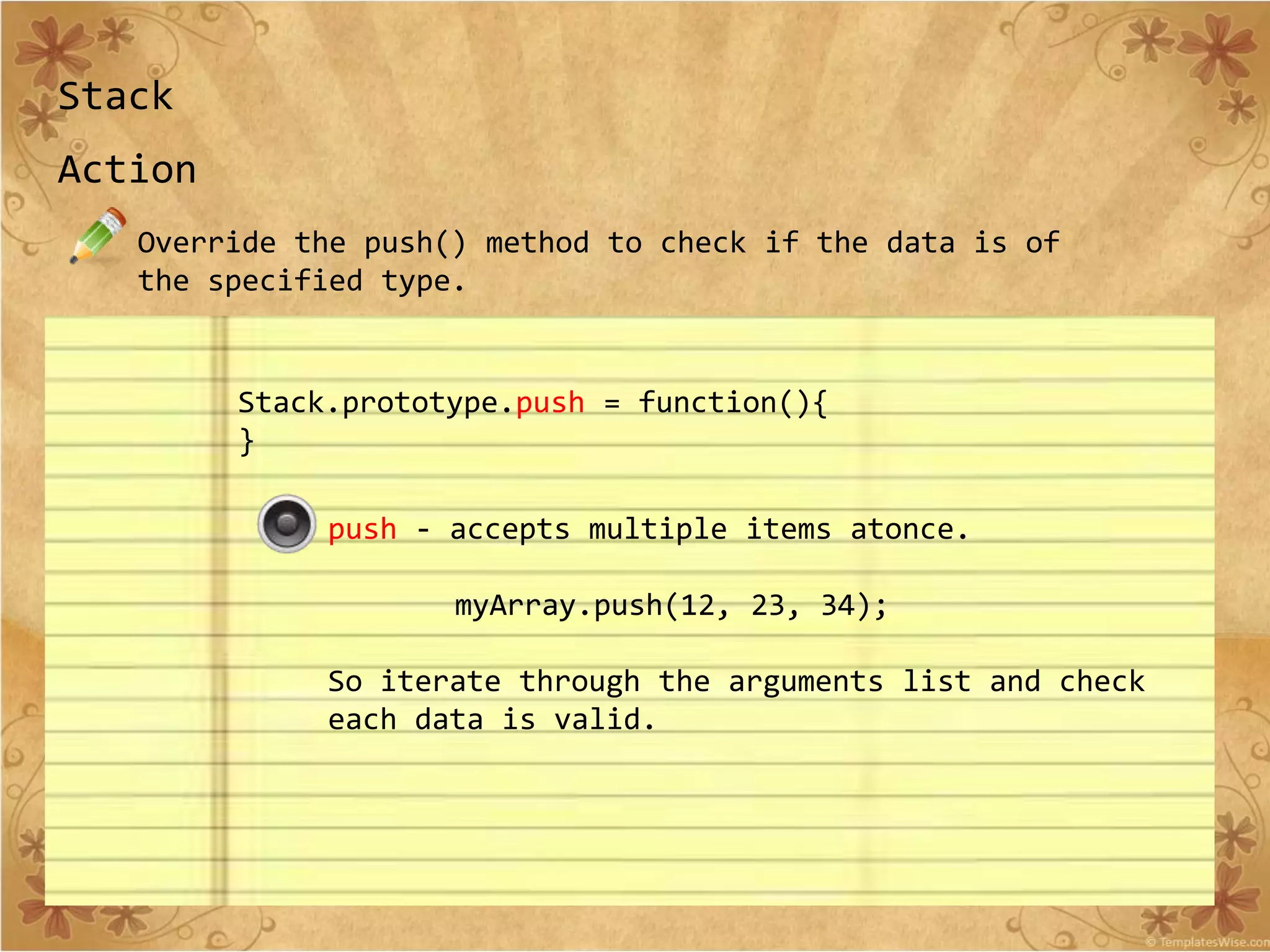
![StackActionCreate a method named push() to push items into the collection....var is Valid;for(var i = 0, j = arguments.length; i < j;i++){isValid = this.isPrimitive ? (this.type.toLowerCase() == typeof arguments[i]): (arguments[i] instanceof this.type);if(!isValid)throw new Error("Invalid Argument");} //loop ends](https://image.slidesharecdn.com/extendingjavascriptpartone-100822092752-phpapp01/75/Extending-javascript-part-one-44-2048.jpg)
![StackActionCreate a method named push() to push items into the collection....var is Valid;for(var i = 0, j = arguments.length; i < j;i++){isValid = this.isPrimitive ? (this.type.toLowerCase() == typeof arguments[i]): (arguments[i] instanceof this.type);if(!isValid)throw new Error("Invalid Argument");} //loop endsIf any item is not valid throw error.](https://image.slidesharecdn.com/extendingjavascriptpartone-100822092752-phpapp01/75/Extending-javascript-part-one-45-2048.jpg)
![StackActionCreate a method named push() to push items into the collection. for(var i = 0, j = arguments.length; i < j;i++){ this.array.push(arguments[i]); } this.length = this.array.length; return this.array.length;} //push() ends](https://image.slidesharecdn.com/extendingjavascriptpartone-100822092752-phpapp01/75/Extending-javascript-part-one-46-2048.jpg)
![StackActionCreate a method named push() to push items into the collection. for(var i = 0, j = arguments.length; i < j;i++){ this.array.push(arguments[i]); } this.length = this.array.length; return this.array.length;} //push() endspush all the items to the internalarray.](https://image.slidesharecdn.com/extendingjavascriptpartone-100822092752-phpapp01/75/Extending-javascript-part-one-47-2048.jpg)
![StackActionCreate a method named push() to push items into the collection. for(var i = 0, j = arguments.length; i < j;i++){this.array.push(arguments[i]); } this.length = this.array.length; return this.array.length;} //push() endsset the length property.](https://image.slidesharecdn.com/extendingjavascriptpartone-100822092752-phpapp01/75/Extending-javascript-part-one-48-2048.jpg)
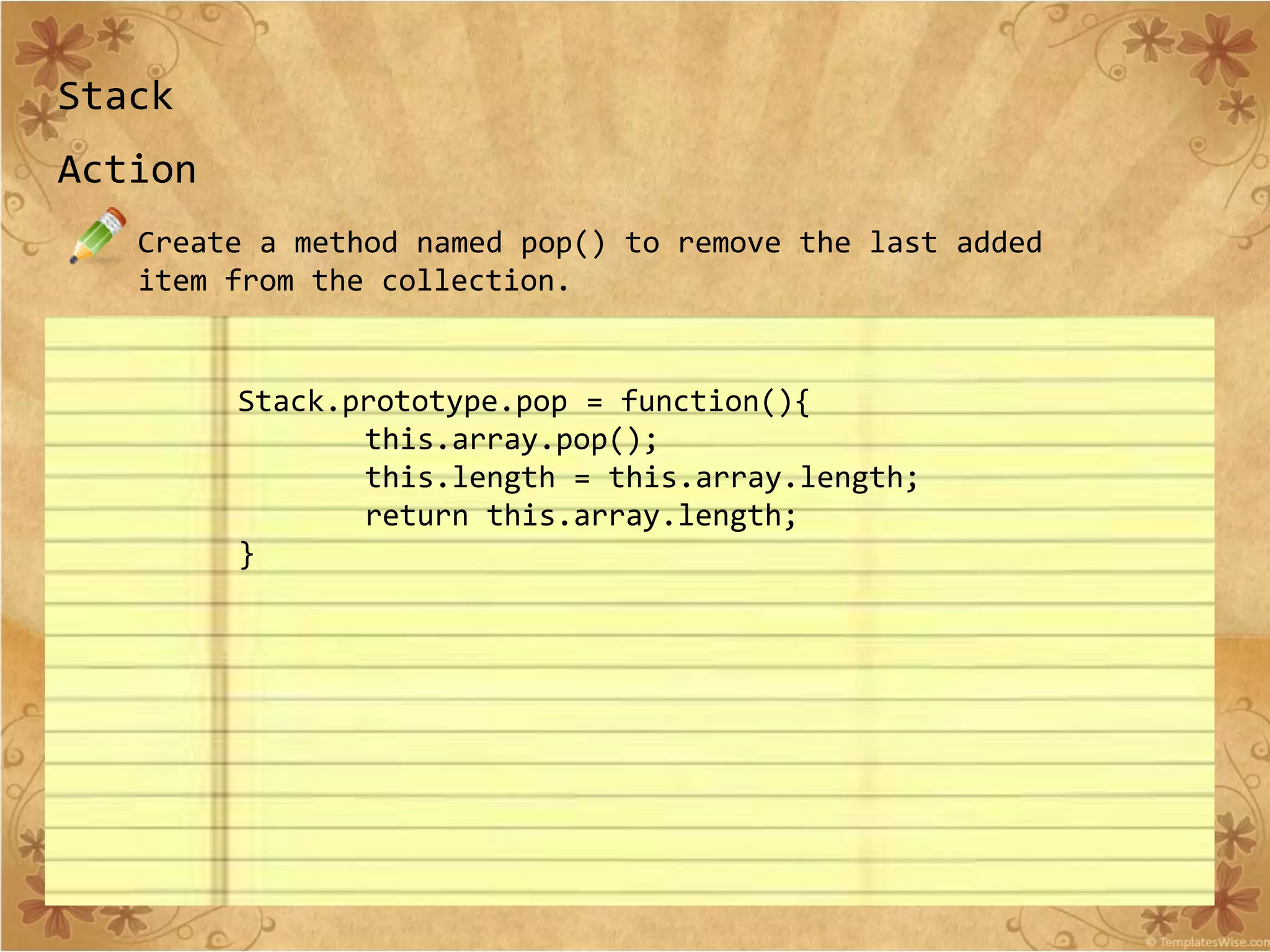
![StackActionCreate a method named getValue() to get the item at particular index.Stack.prototype.getValue = function(index){ return this.array[index];}](https://image.slidesharecdn.com/extendingjavascriptpartone-100822092752-phpapp01/75/Extending-javascript-part-one-50-2048.jpg)
![StackActionCreate a method named setValue() to set the item at particular index.Stack.prototype.getValue = function(index){ return this.array[index];}Stack.prototype.setValue = function(index, value){ var isValid = this.isPrimitive ? (this.type.toLowerCase() == typeof value) : (value instanceof this.type); if(!isValid) throw new Error("Invalid Argument"); this.array[index] = value; return this.array[index];}](https://image.slidesharecdn.com/extendingjavascriptpartone-100822092752-phpapp01/75/Extending-javascript-part-one-51-2048.jpg)
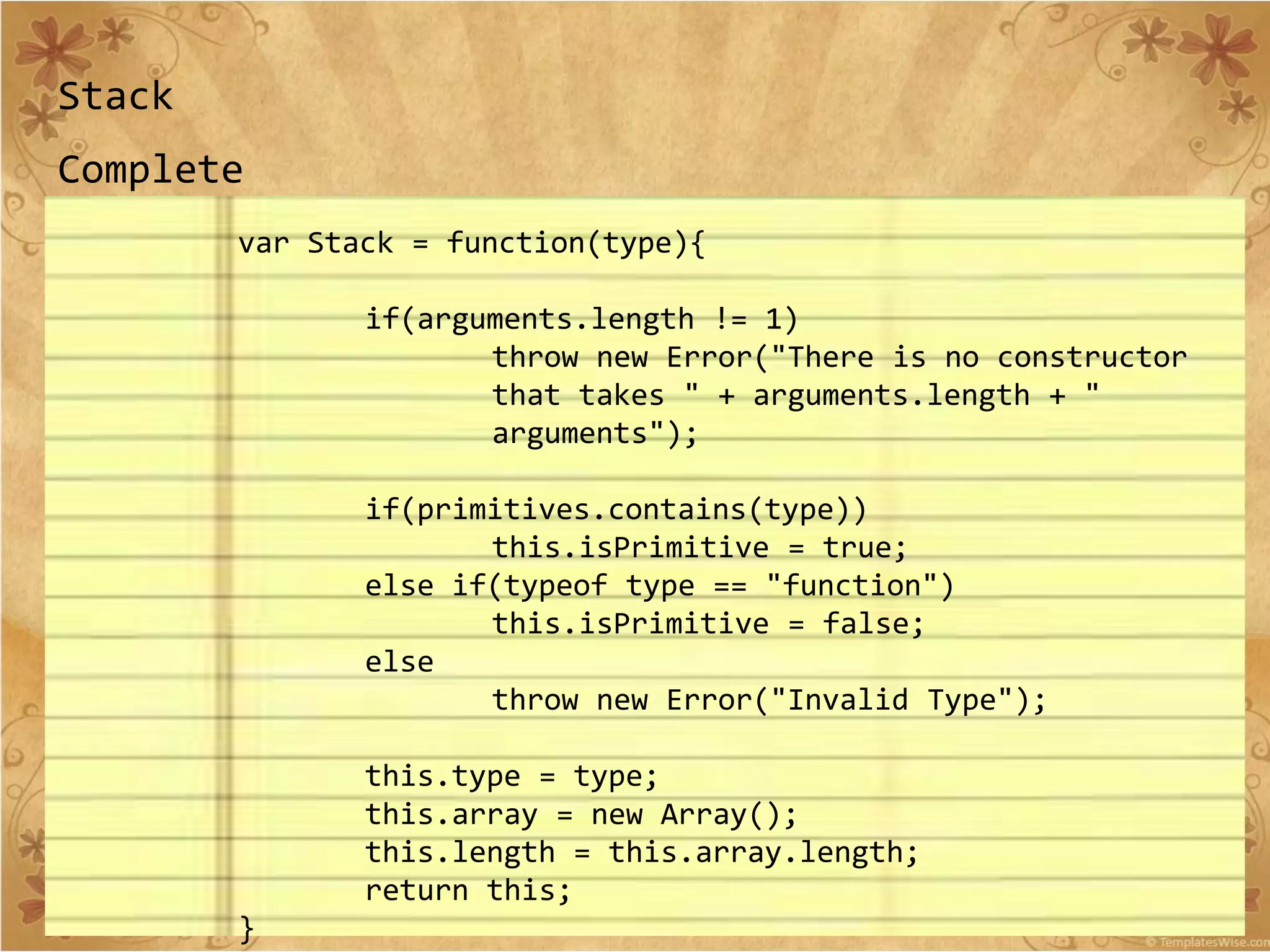
![StackCompleteStack.prototype.constructor = Stack;Stack.prototype.push = function(){var is Valid;for(var i = 0, j = arguments.length; i < j;i++){isValid = this.isPrimitive ? (this.type.toLowerCase() == typeofarguments[i]): (arguments[i] instanceof this.type);if(!isValid)throw new Error("Invalid Argument");}](https://image.slidesharecdn.com/extendingjavascriptpartone-100822092752-phpapp01/75/Extending-javascript-part-one-53-2048.jpg)
![StackComplete for(var i = 0, j = arguments.length; i < j;i++){ this.array.push(arguments[i]); } this.length = this.array.length; return this.array.length;}Stack.prototype.pop = function(){ this.array.pop(); this.length = this.array.length; return this.array.length;}Stack.prototype.getValue = function(index){ return this.array[index];}](https://image.slidesharecdn.com/extendingjavascriptpartone-100822092752-phpapp01/75/Extending-javascript-part-one-54-2048.jpg)
![StackCompleteStack.prototype.setValue = function(index, value){ var isValid = this.isPrimitive ? (this.type.toLowerCase() == typeof value) : (value instanceof this.type); if(!isValid) throw new Error("Invalid Argument"); this.array[index] = value; return this.array[index];}](https://image.slidesharecdn.com/extendingjavascriptpartone-100822092752-phpapp01/75/Extending-javascript-part-one-55-2048.jpg)

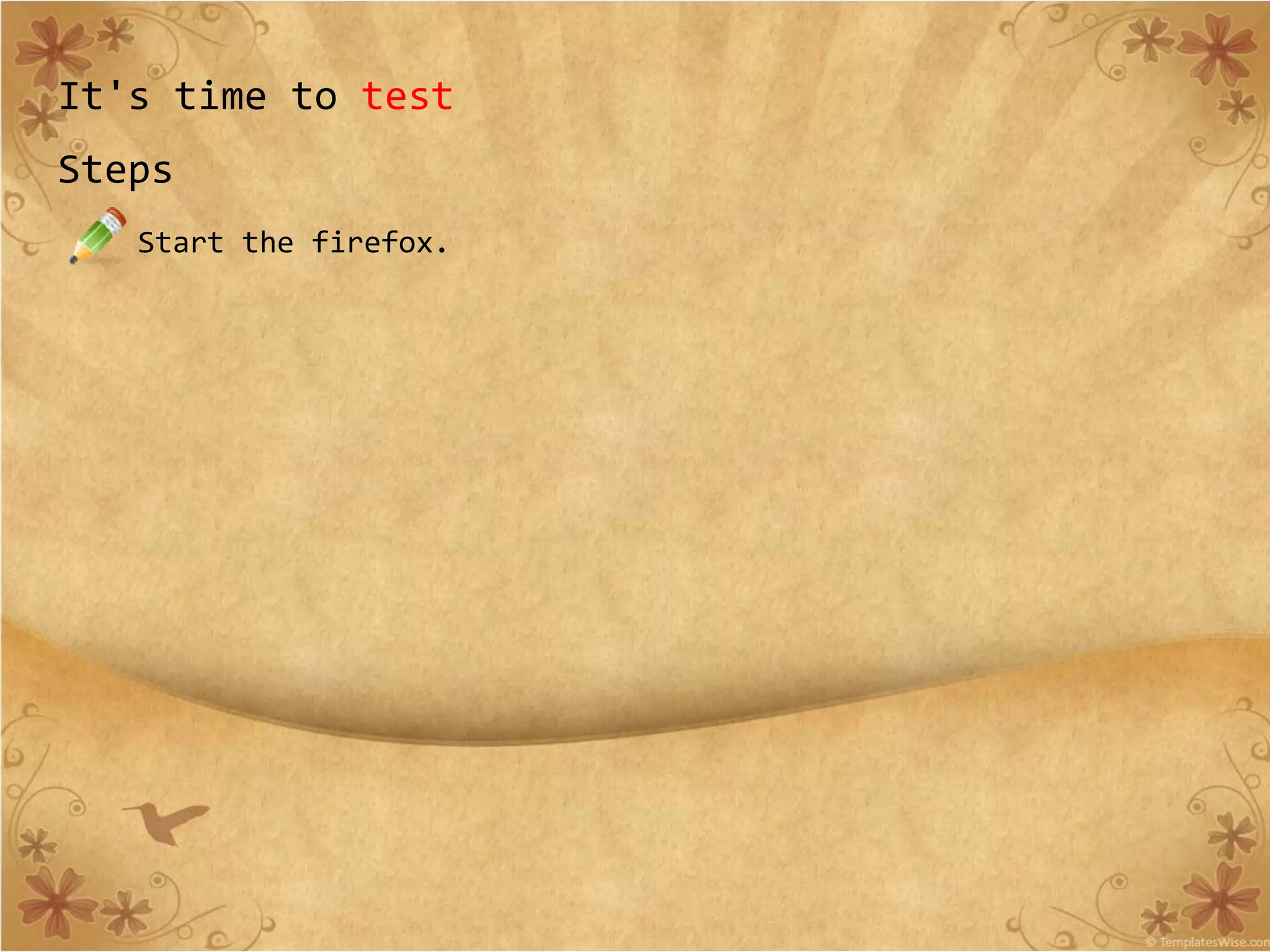
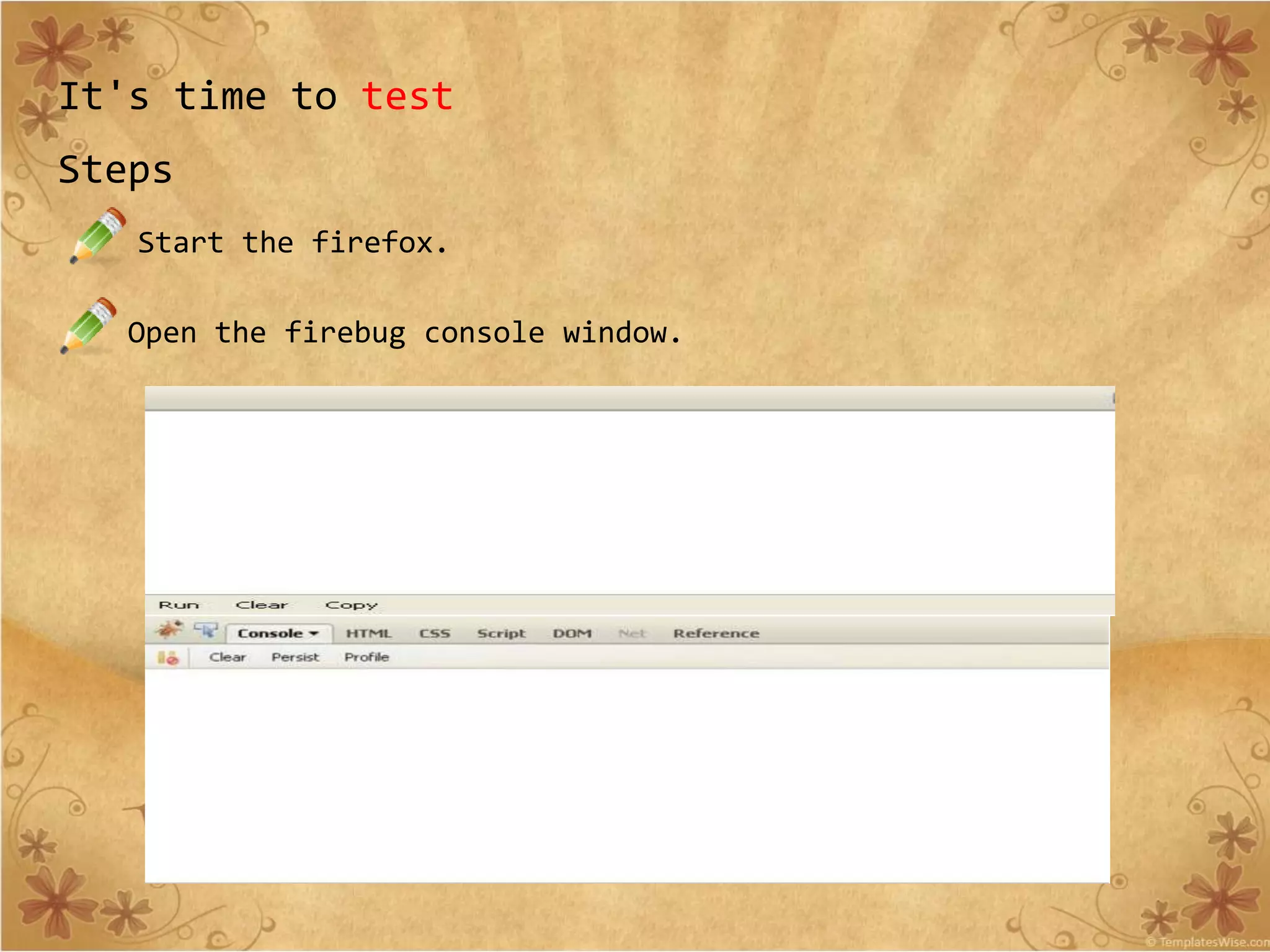
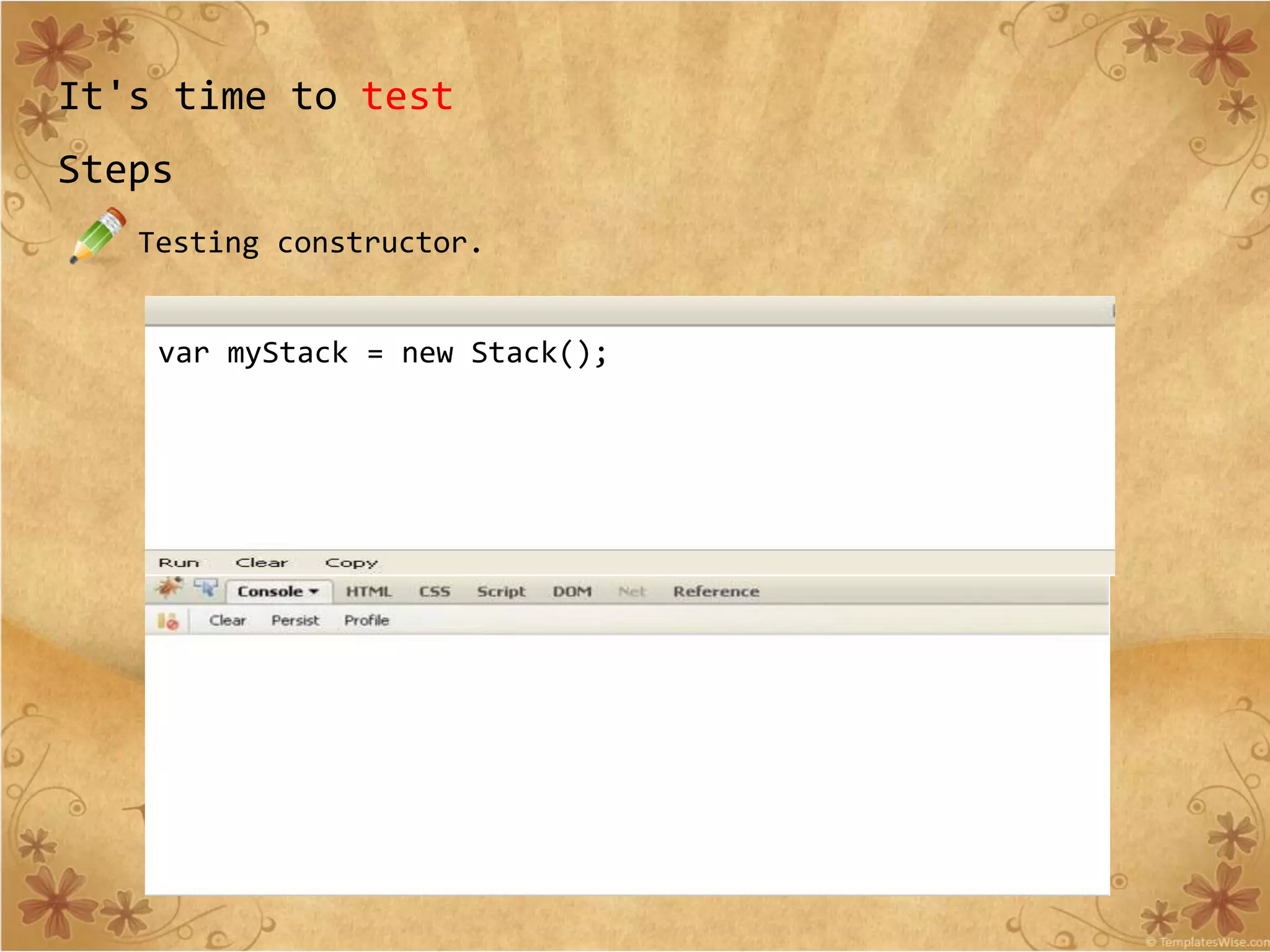
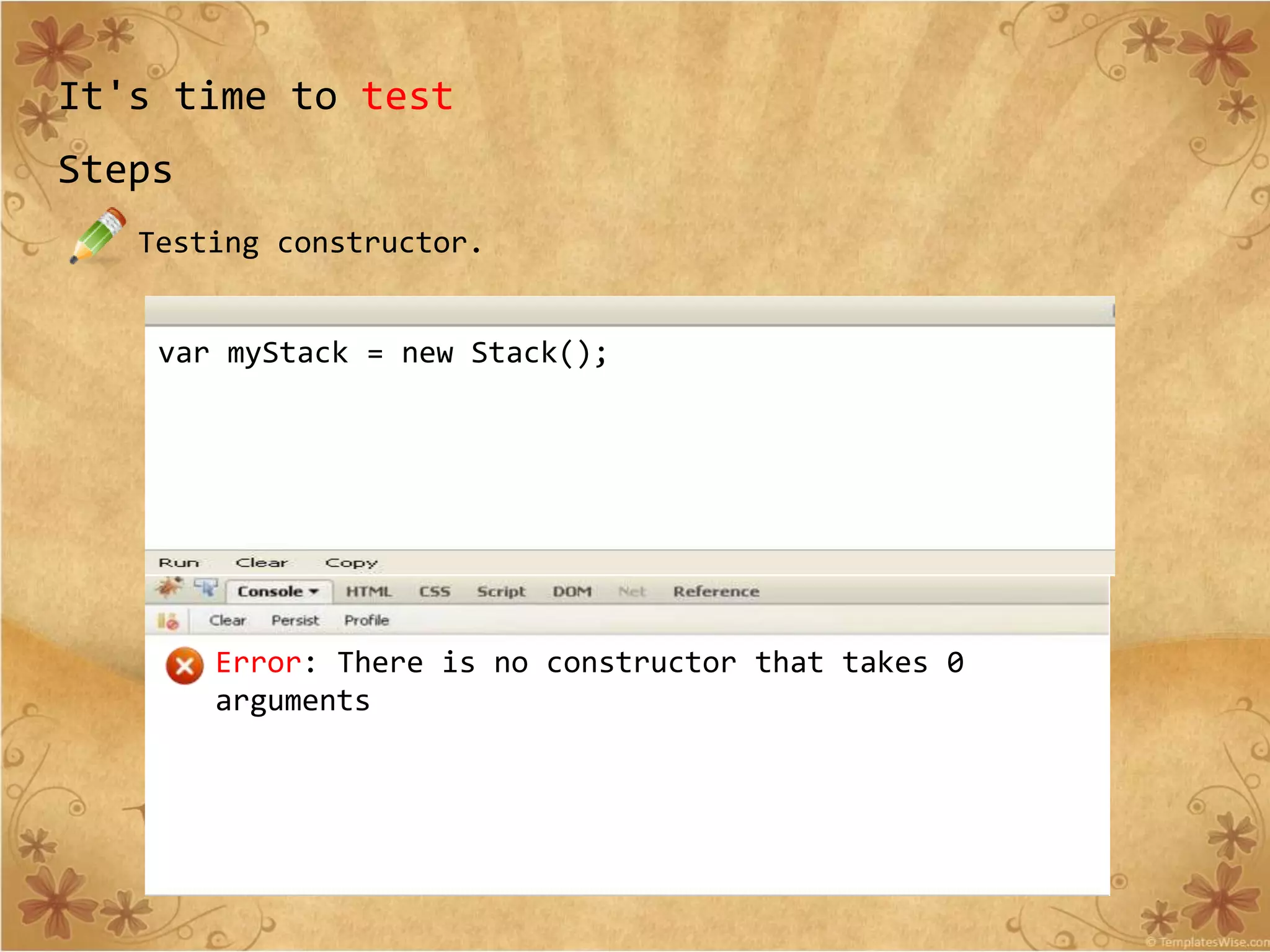
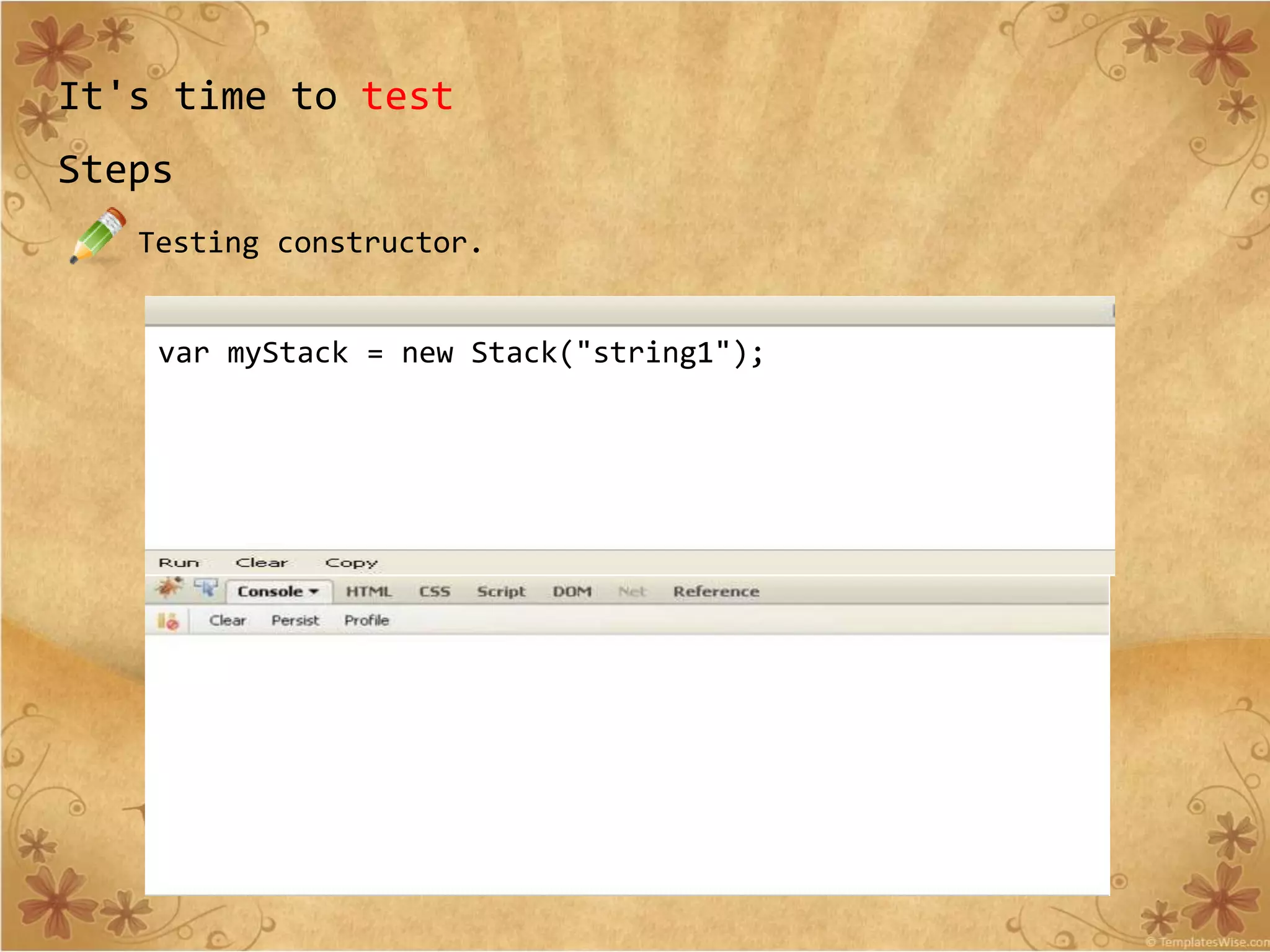
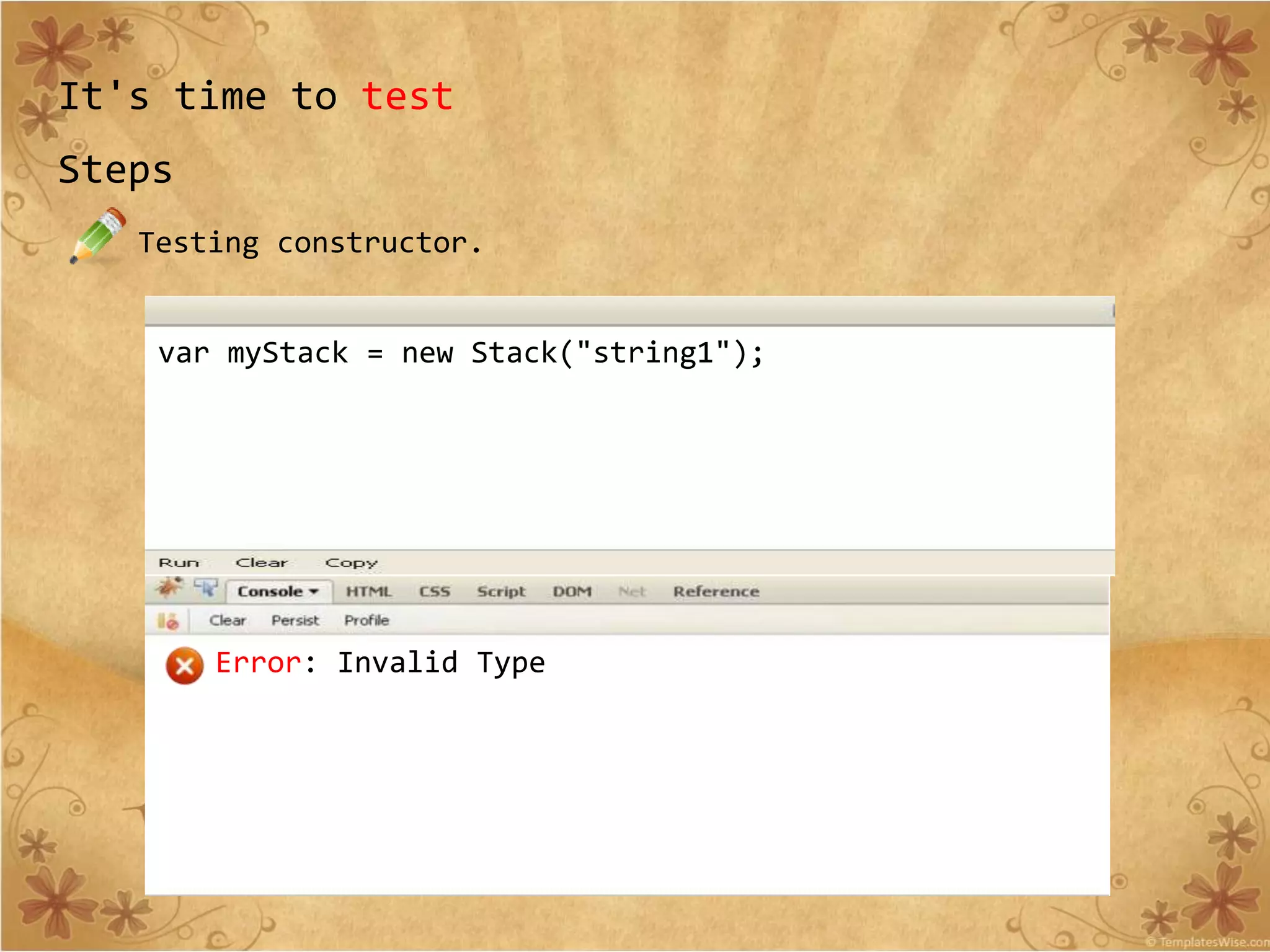
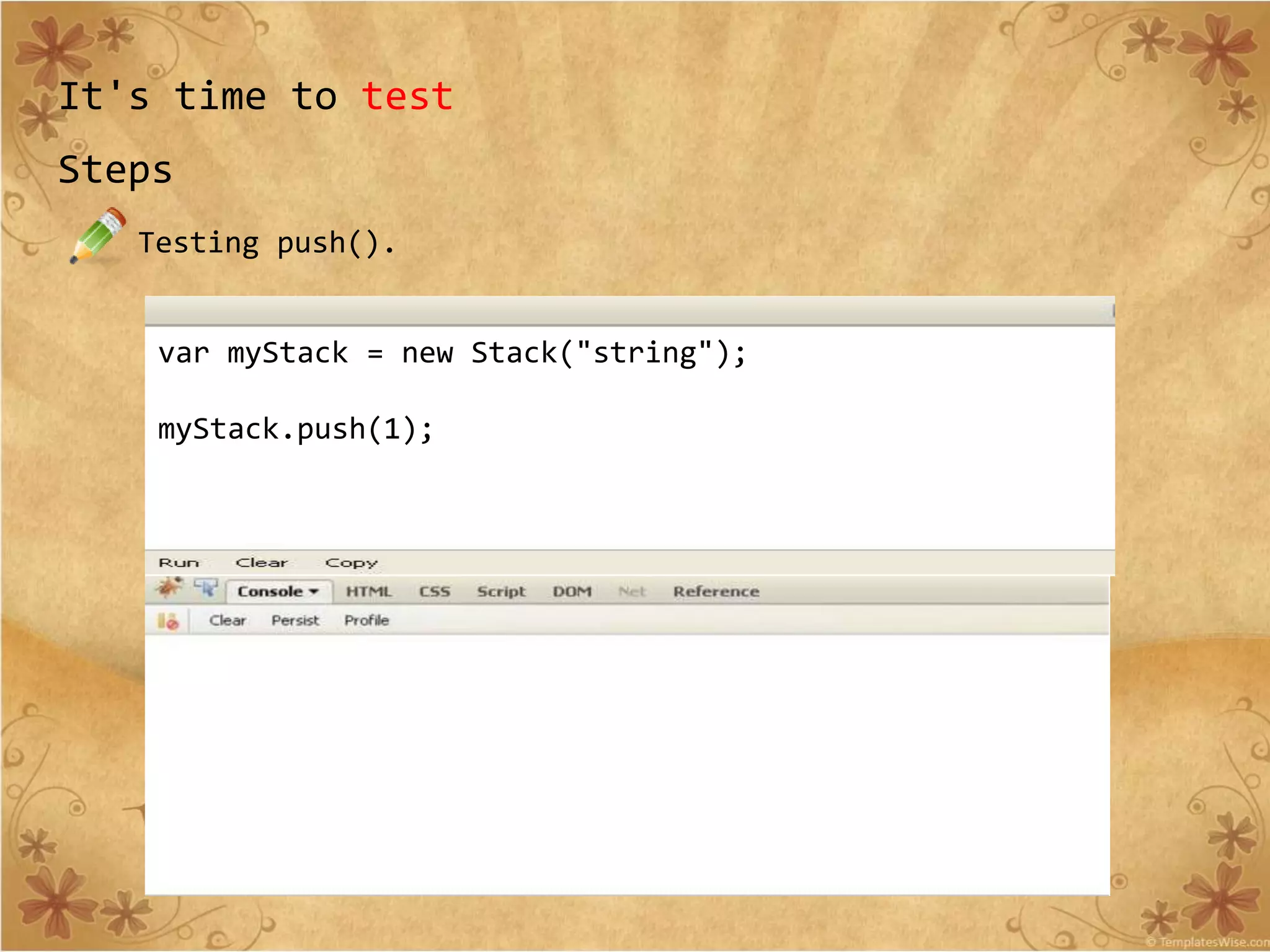
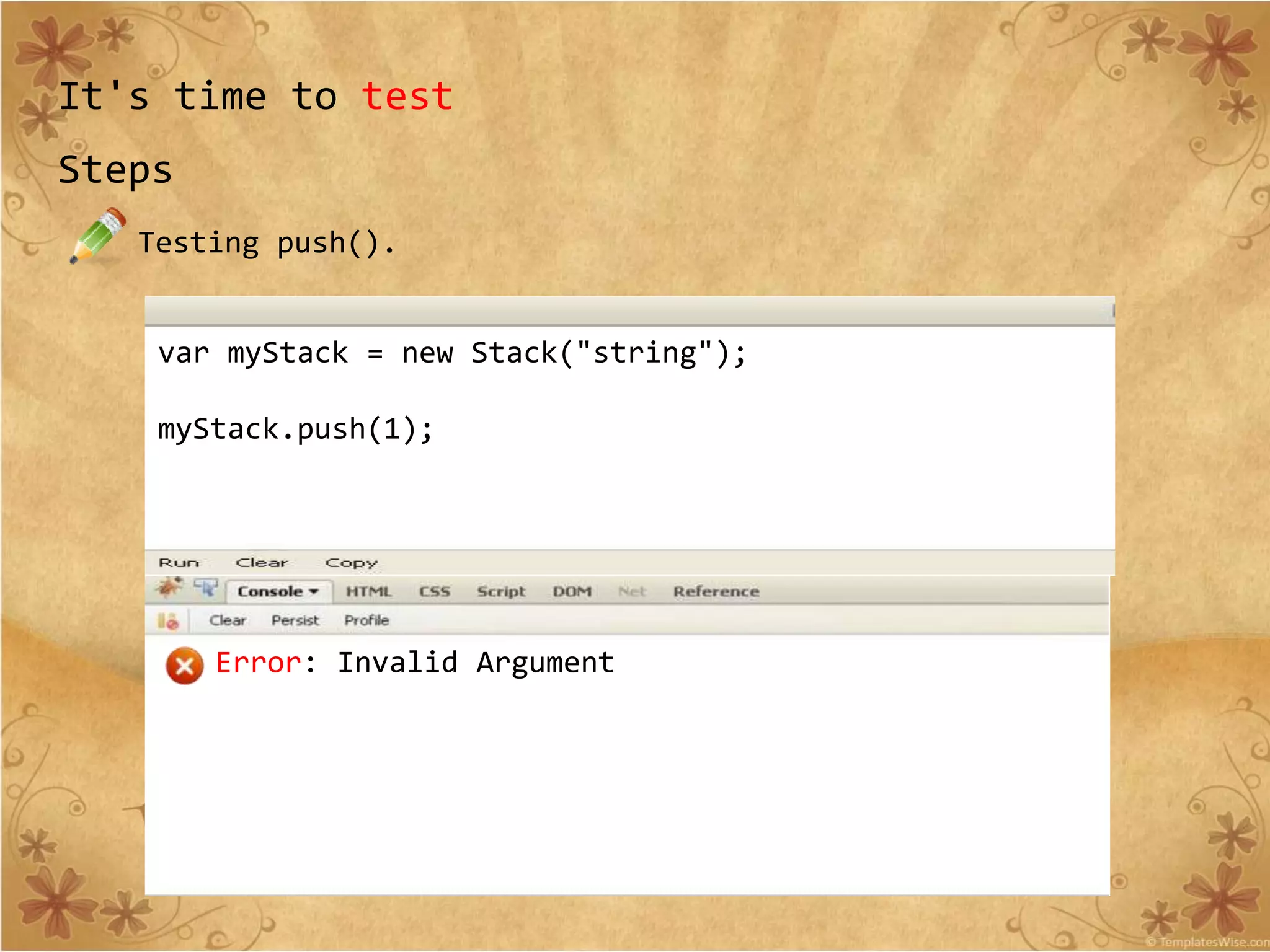
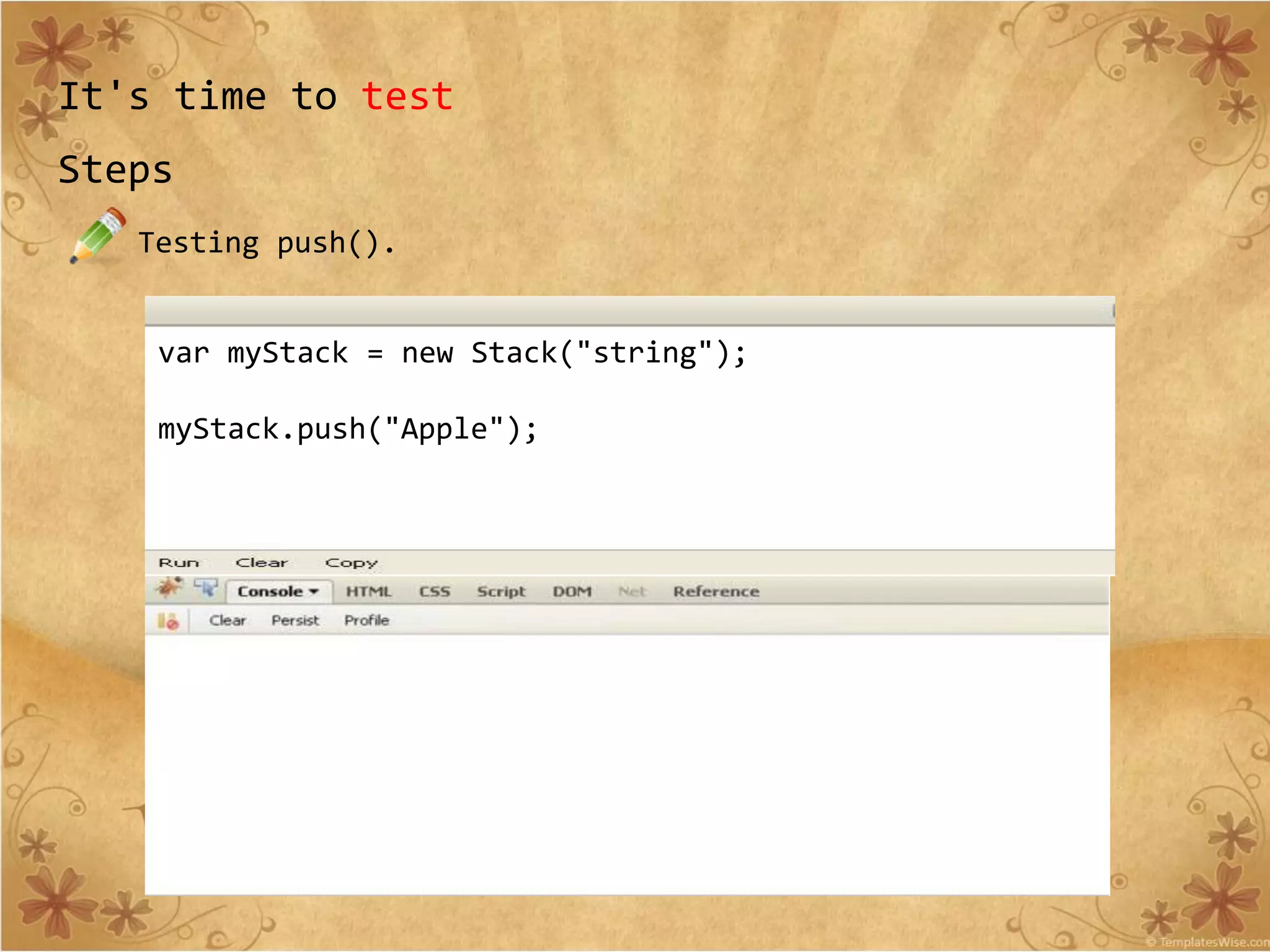
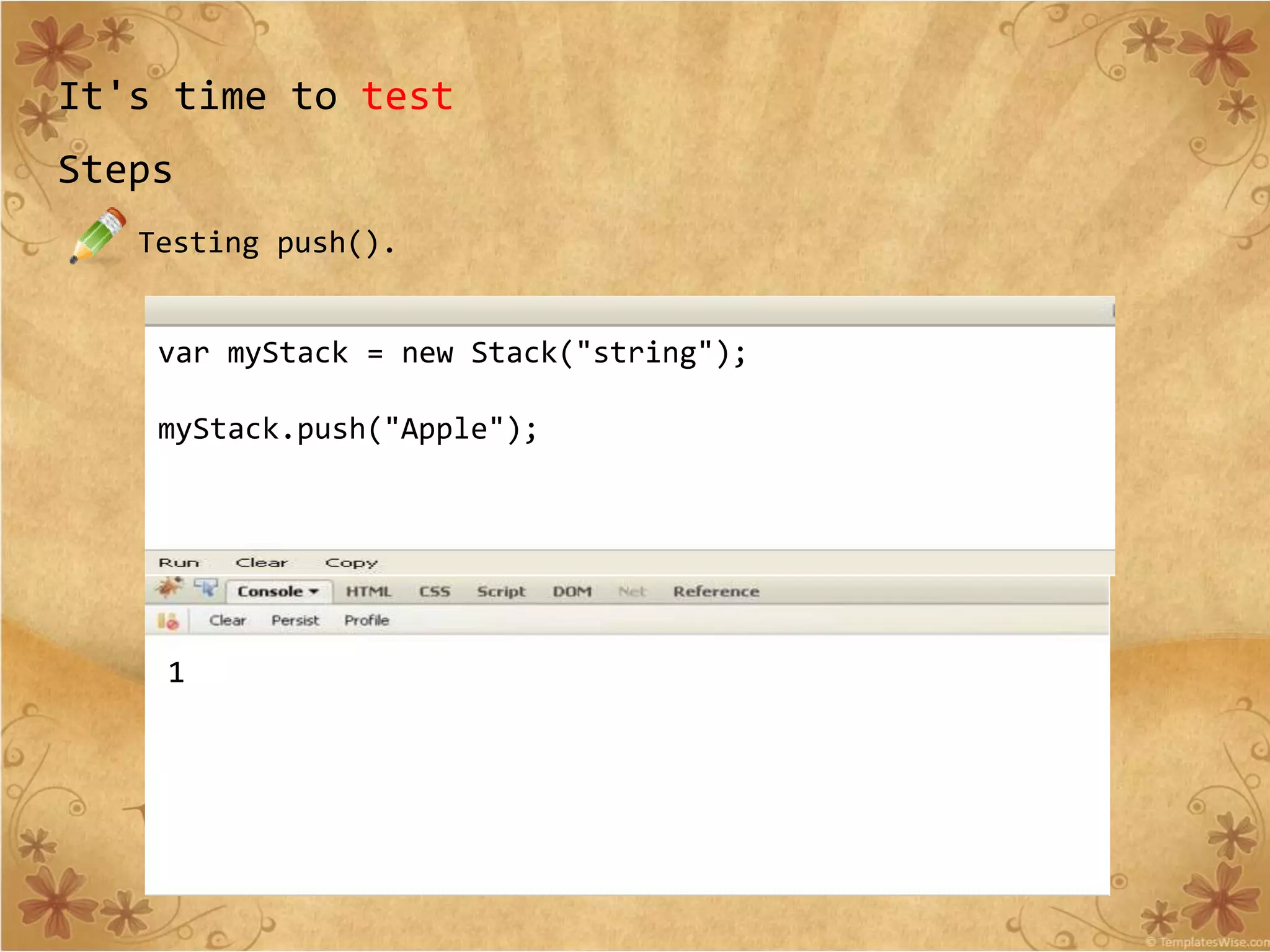
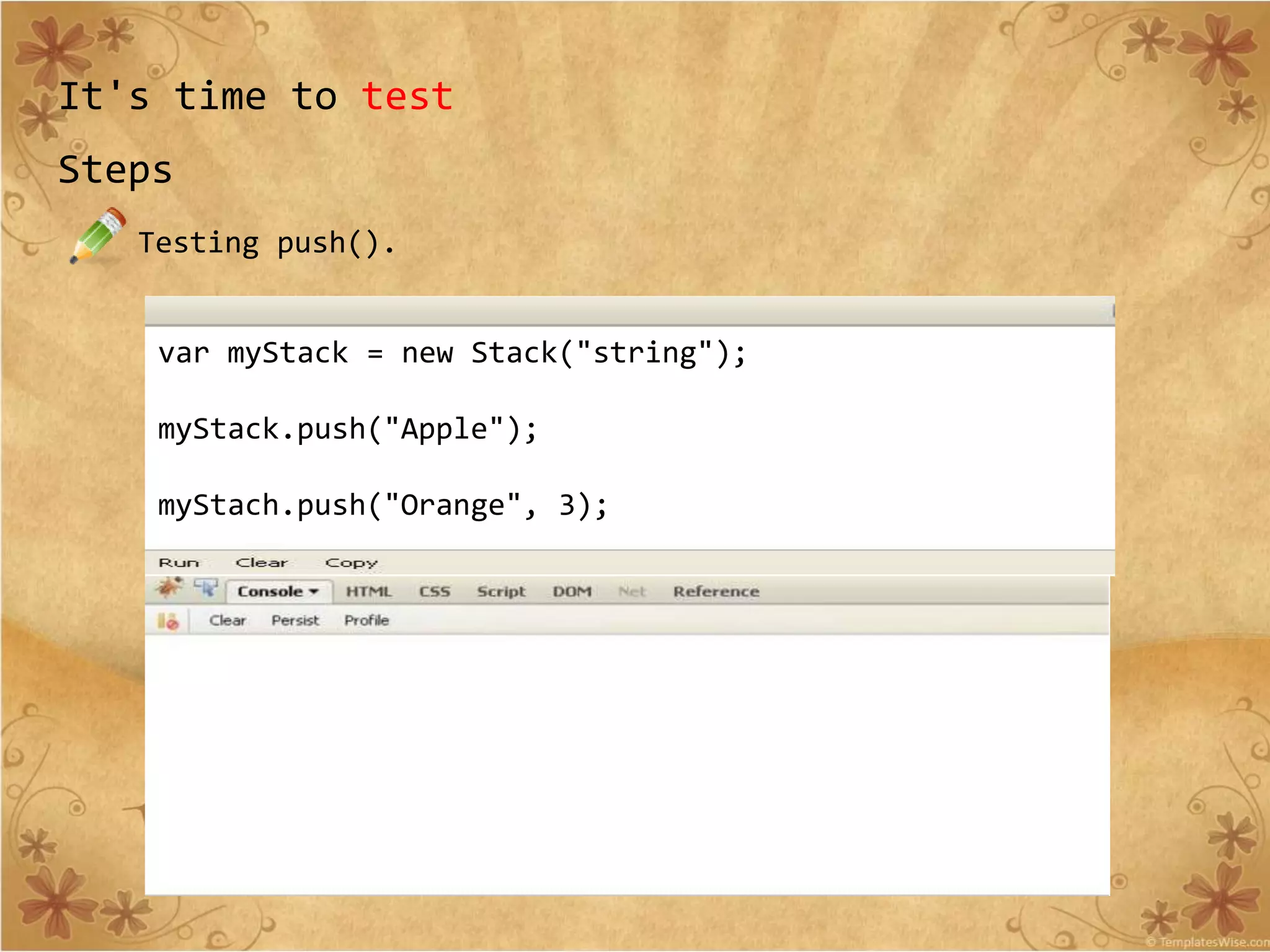
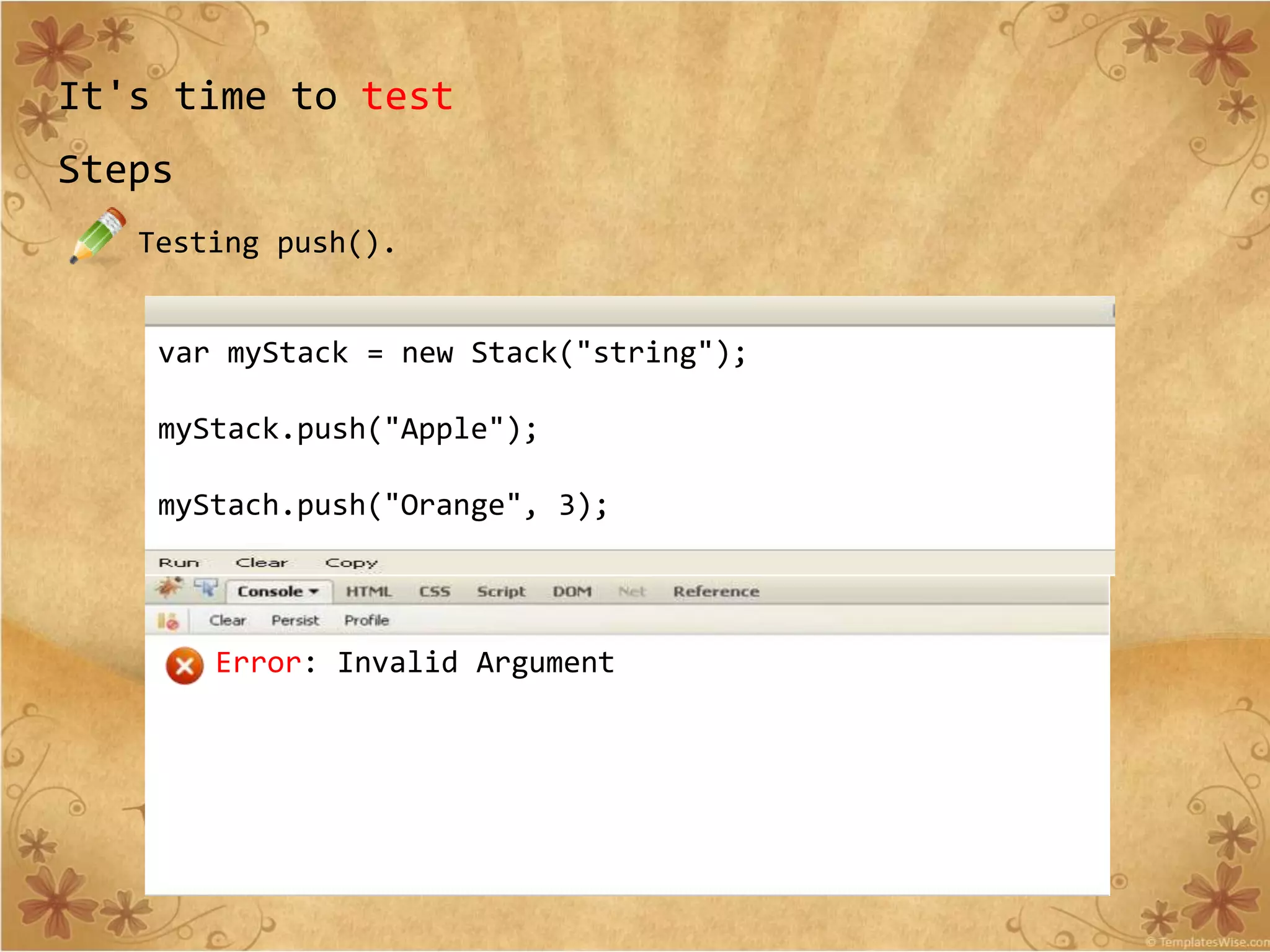
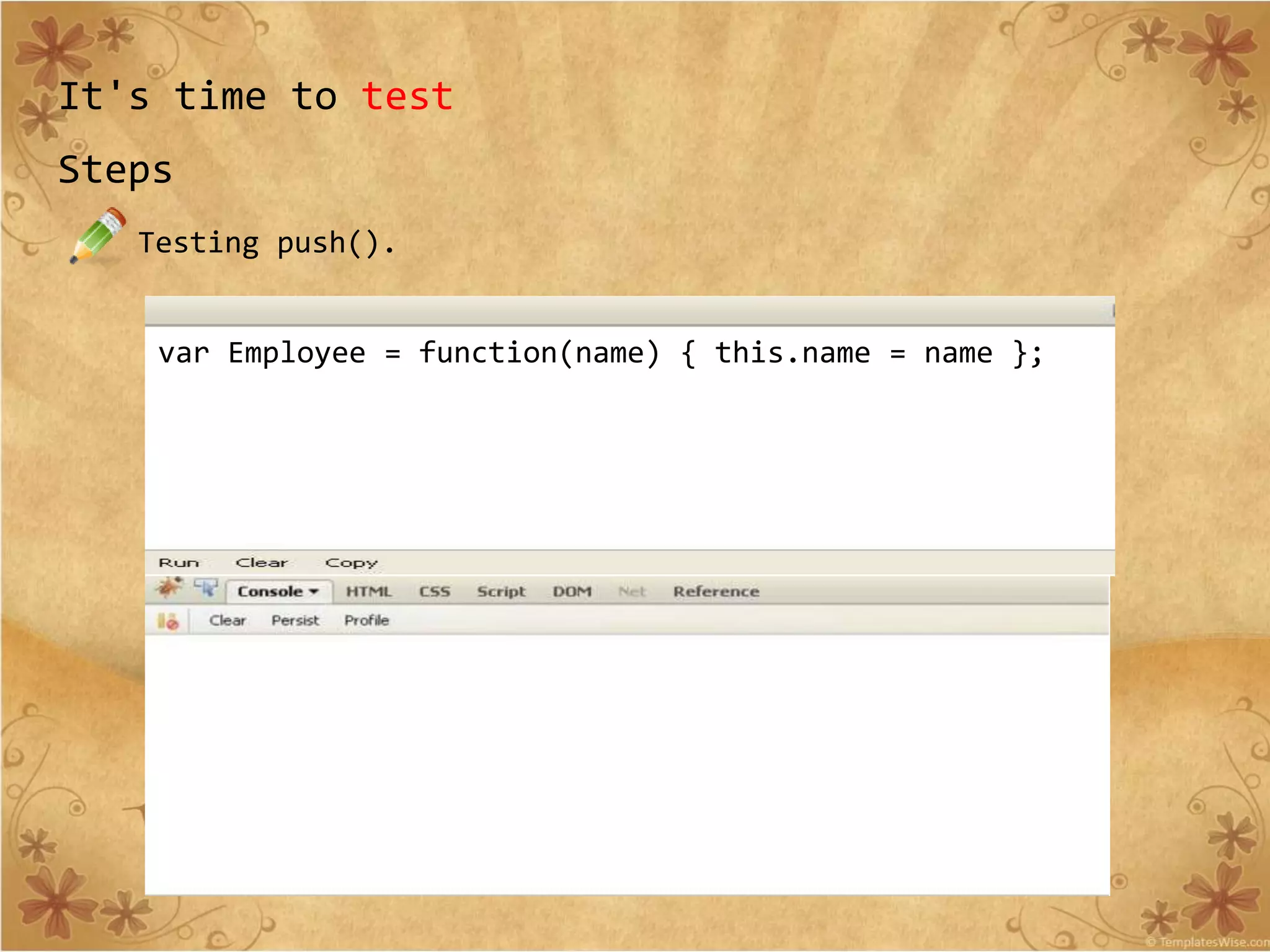
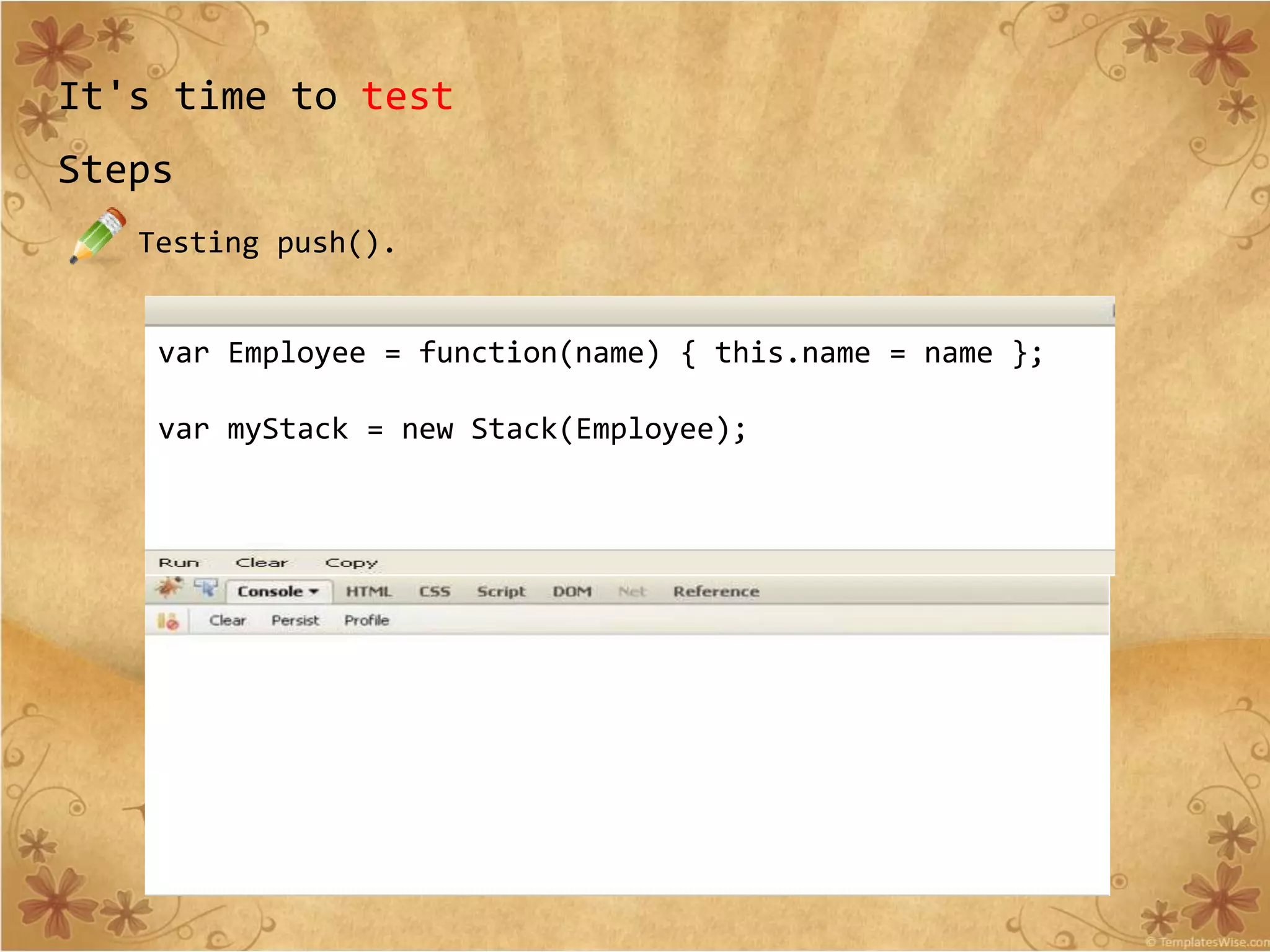
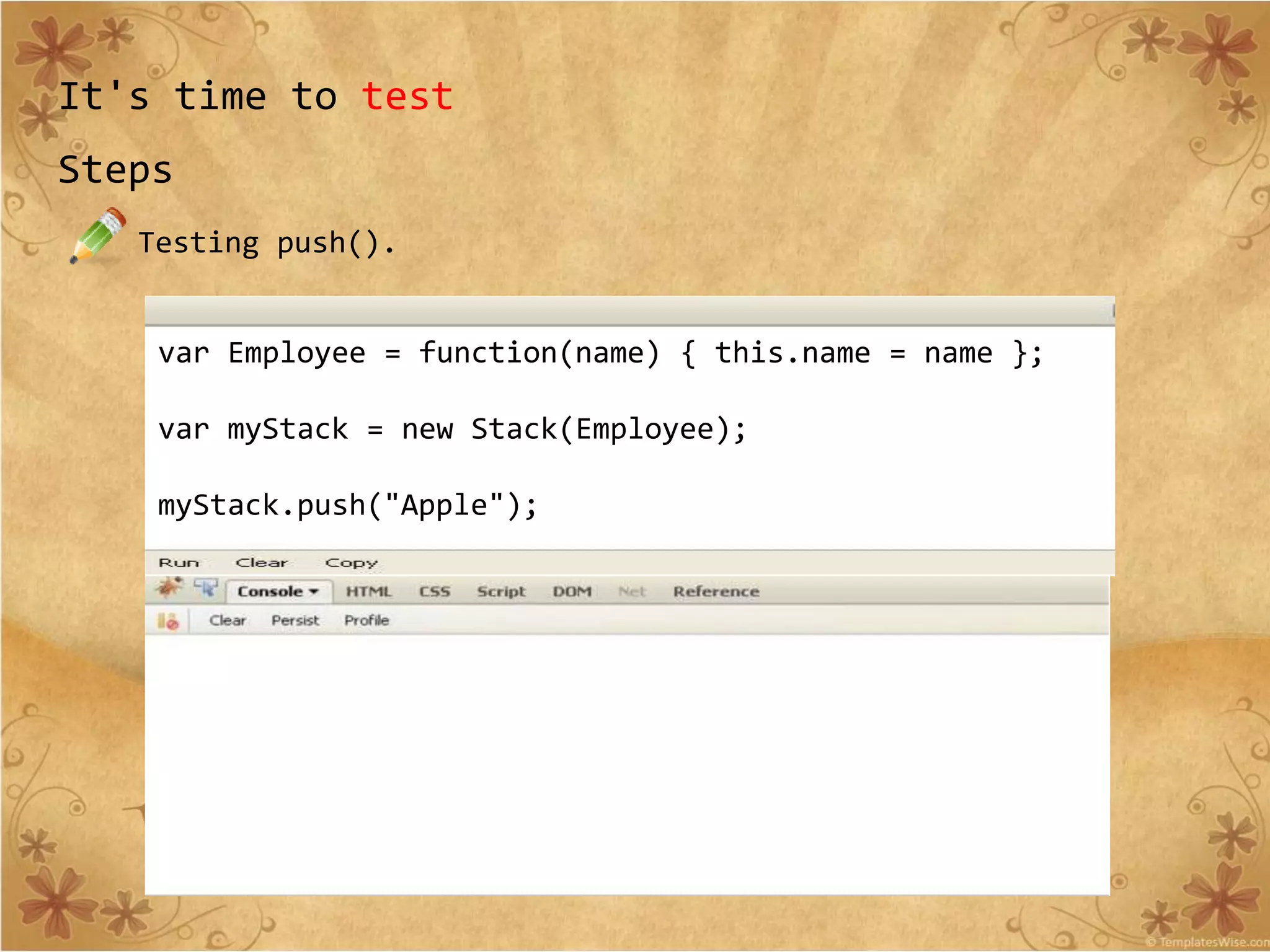
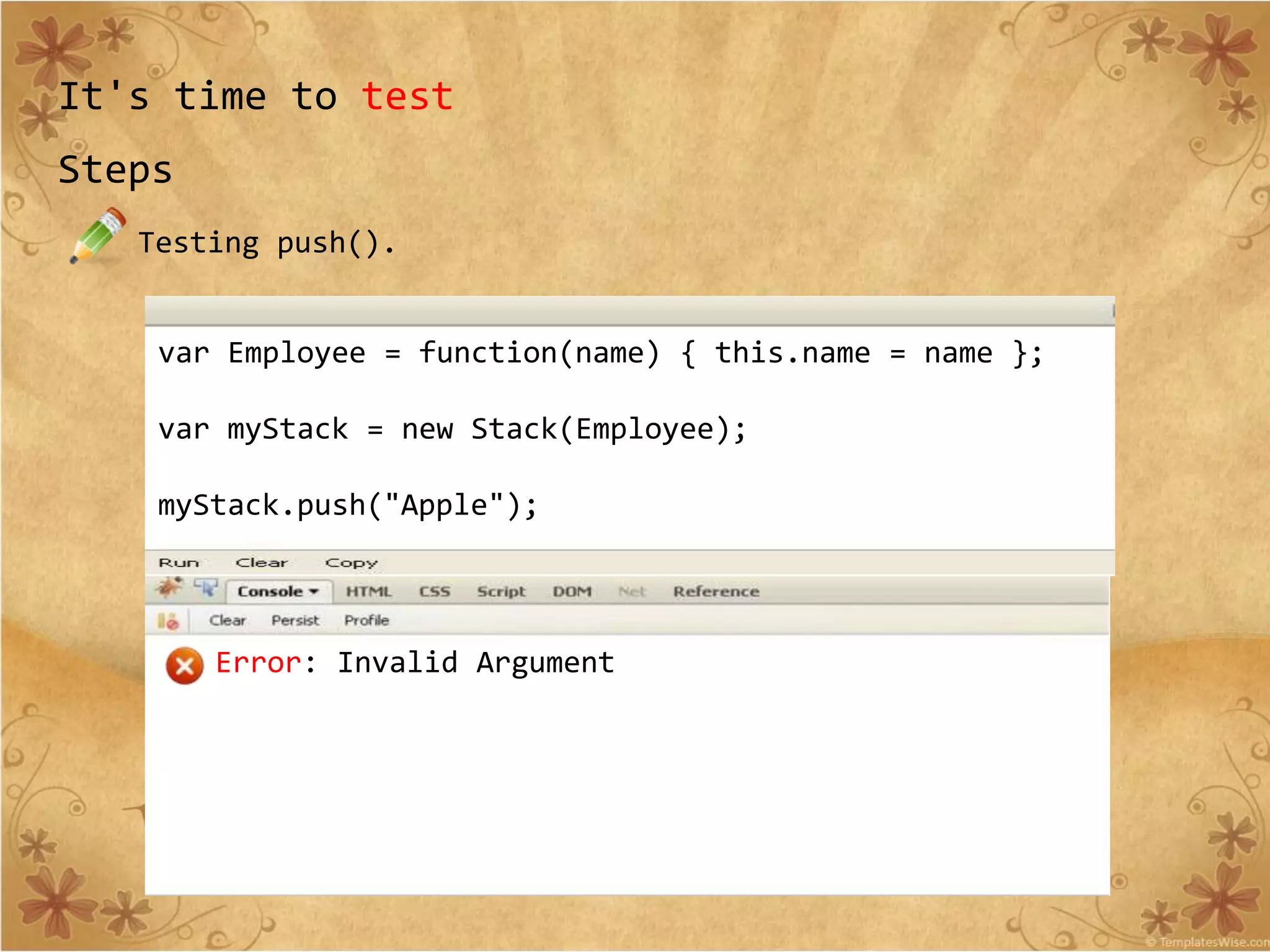
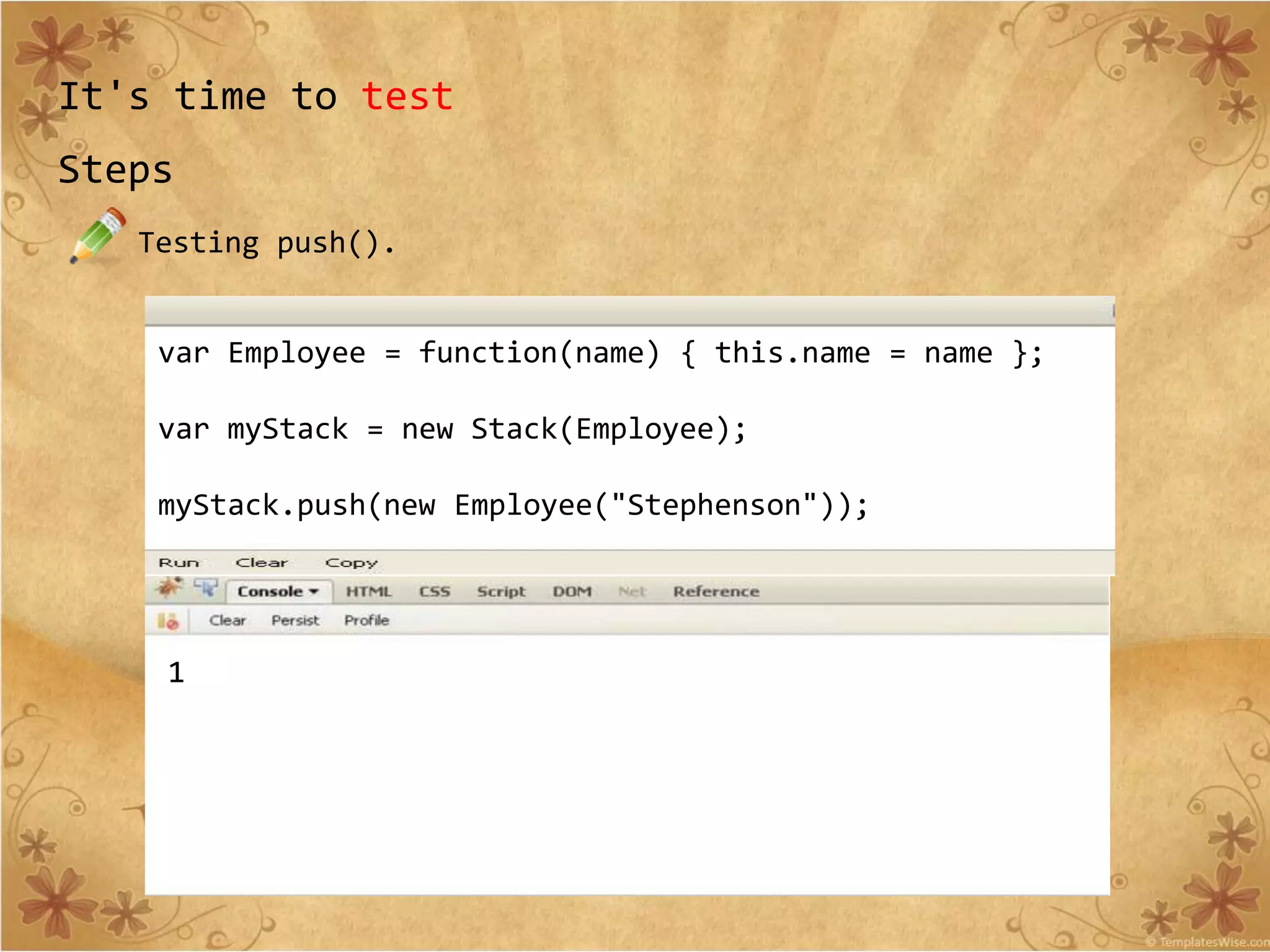
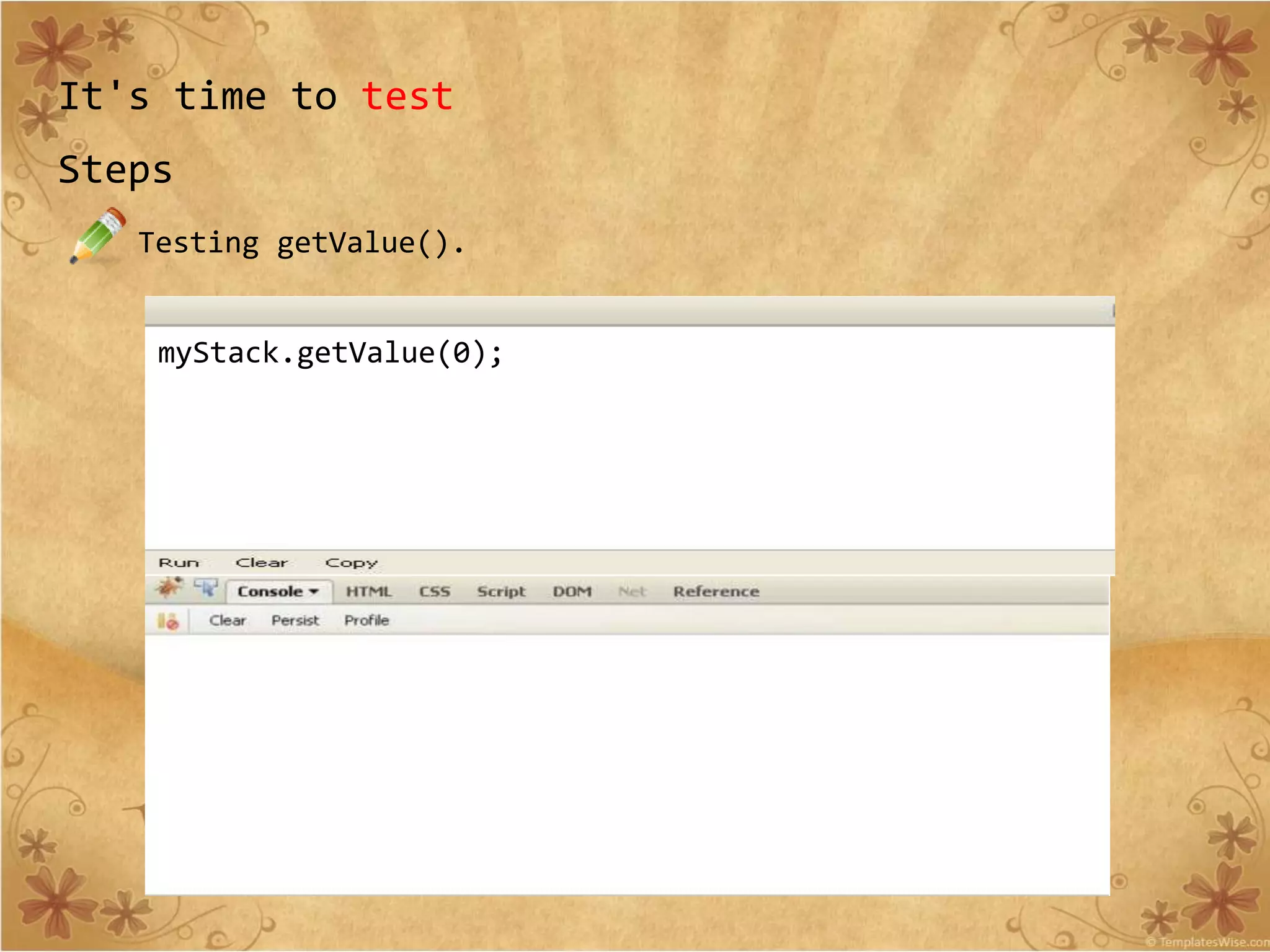
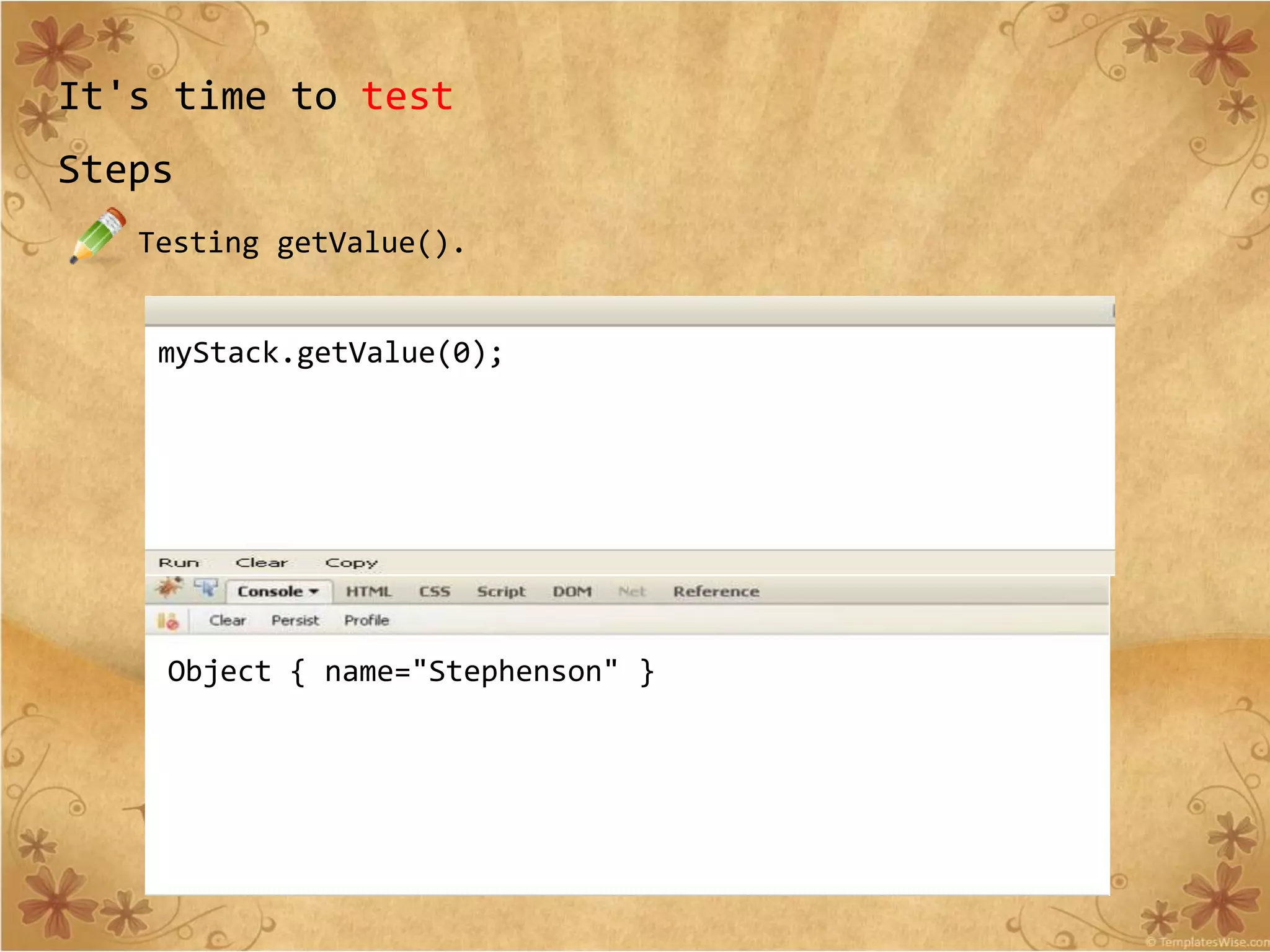
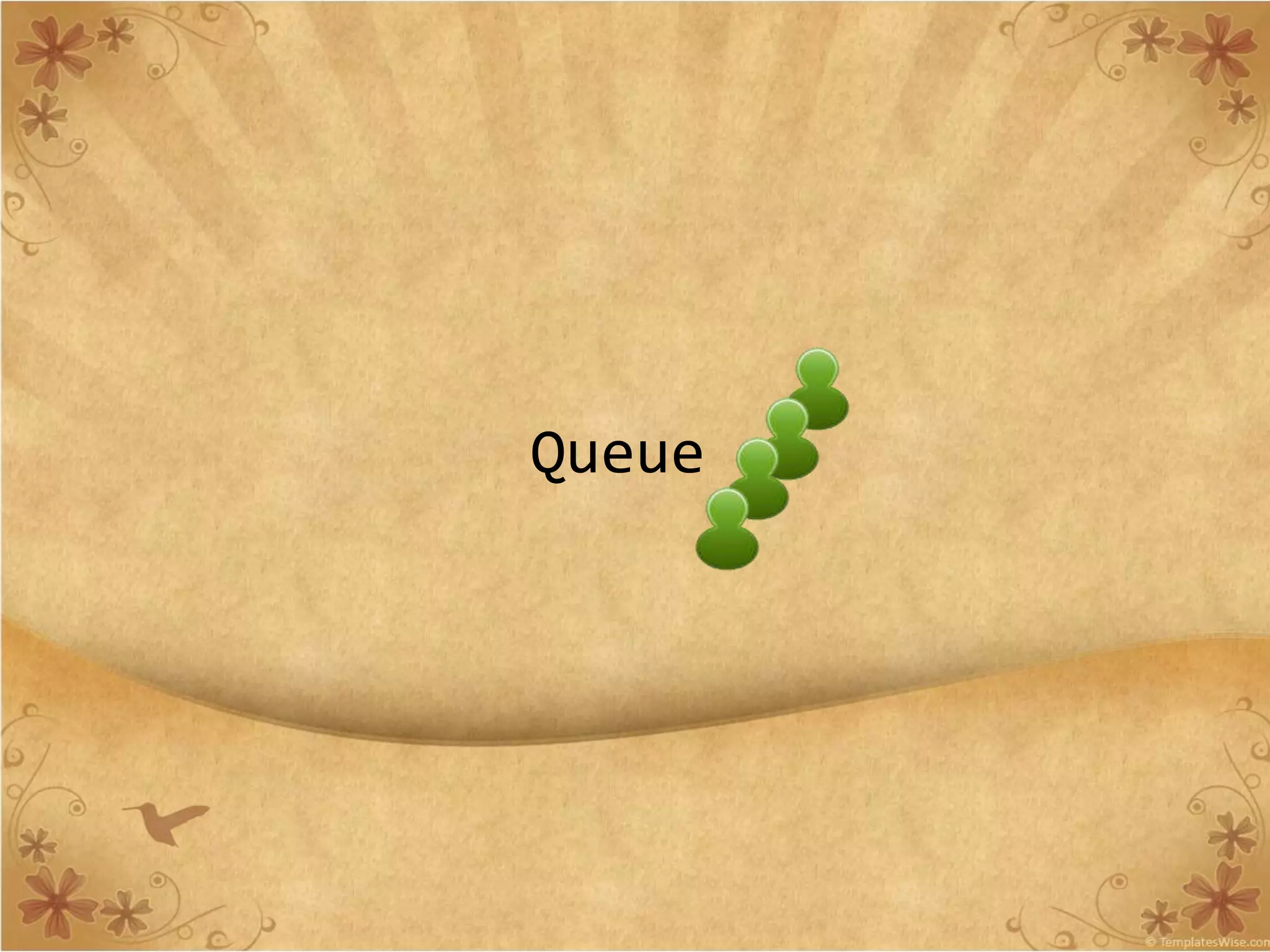
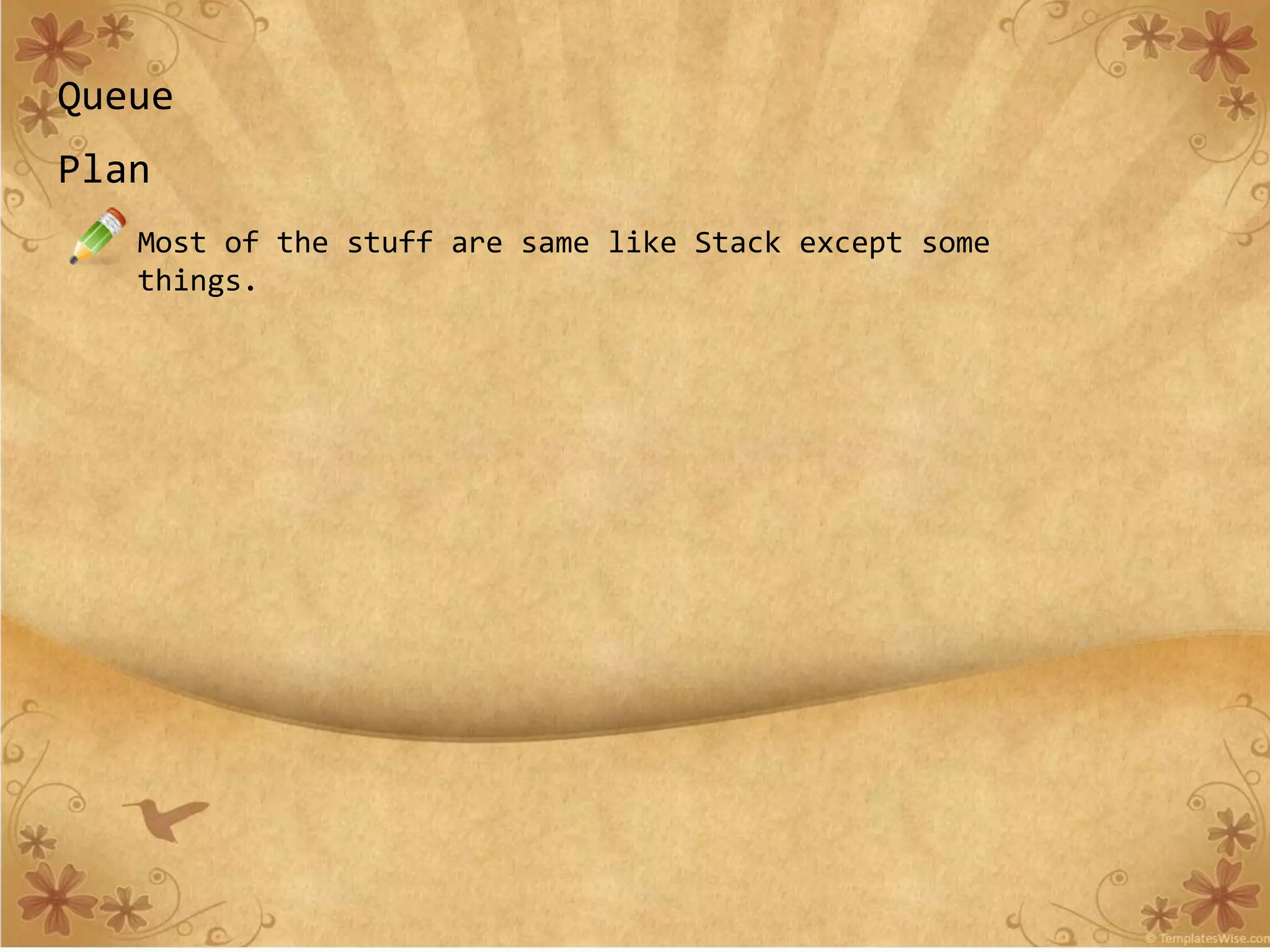
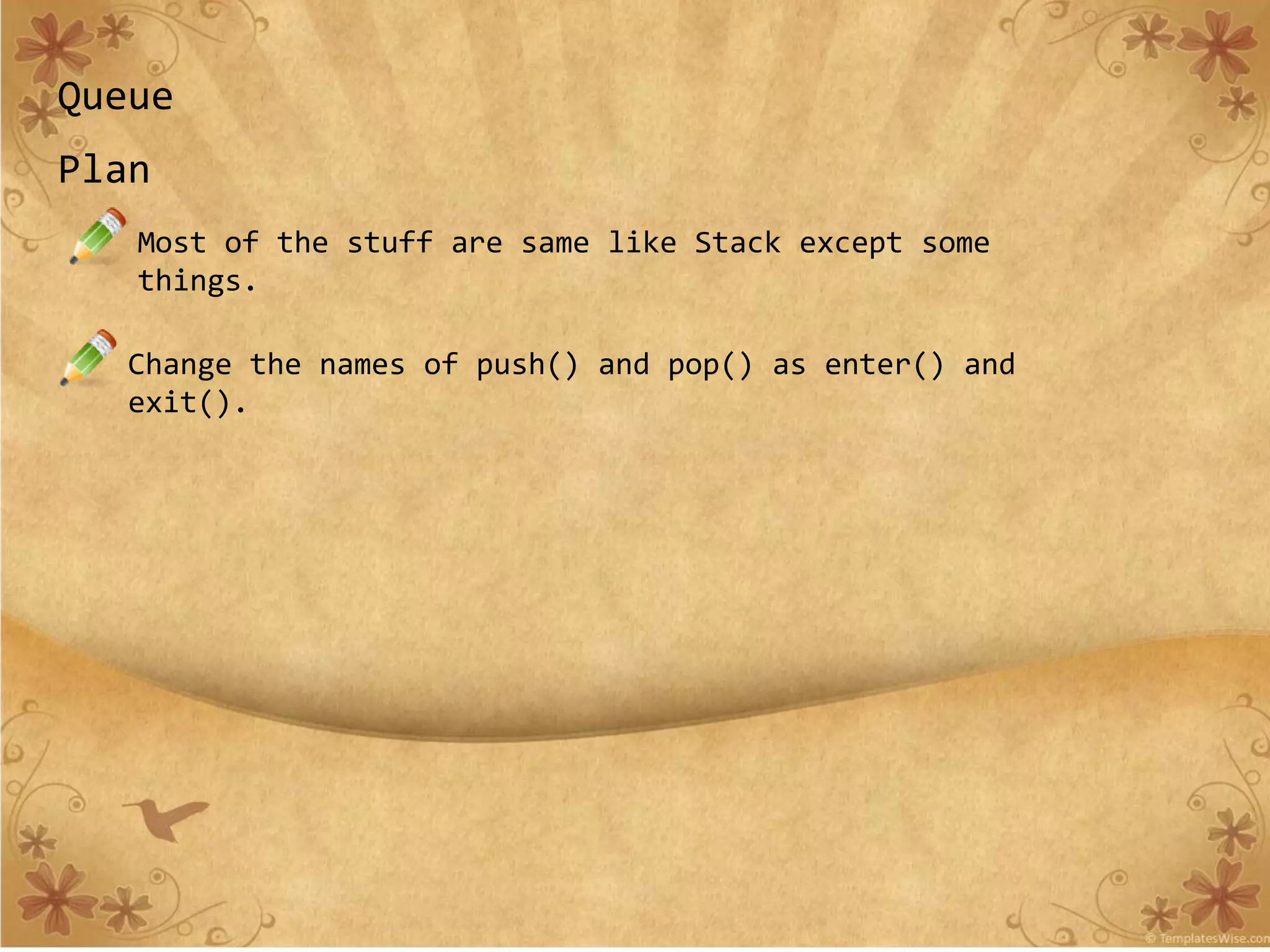
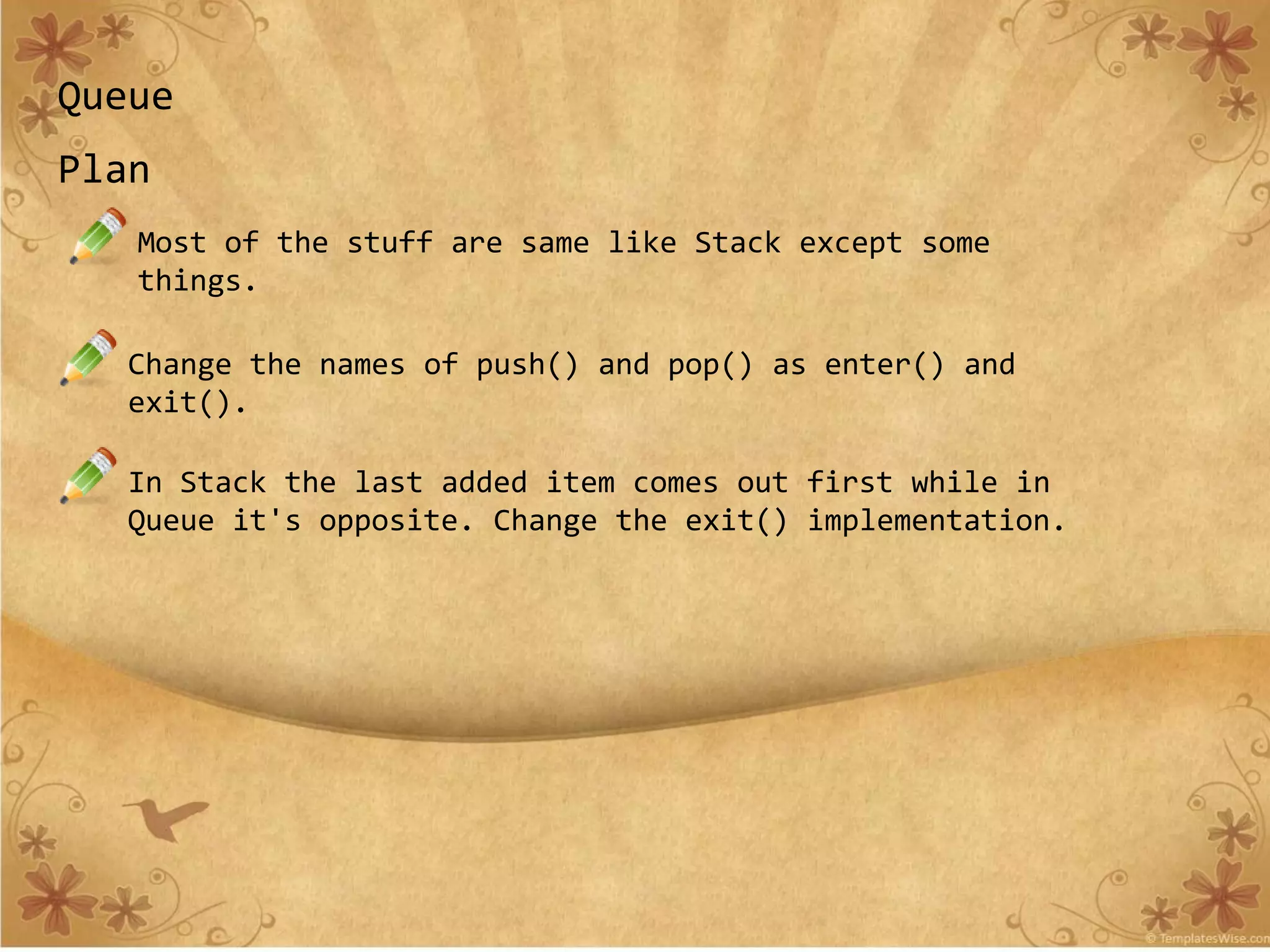
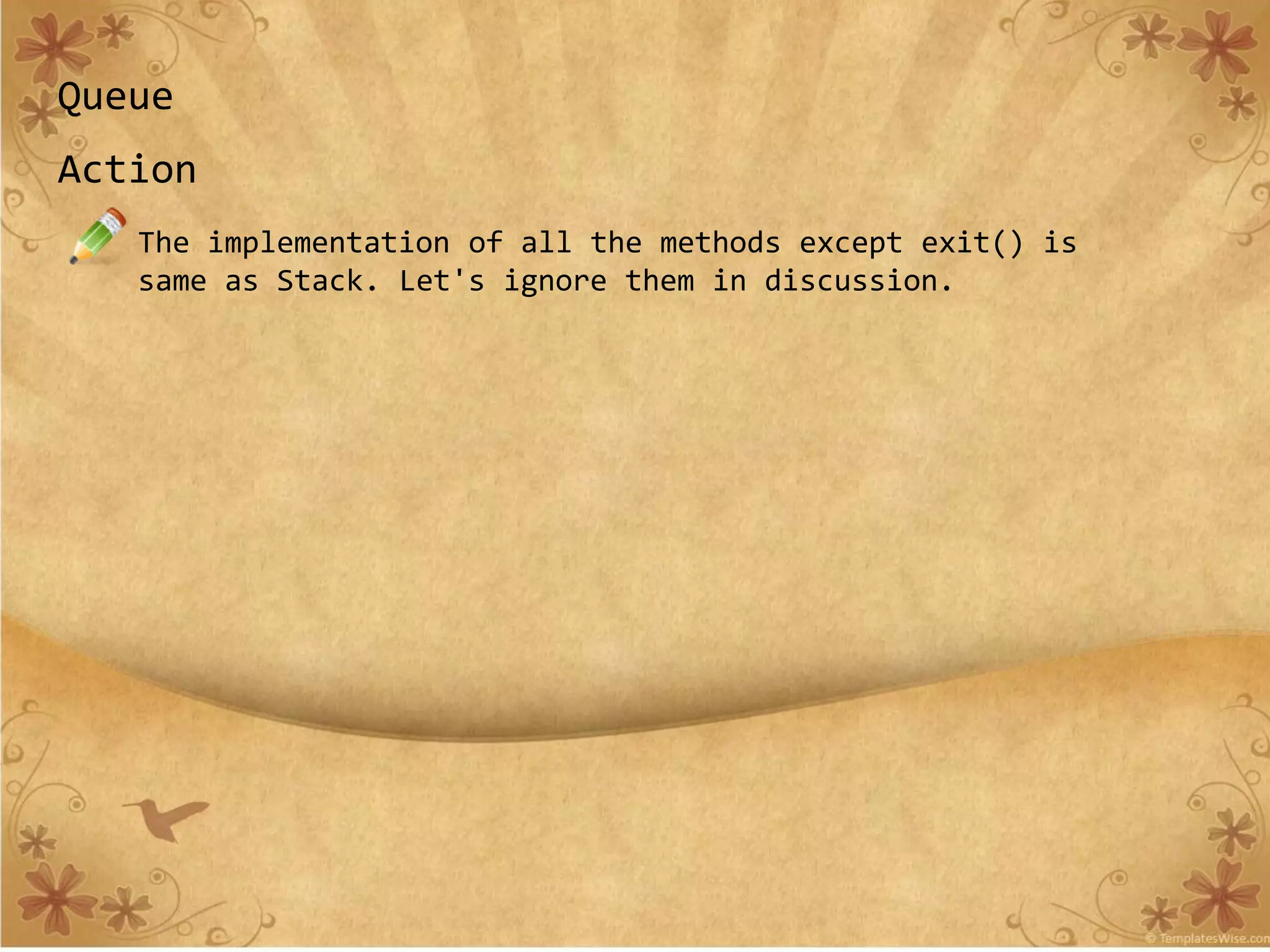
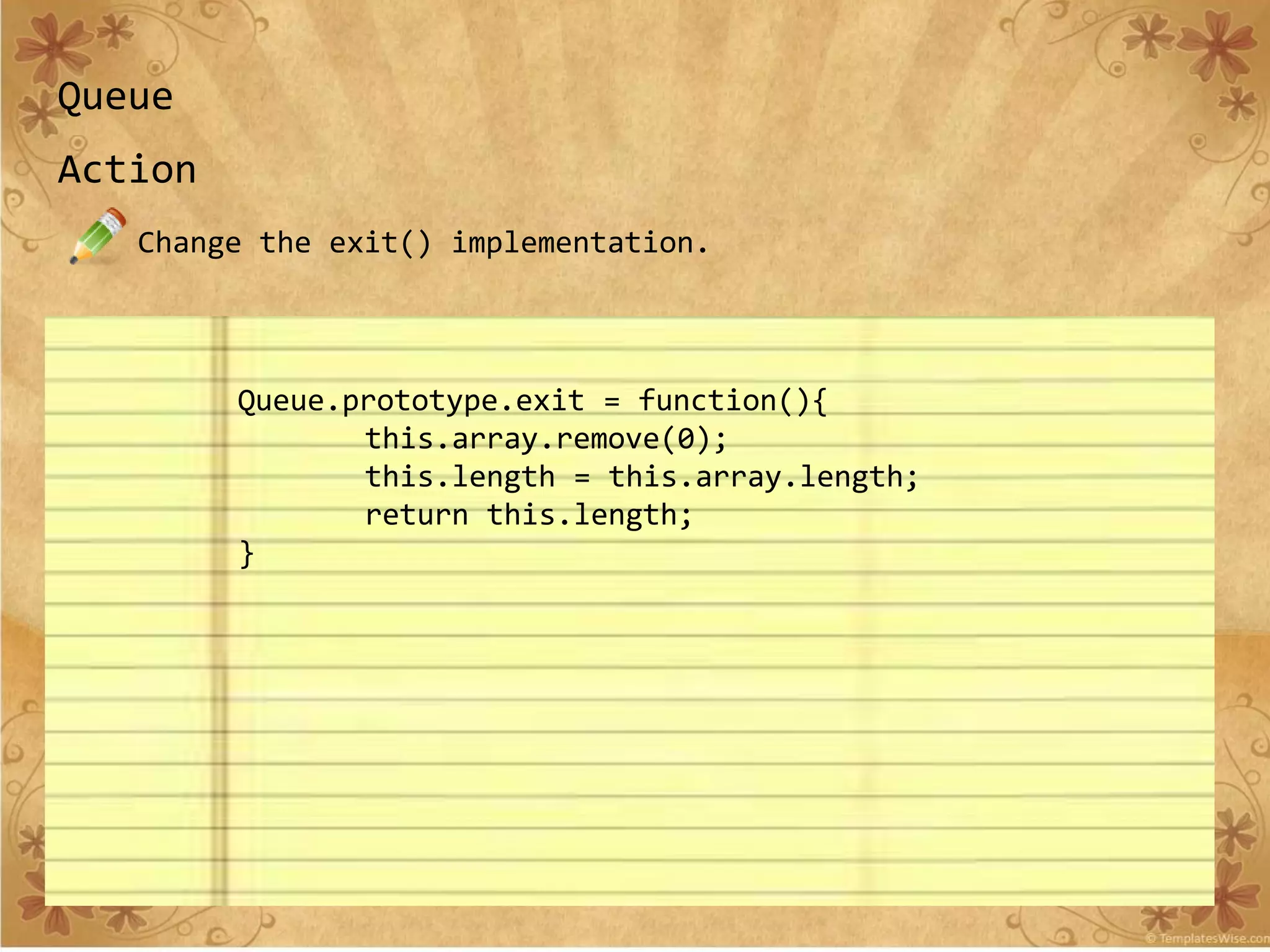
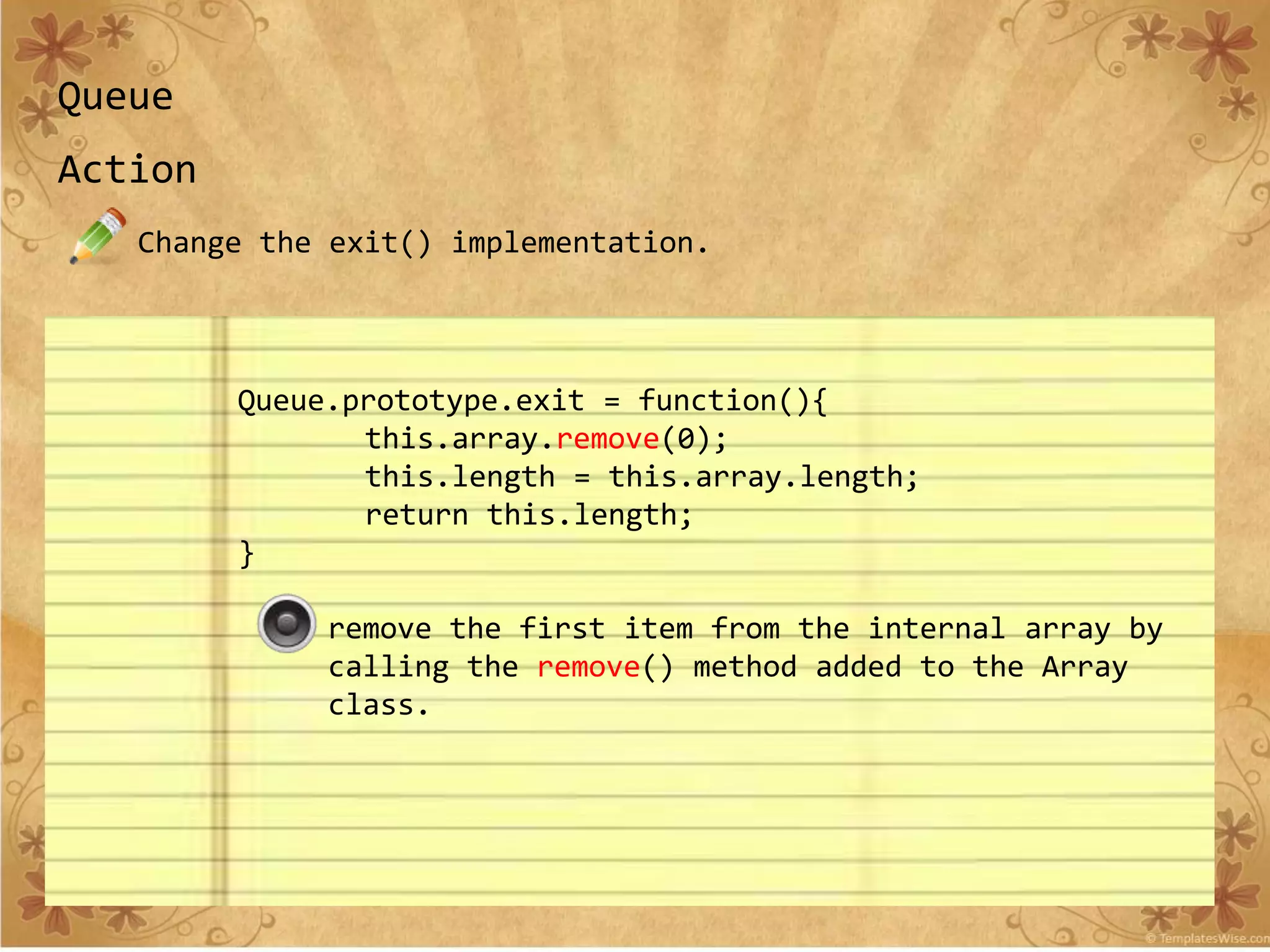
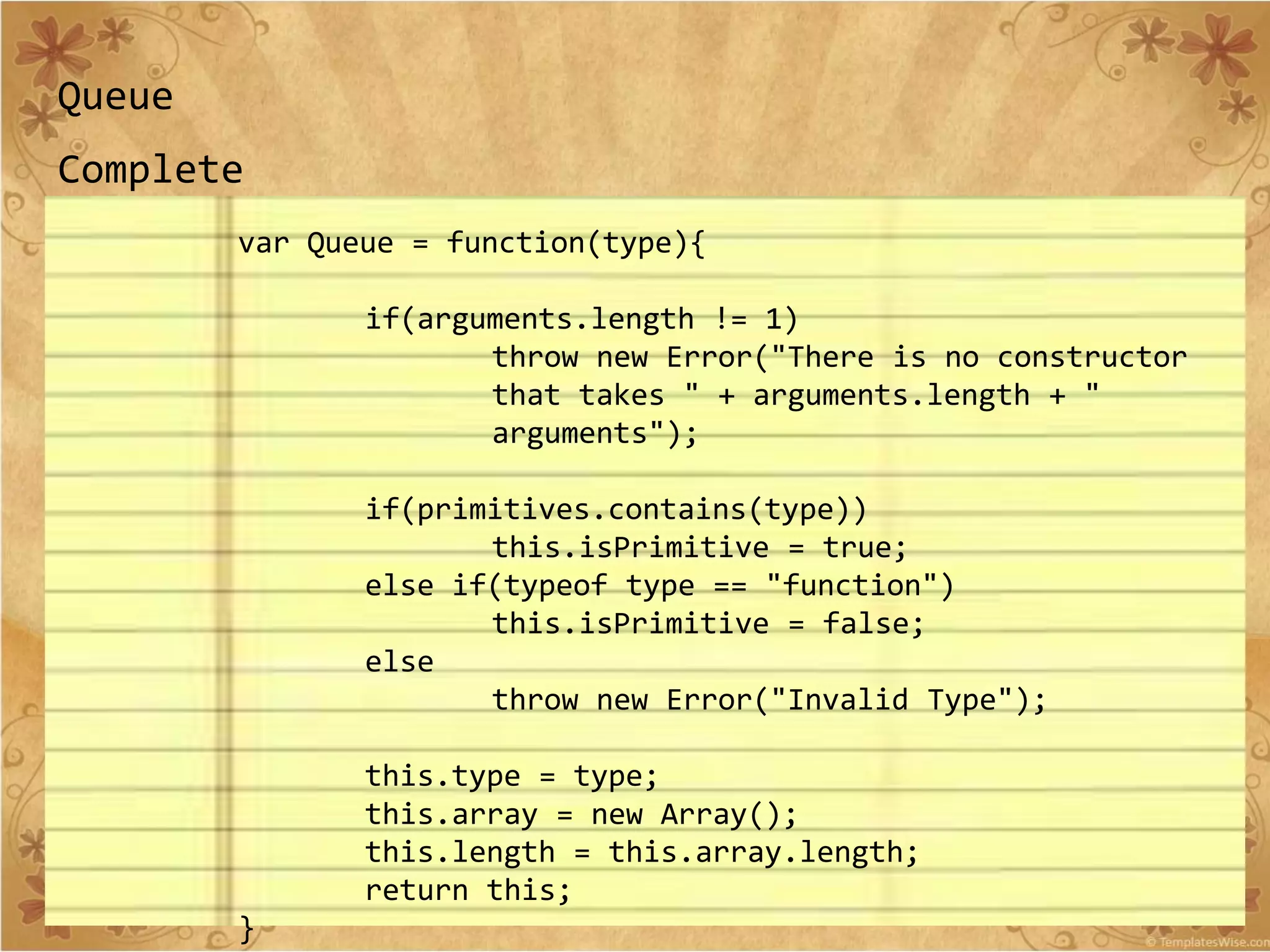
![QueueCompleteQueue.prototype.constructor = Queue;Queue.prototype.enter = function(){var is Valid;for(var i = 0, j = arguments.length; i < j;i++){isValid = this.isPrimitive ? (this.type.toLowerCase() == typeofarguments[i]): (arguments[i] instanceof this.type);if(!isValid)throw new Error("Invalid Argument");}](https://image.slidesharecdn.com/extendingjavascriptpartone-100822092752-phpapp01/75/Extending-javascript-part-one-84-2048.jpg)
![QueueComplete for(var i = 0, j = arguments.length; i < j;i++){ this.array.push(arguments[i]); } this.length = this.array.length; return this.array.length;}Queue.prototype.exit = function(){ this.array.remove(0); this.length = this.array.length; return this.length;}Queue.prototype.getValue = function(index){ return this.array[index];}](https://image.slidesharecdn.com/extendingjavascriptpartone-100822092752-phpapp01/75/Extending-javascript-part-one-85-2048.jpg)
![QueueCompleteQueue.prototype.setValue = function(index, value){ var isValid = this.isPrimitive ? (this.type.toLowerCase() == typeof value) : (value instanceof this.type); if(!isValid) throw new Error("Invalid Argument"); this.array[index] = value; return this.array[index];}](https://image.slidesharecdn.com/extendingjavascriptpartone-100822092752-phpapp01/75/Extending-javascript-part-one-86-2048.jpg)

